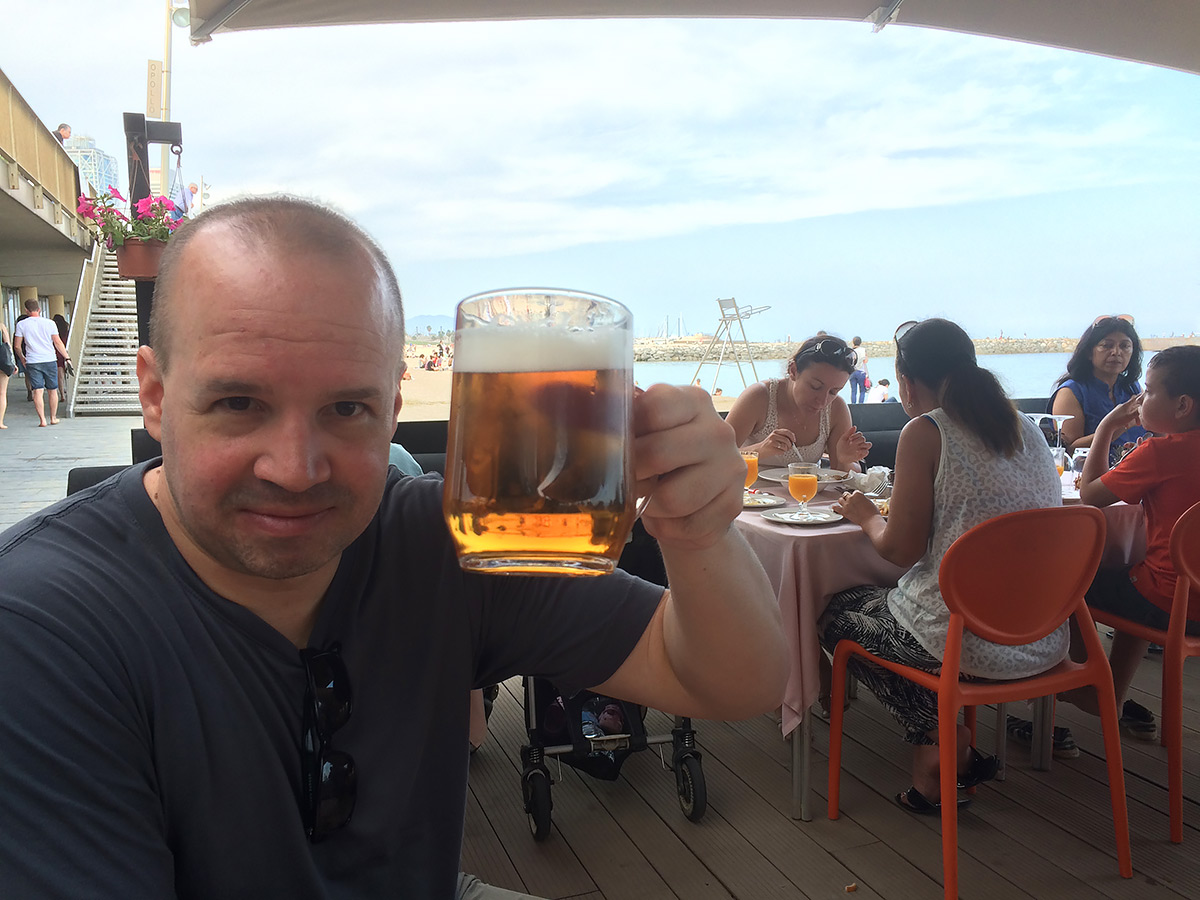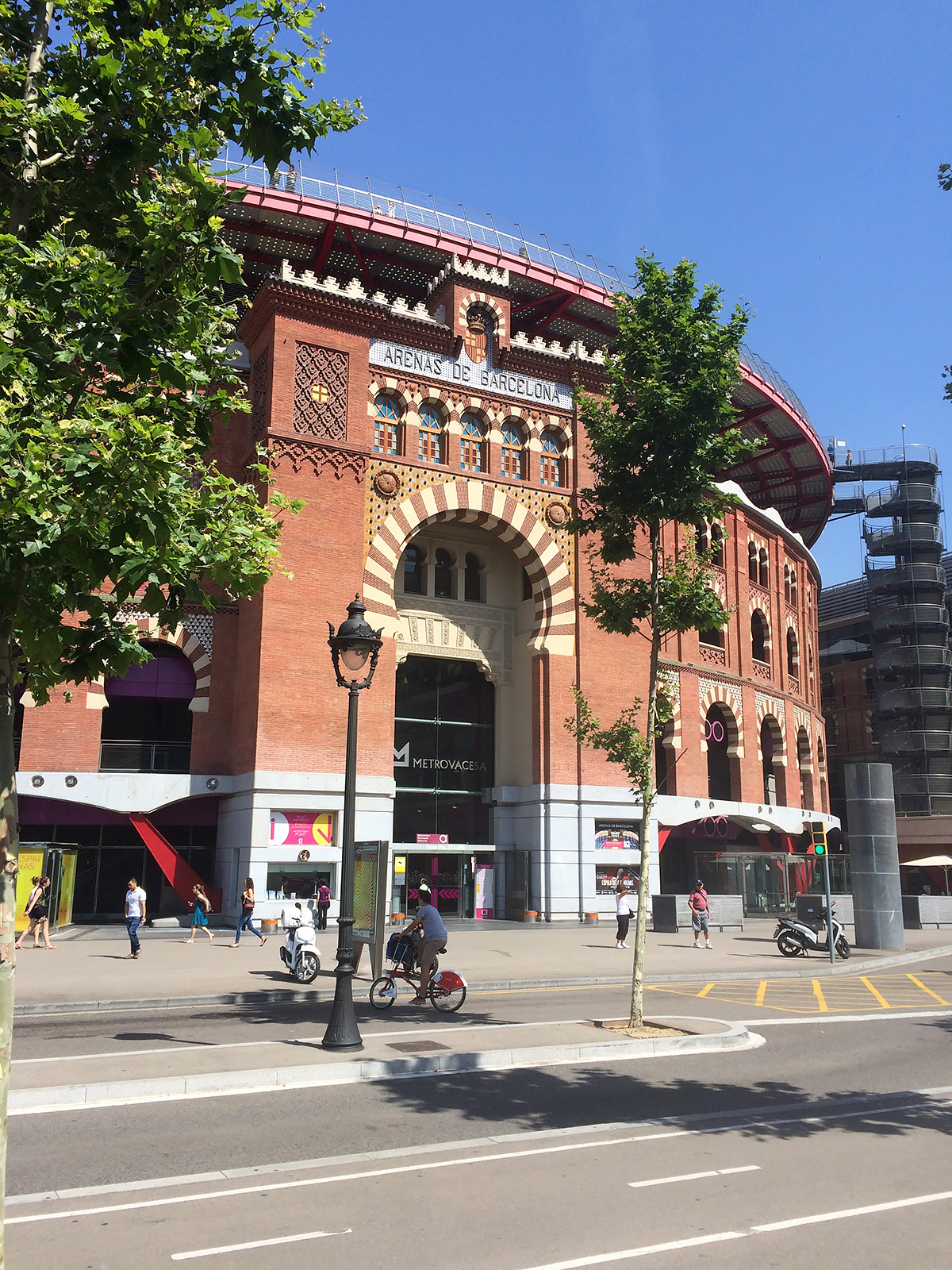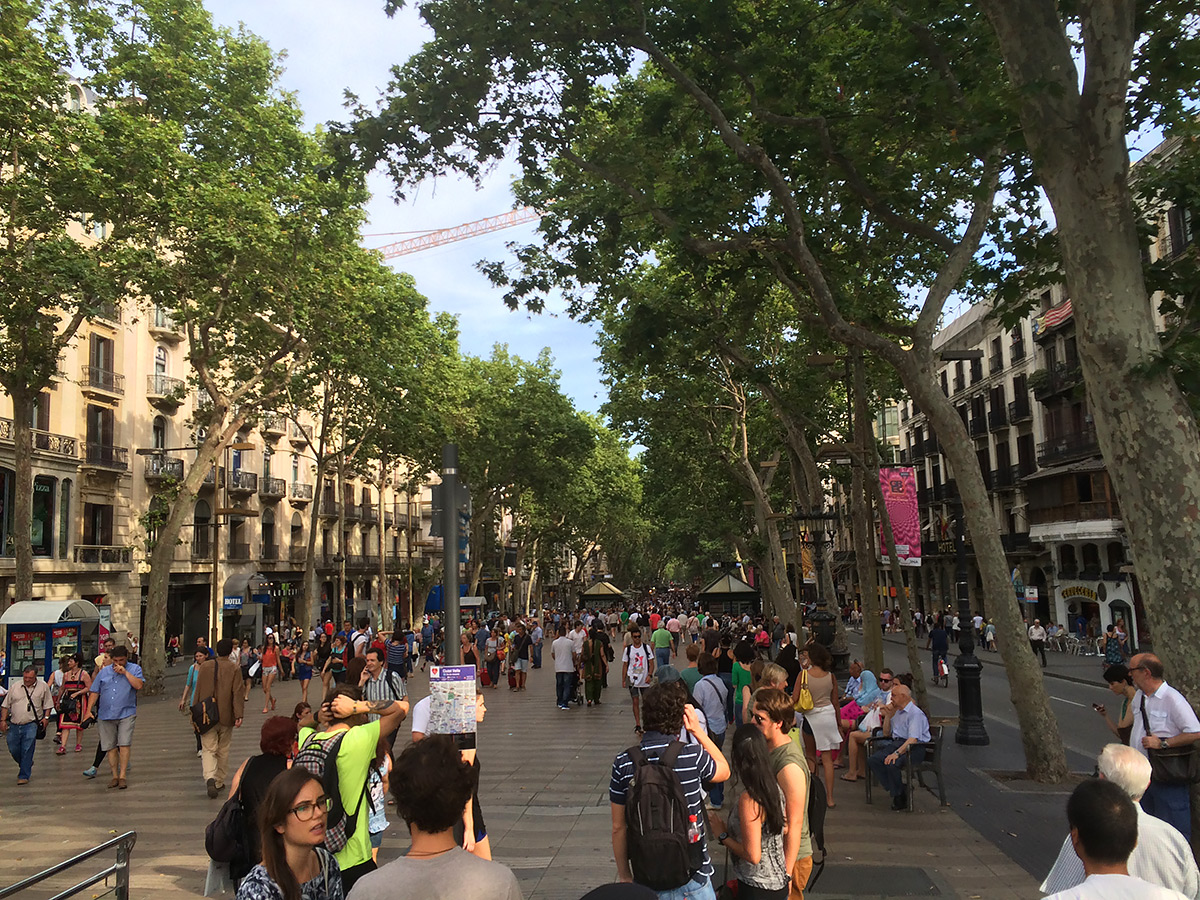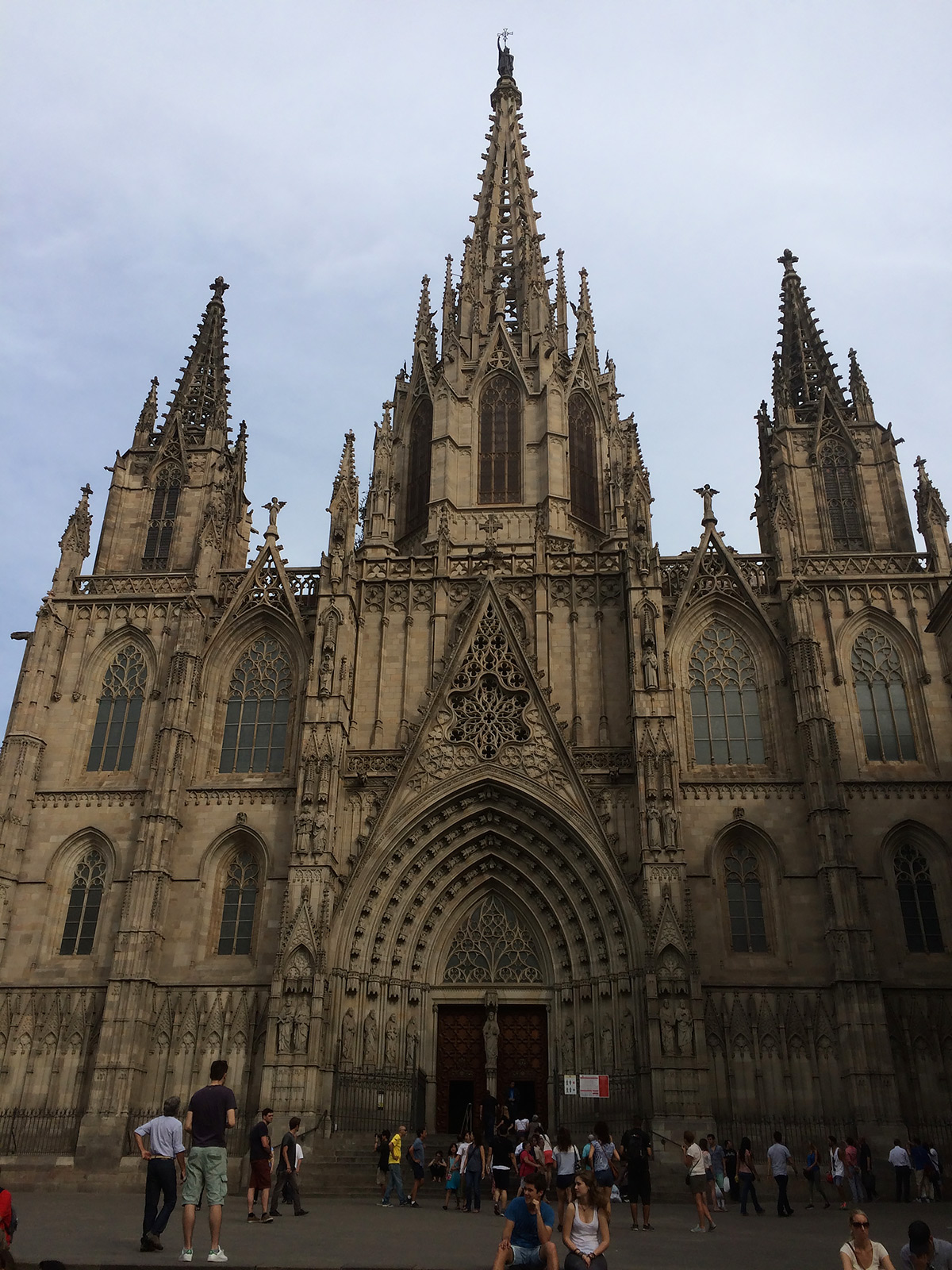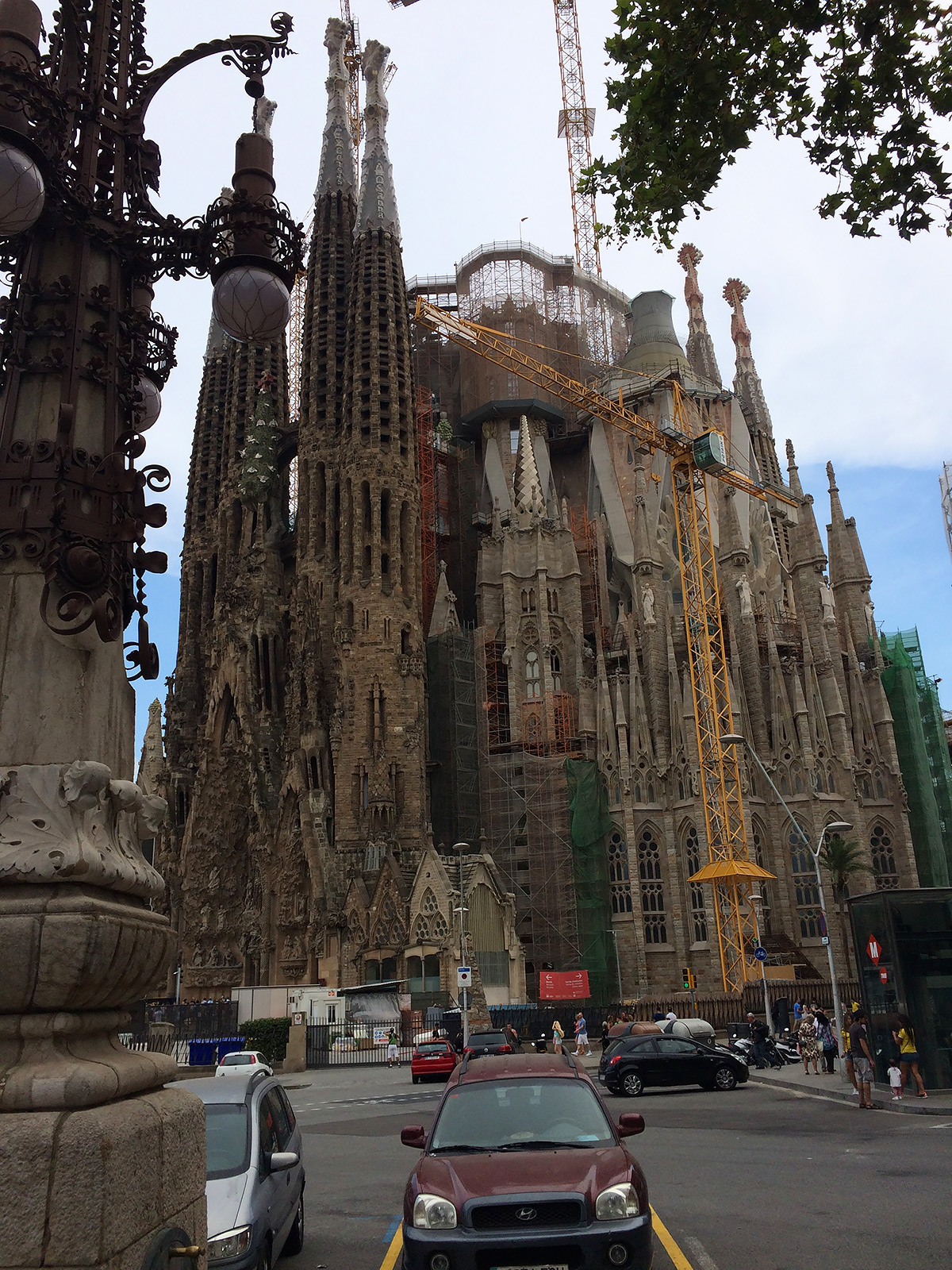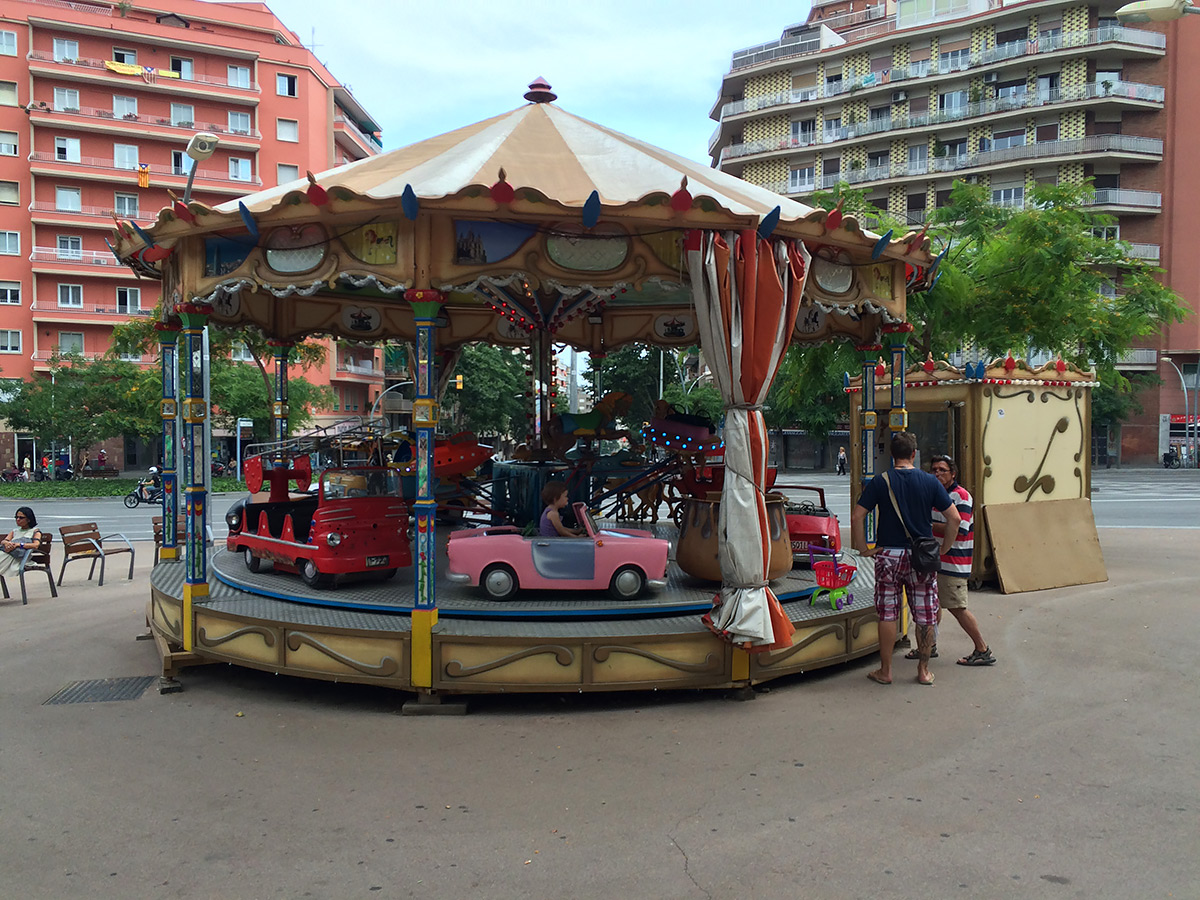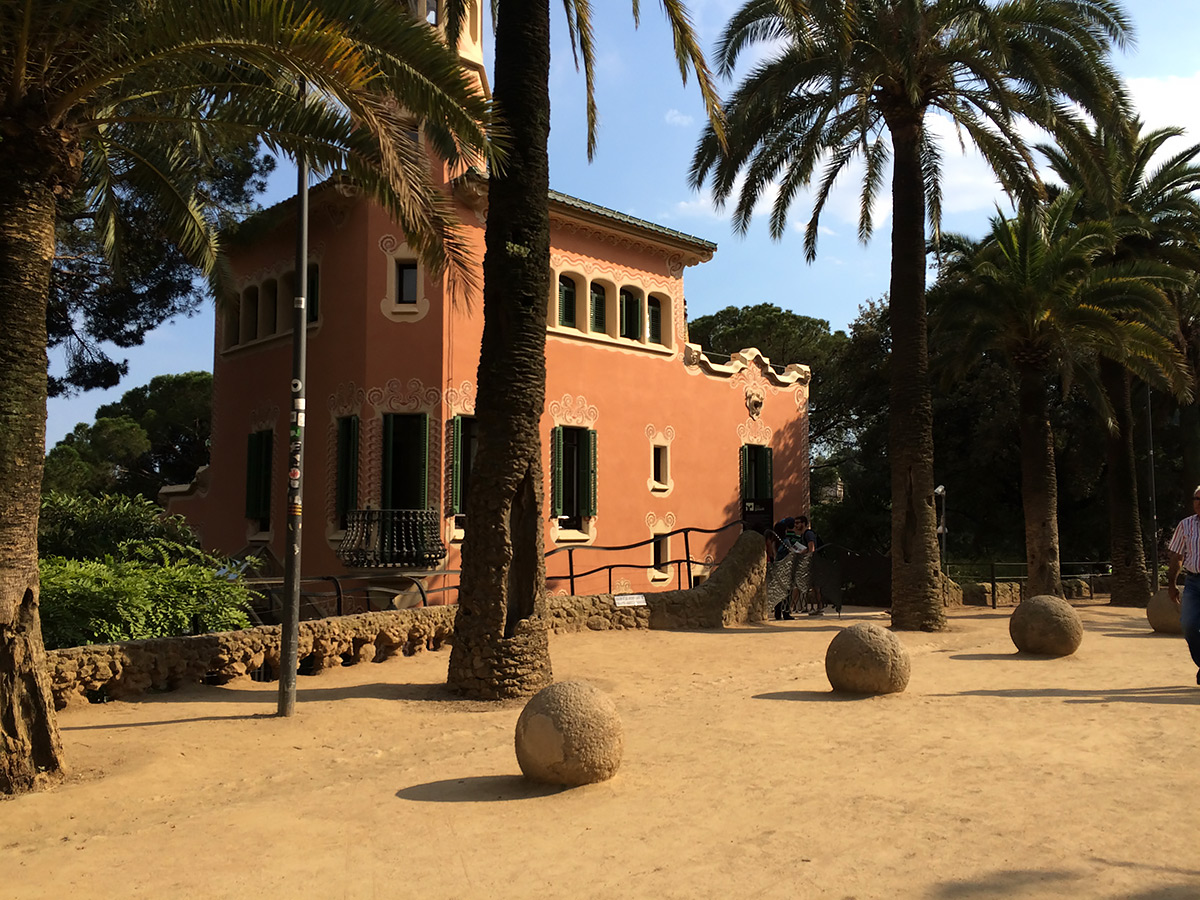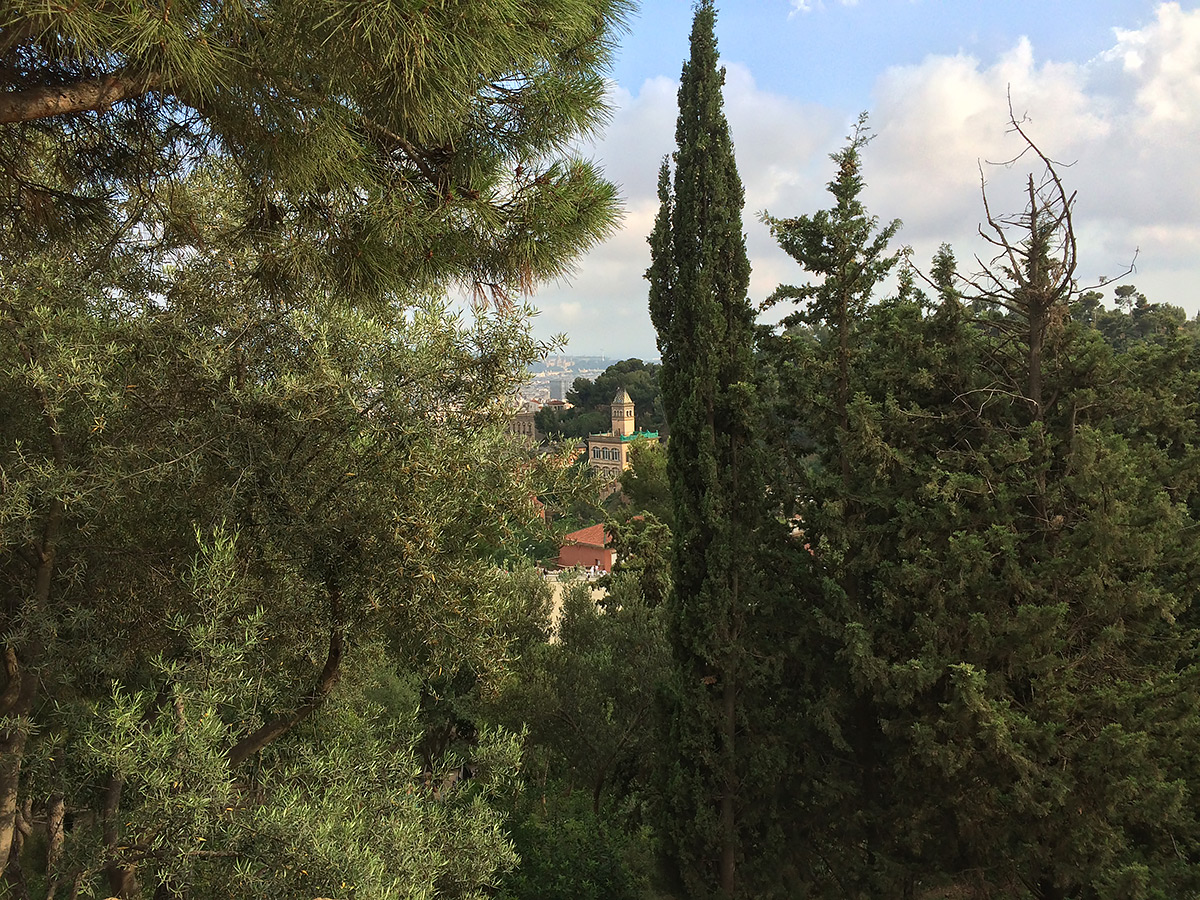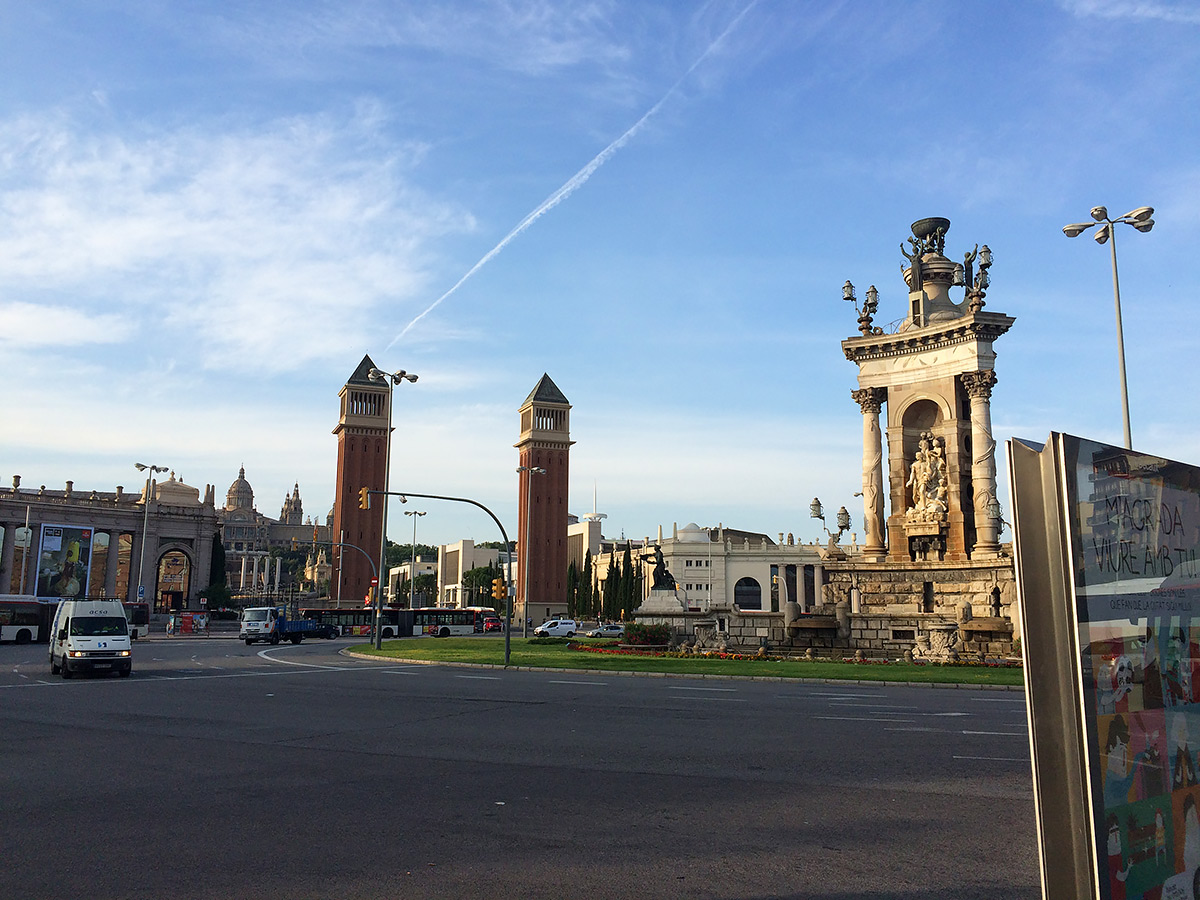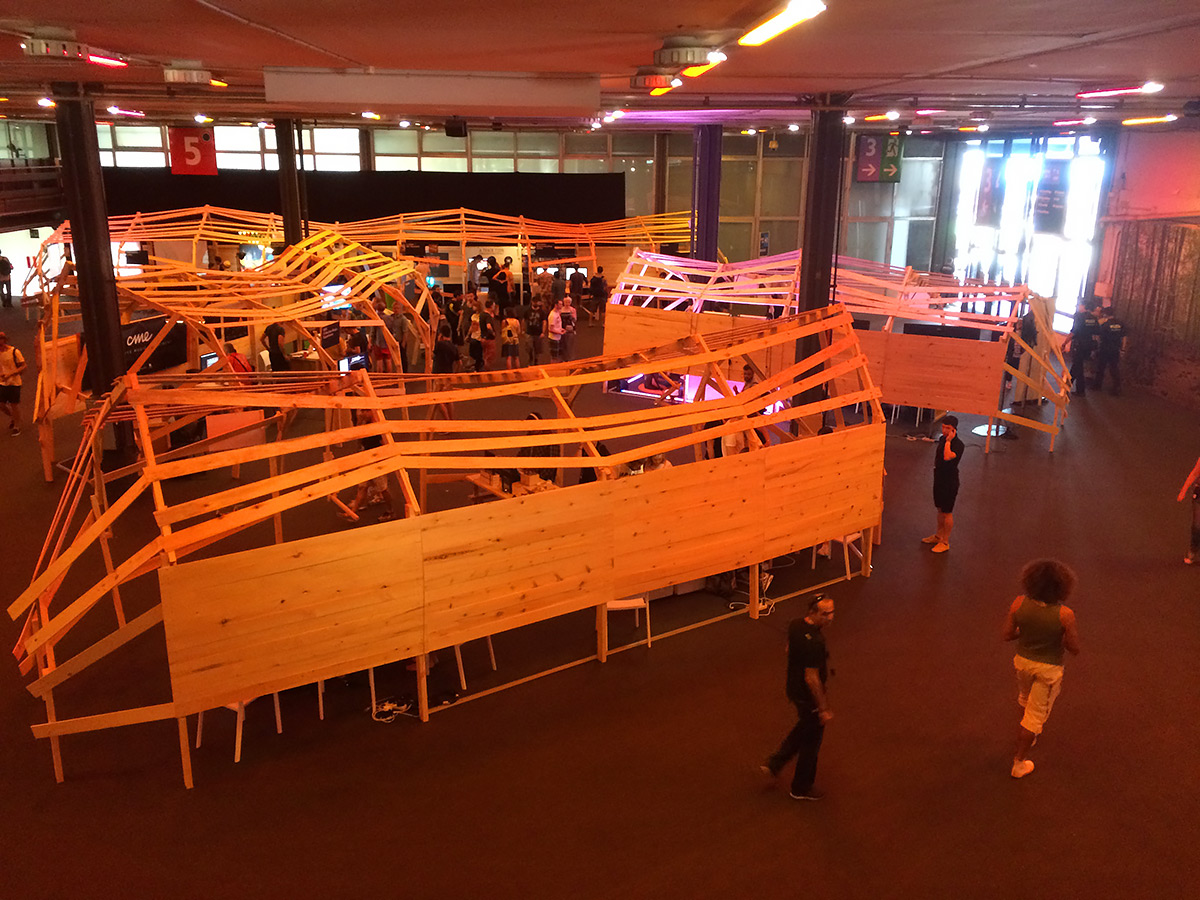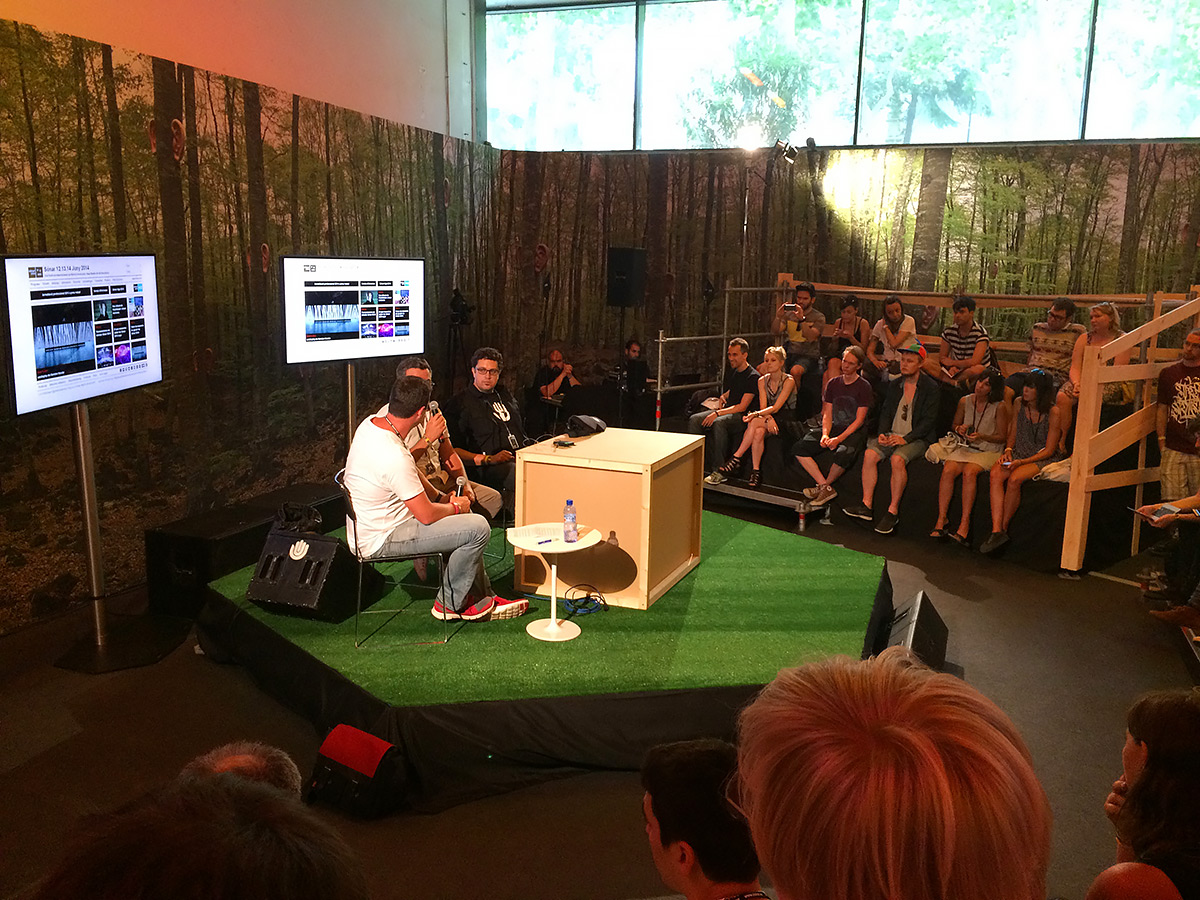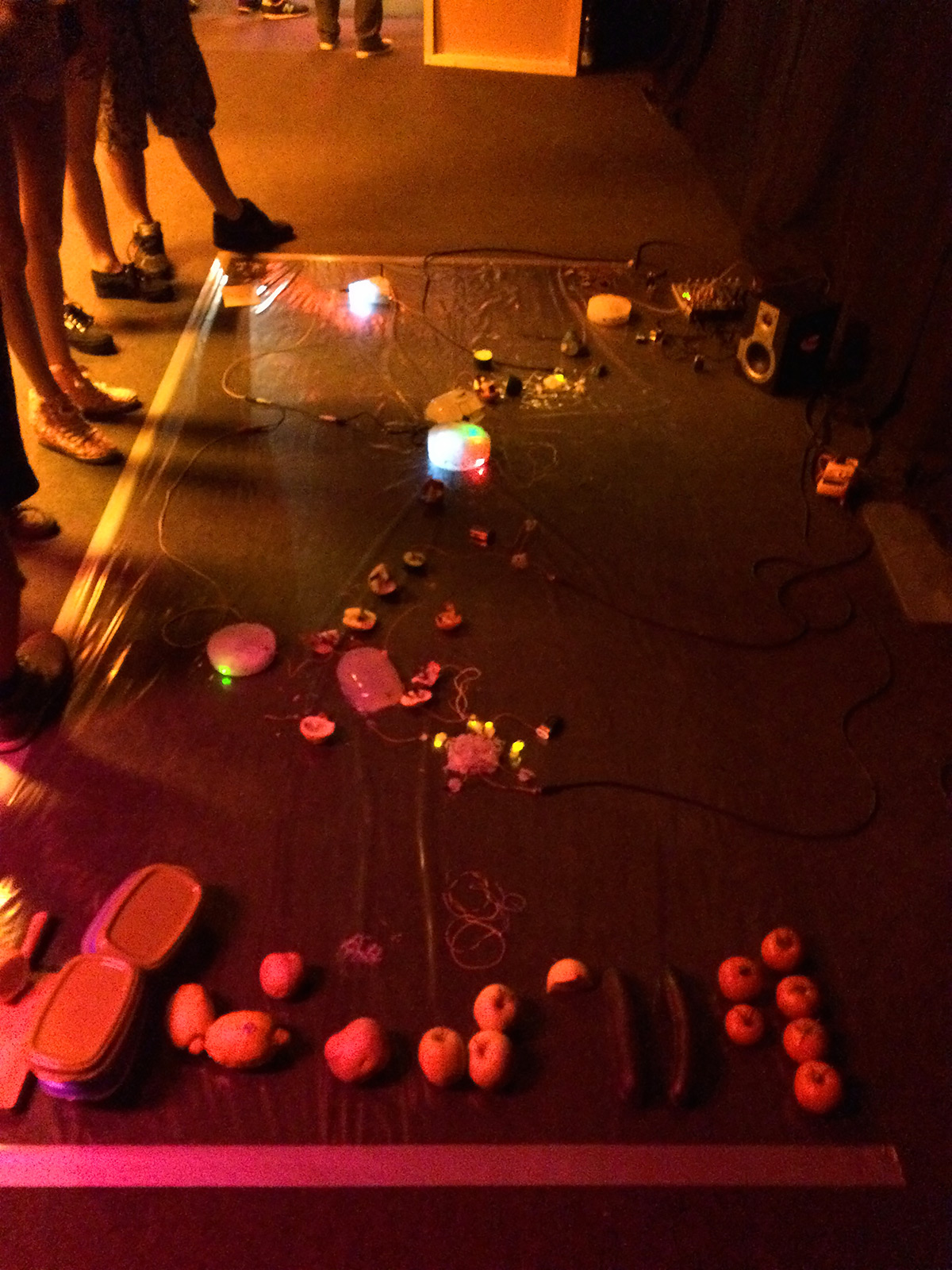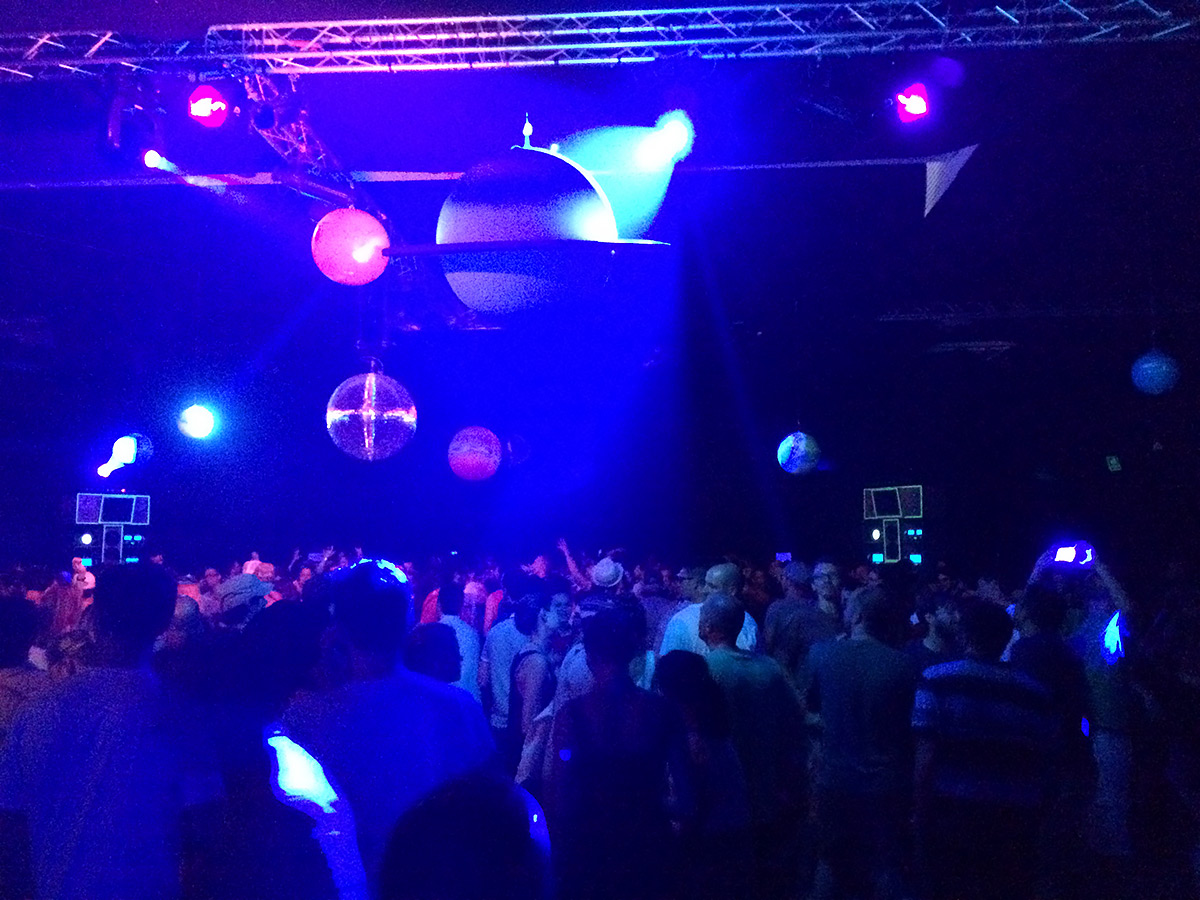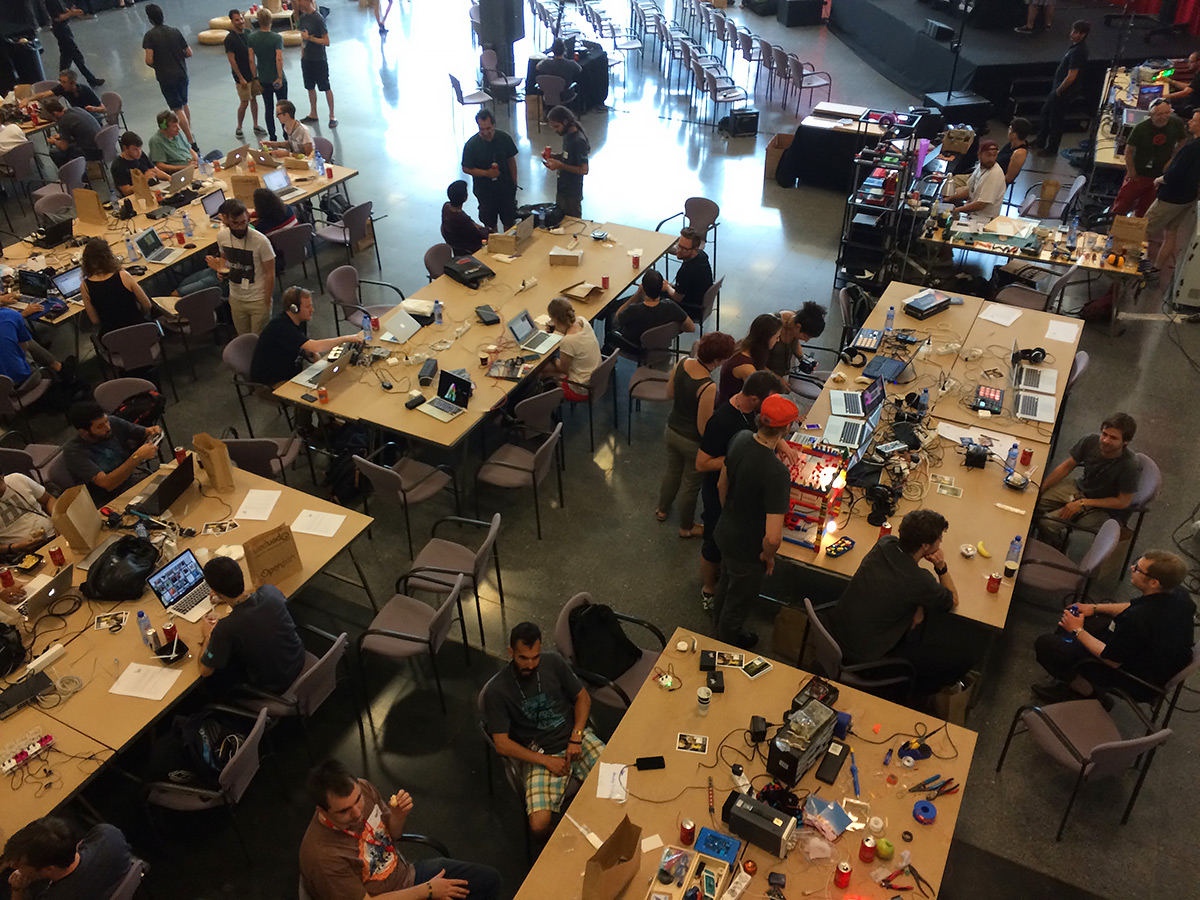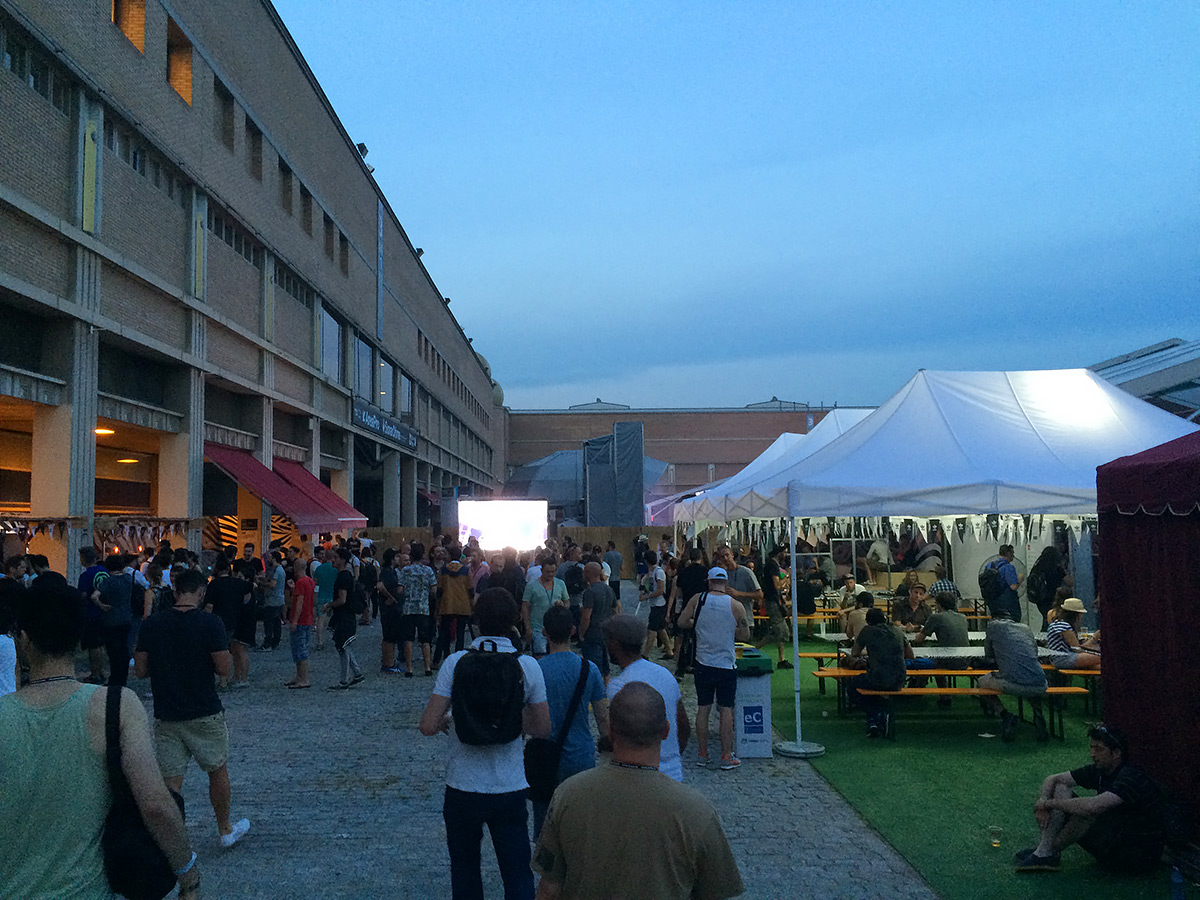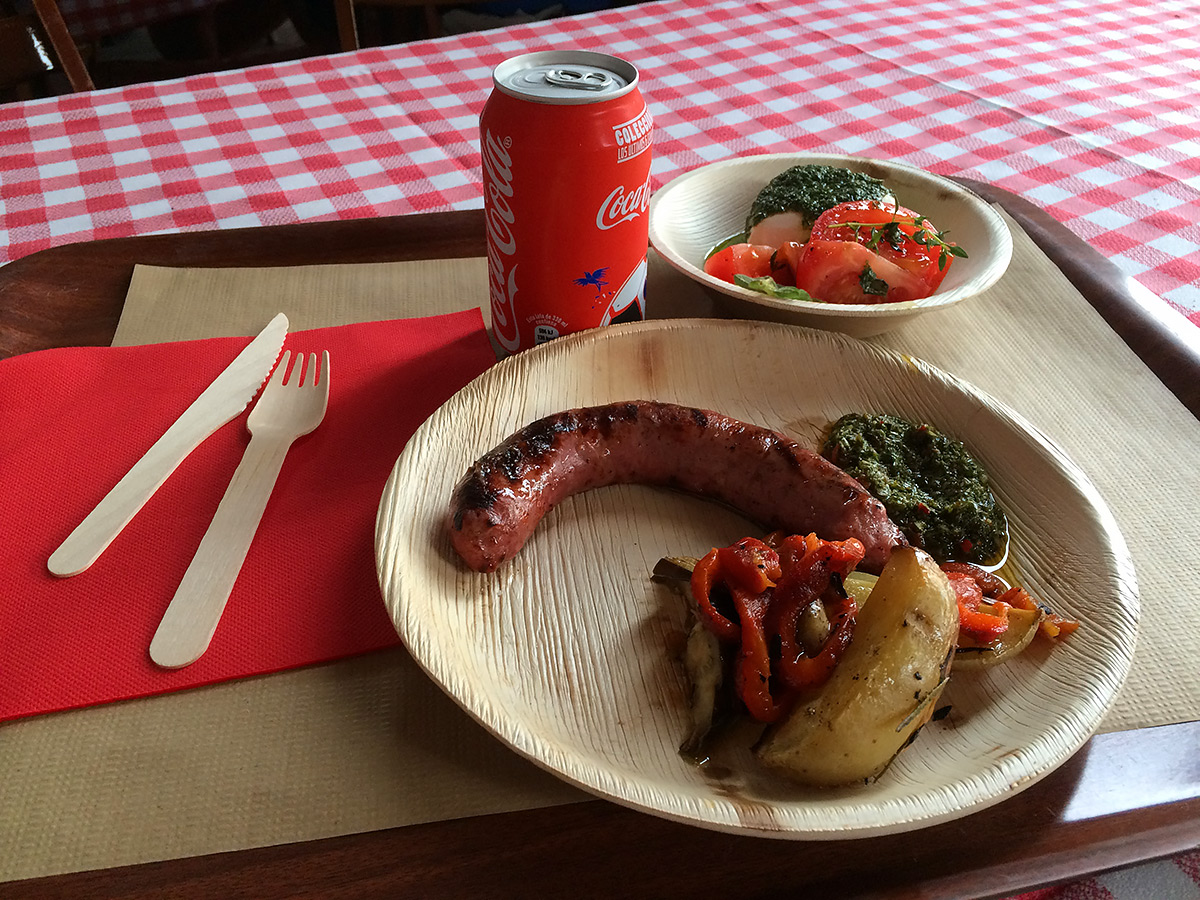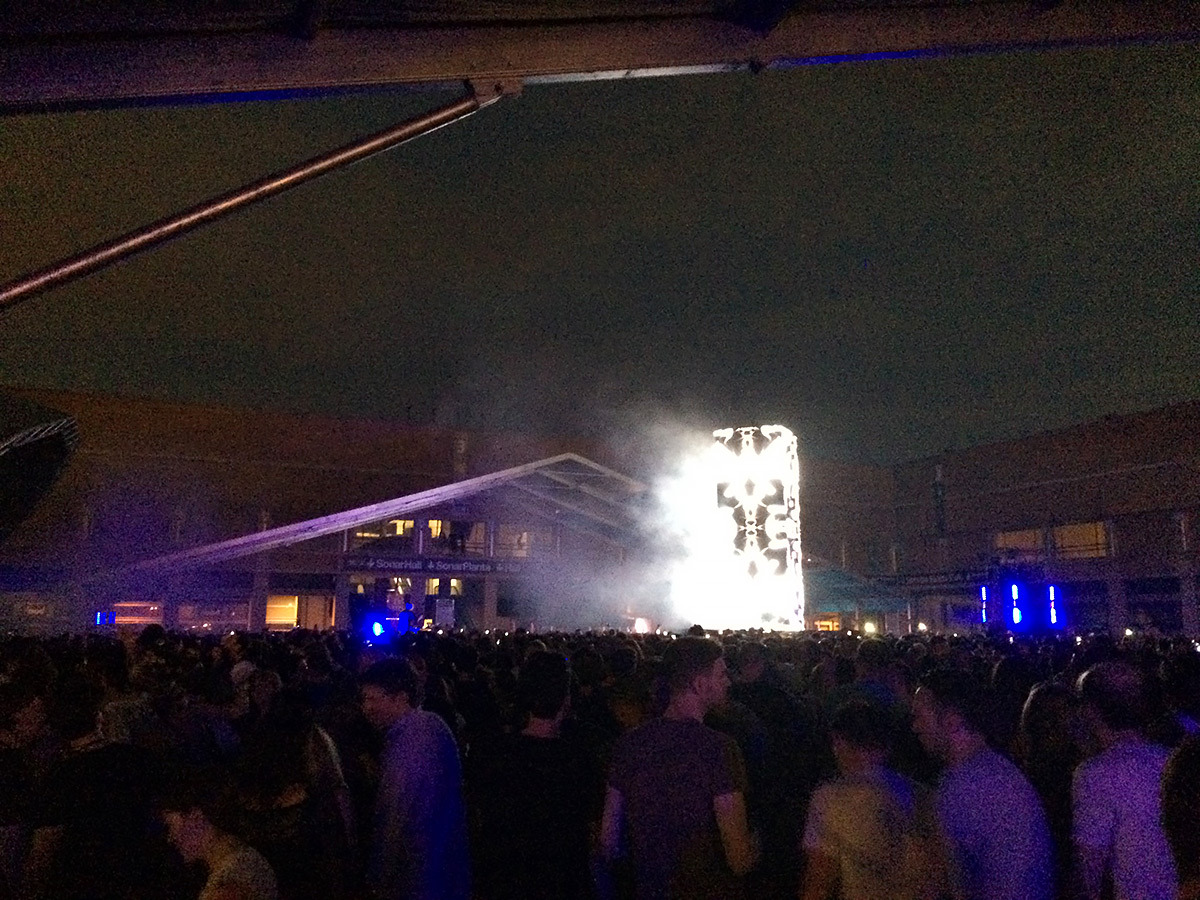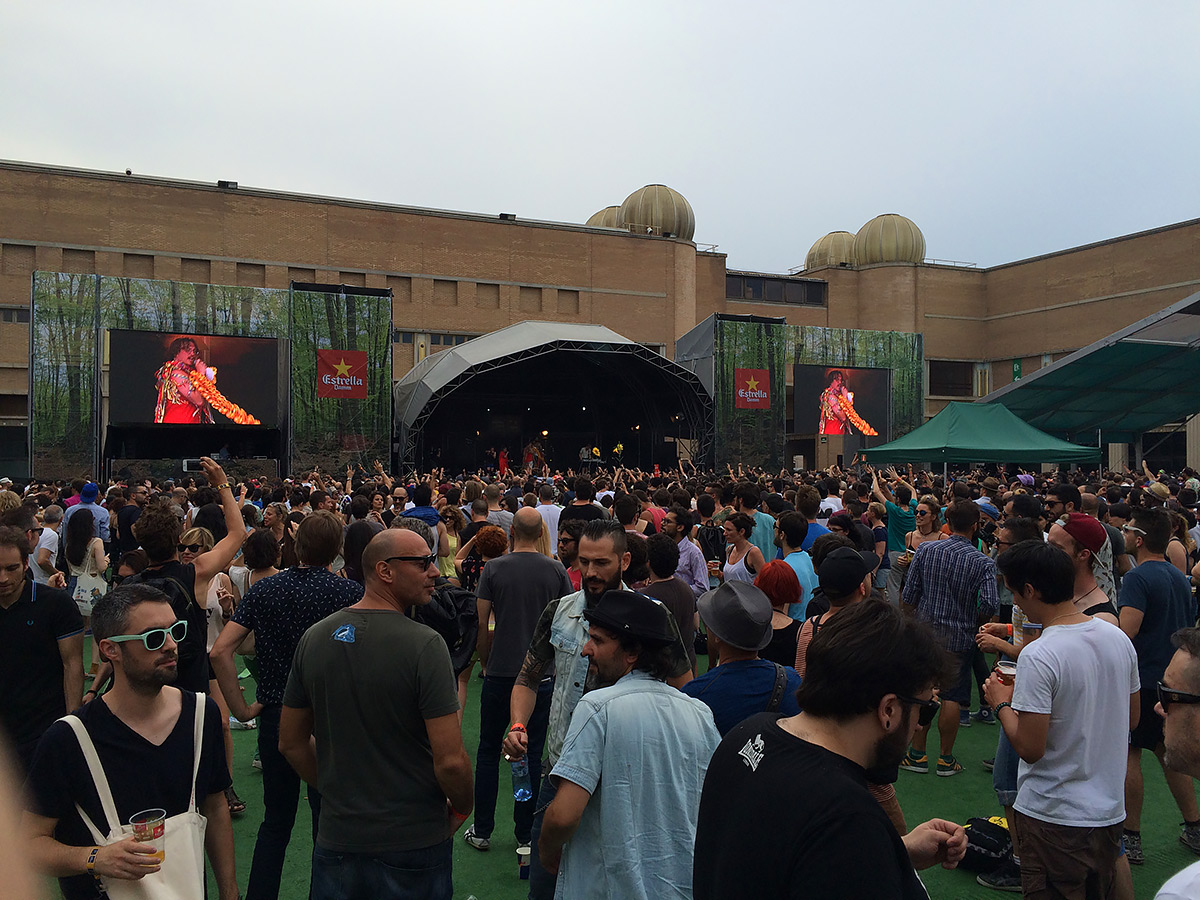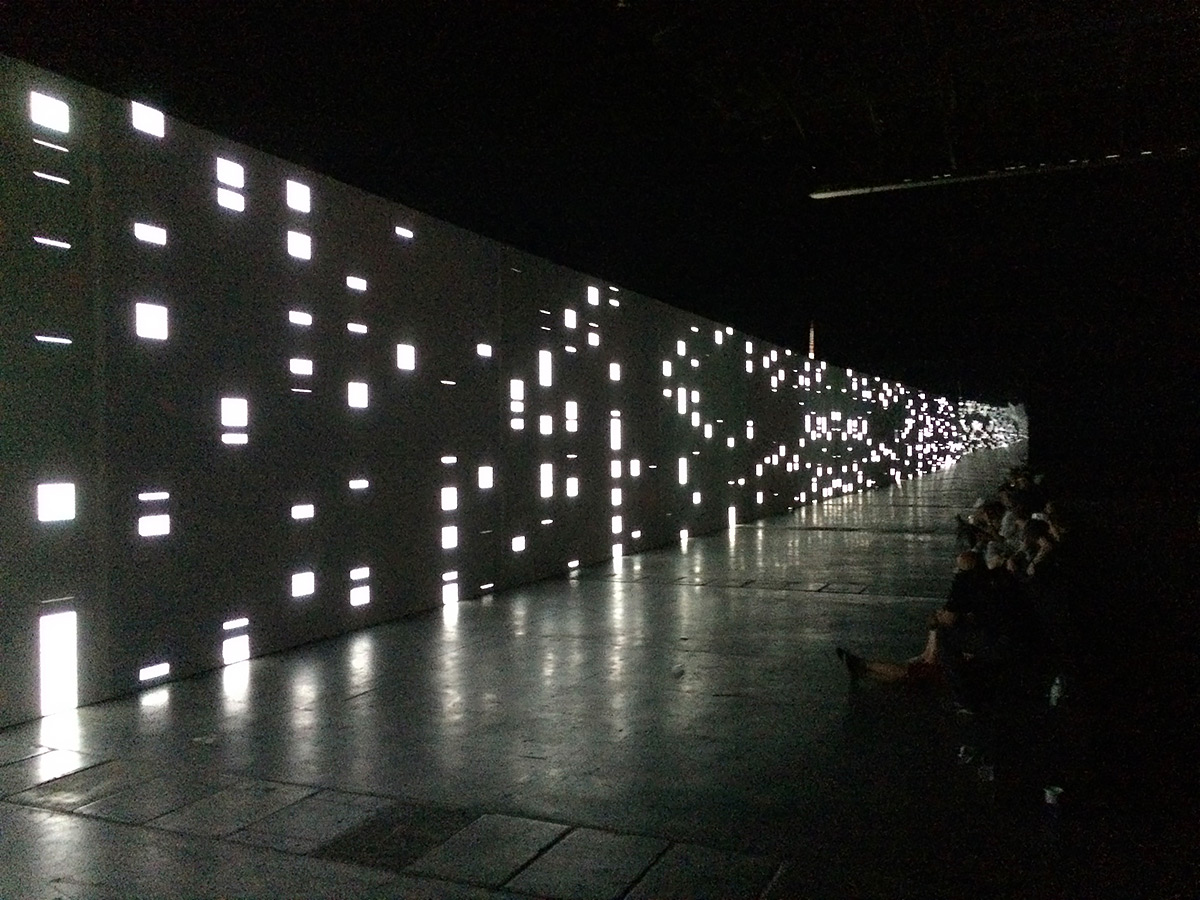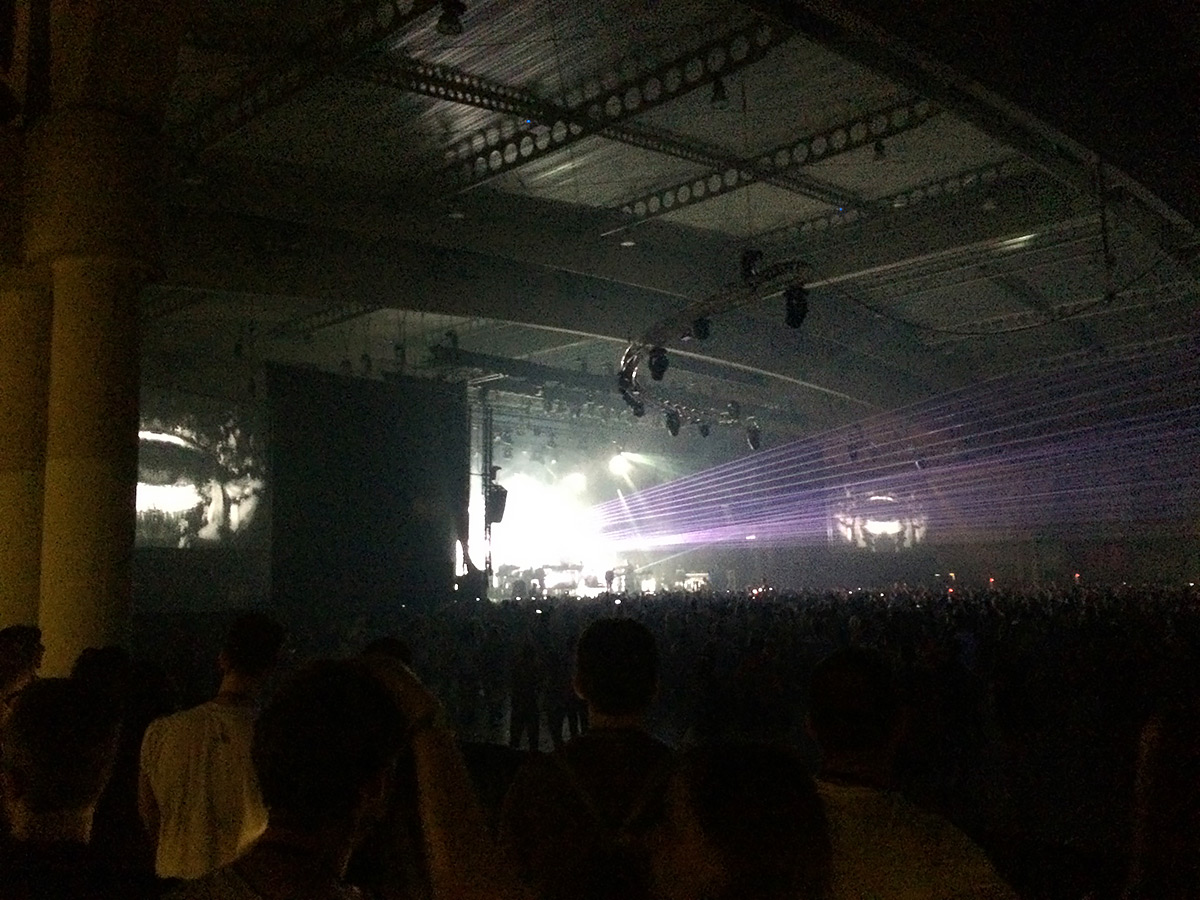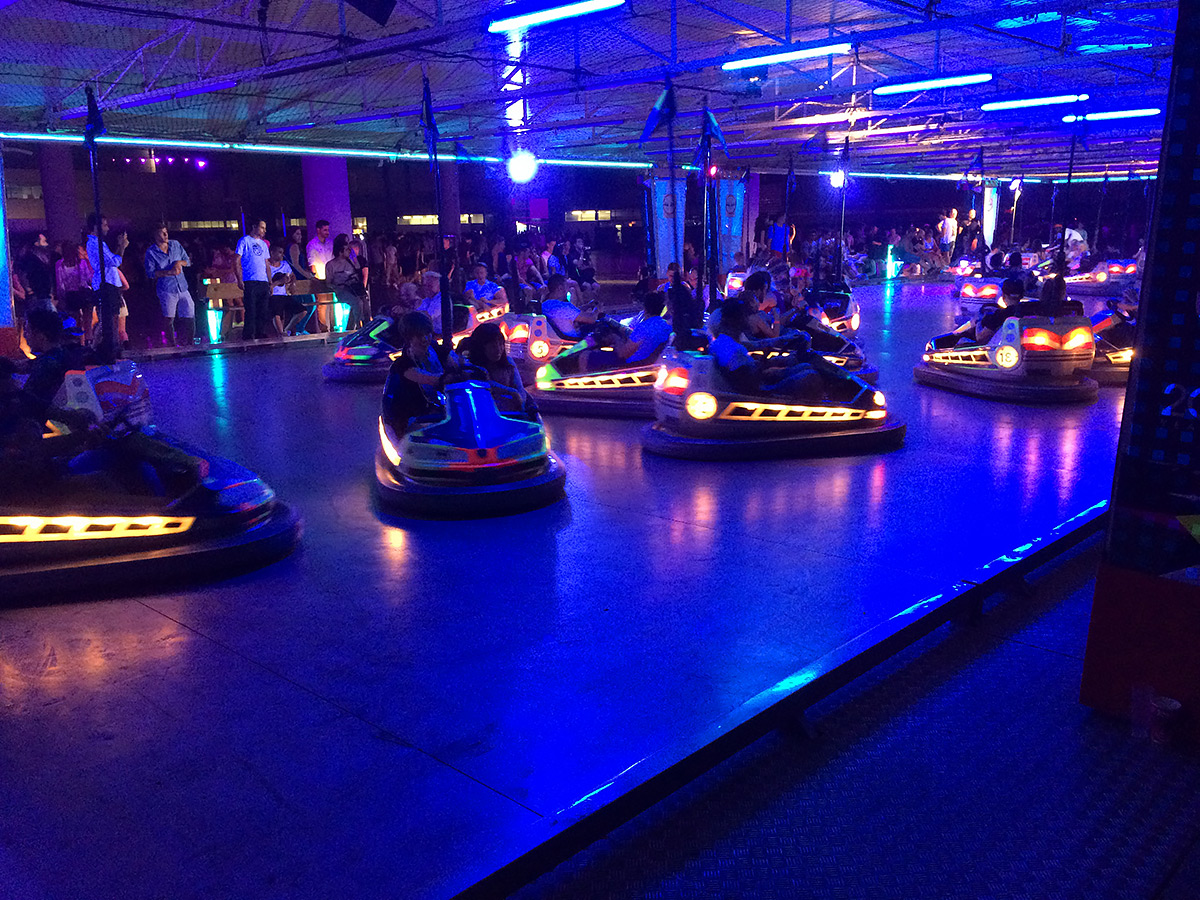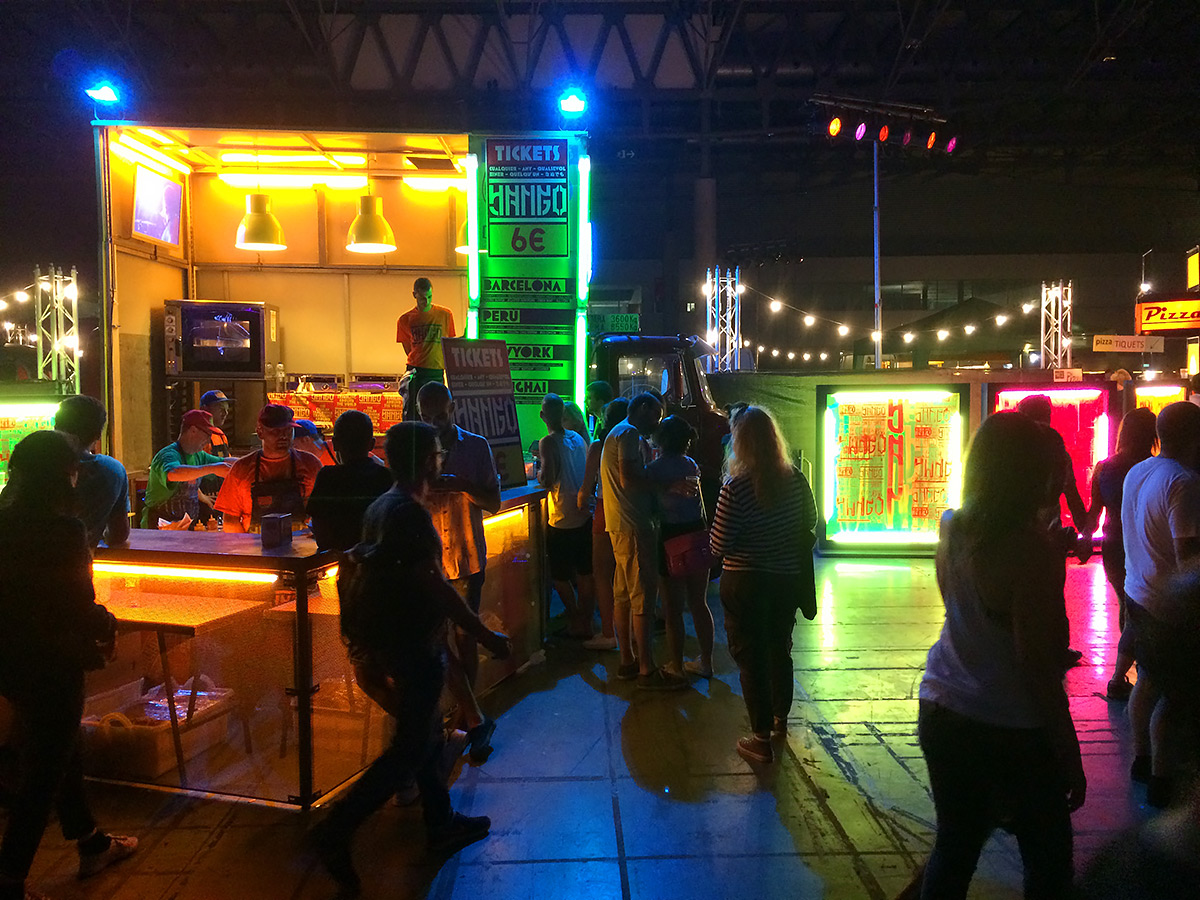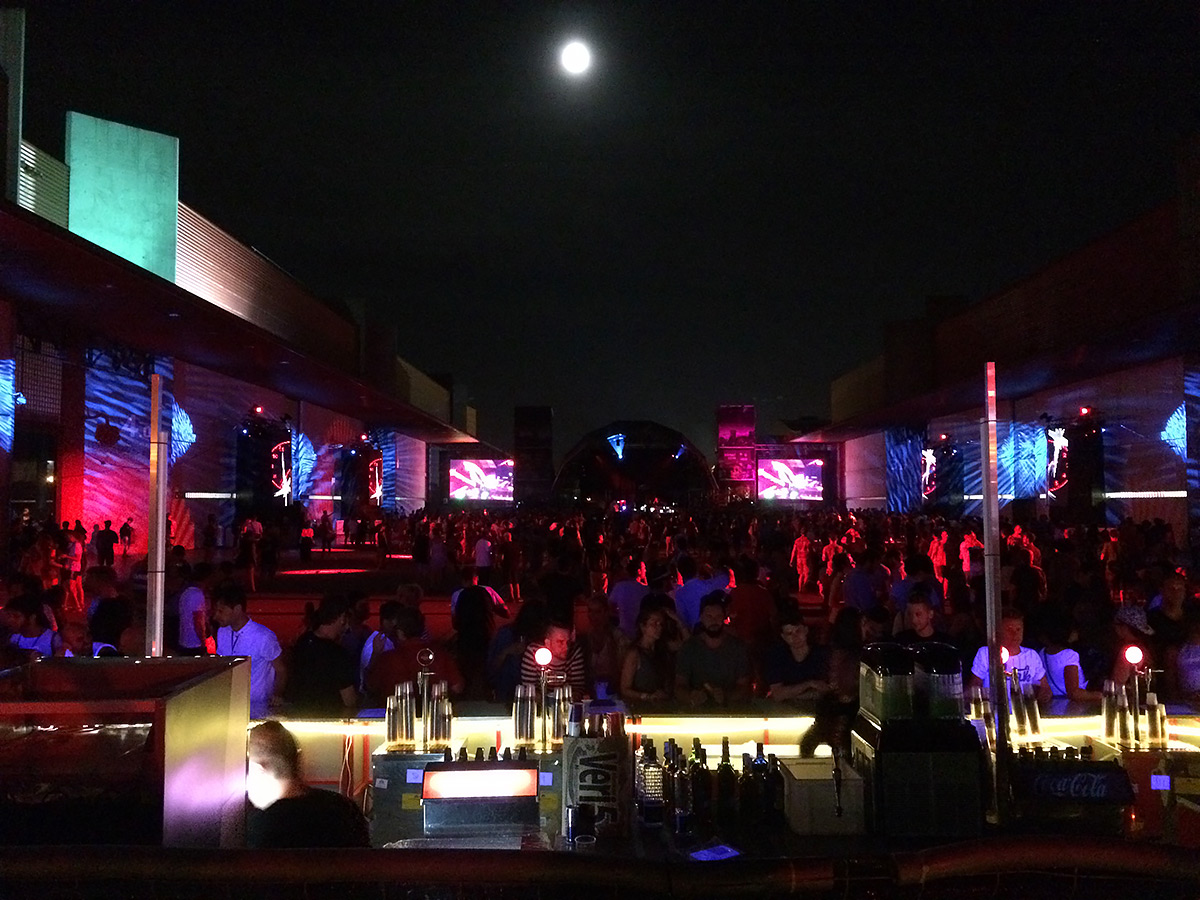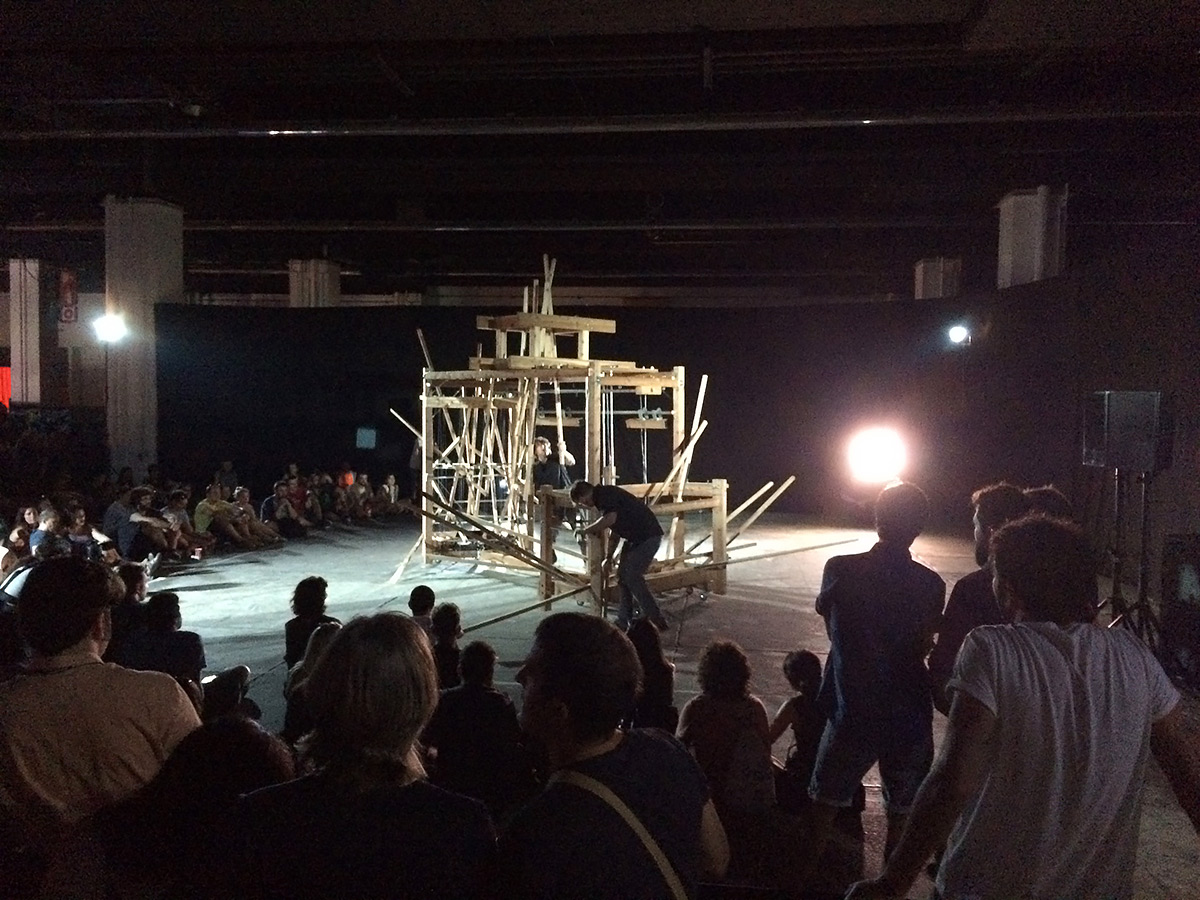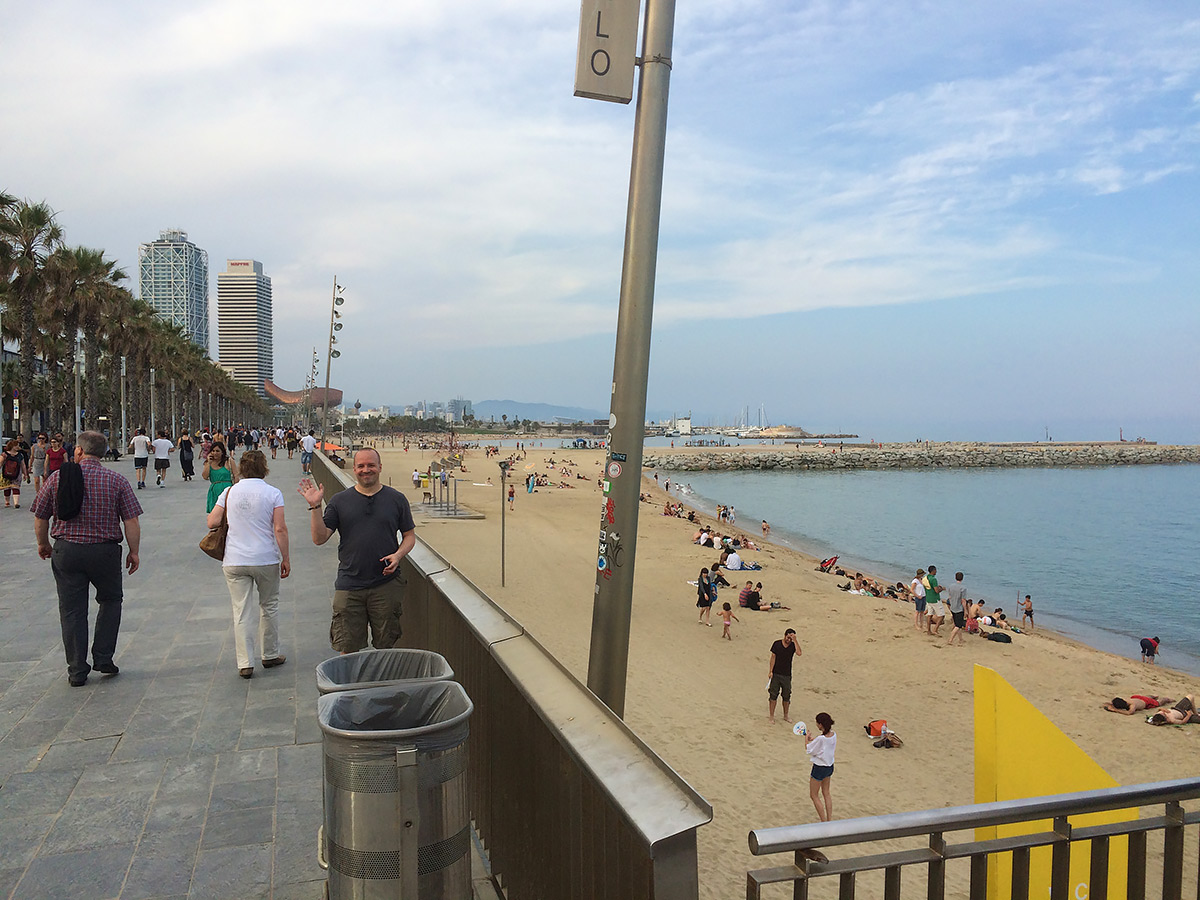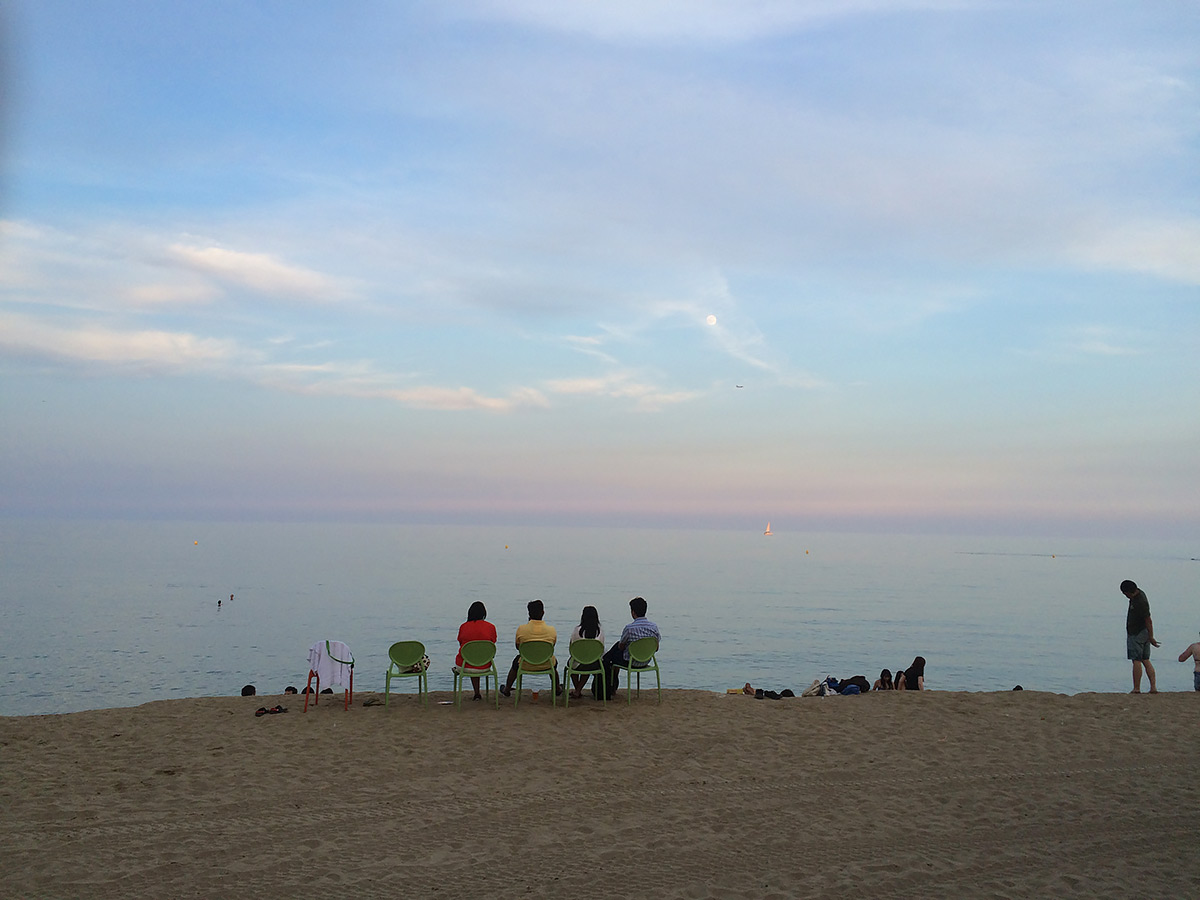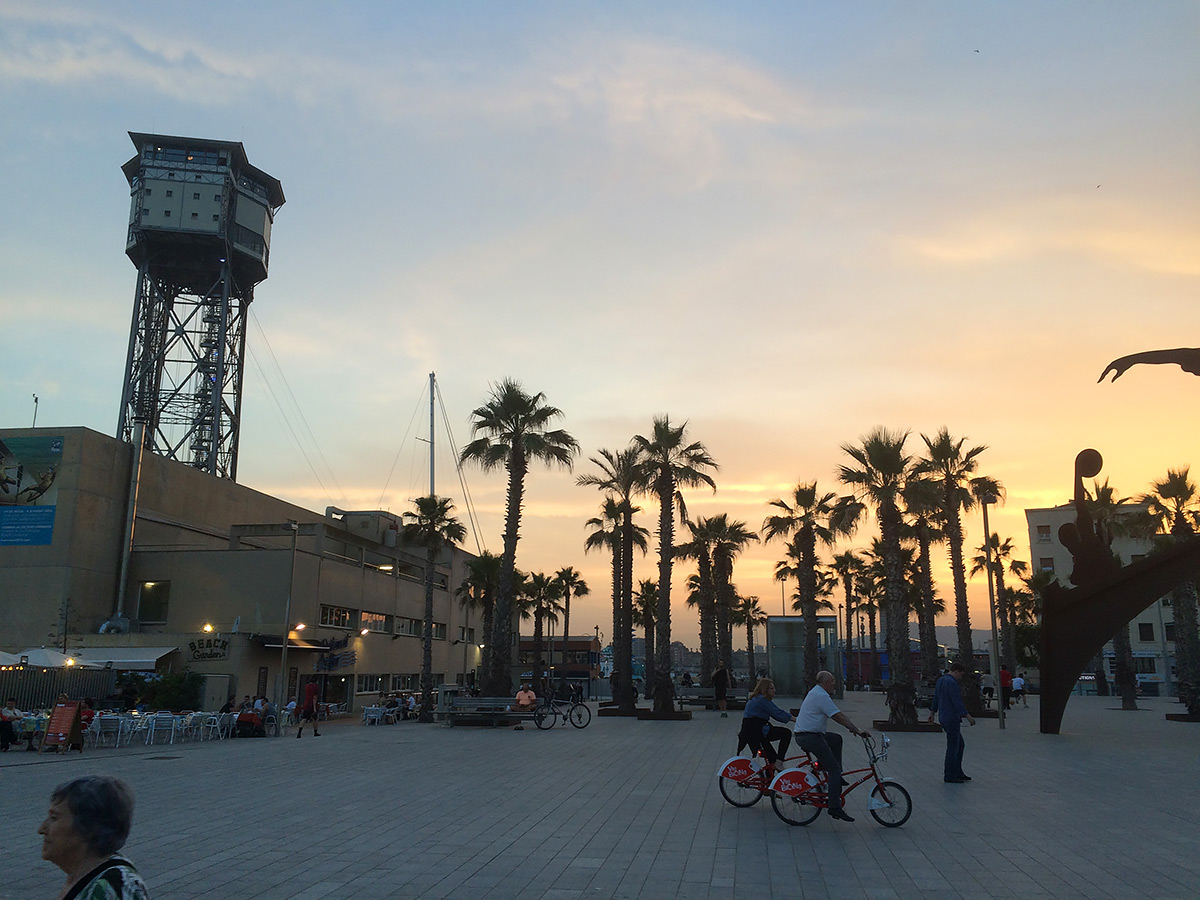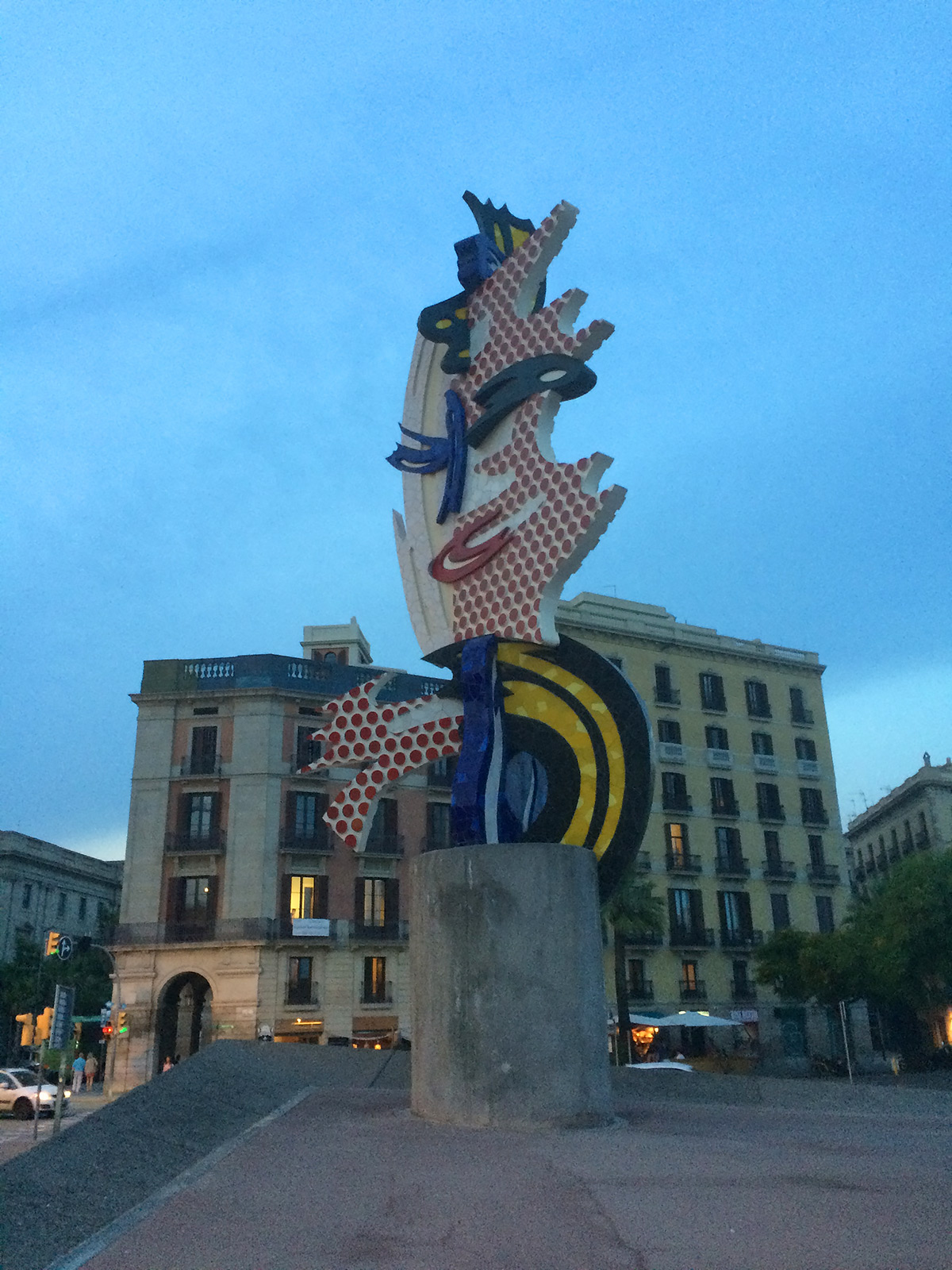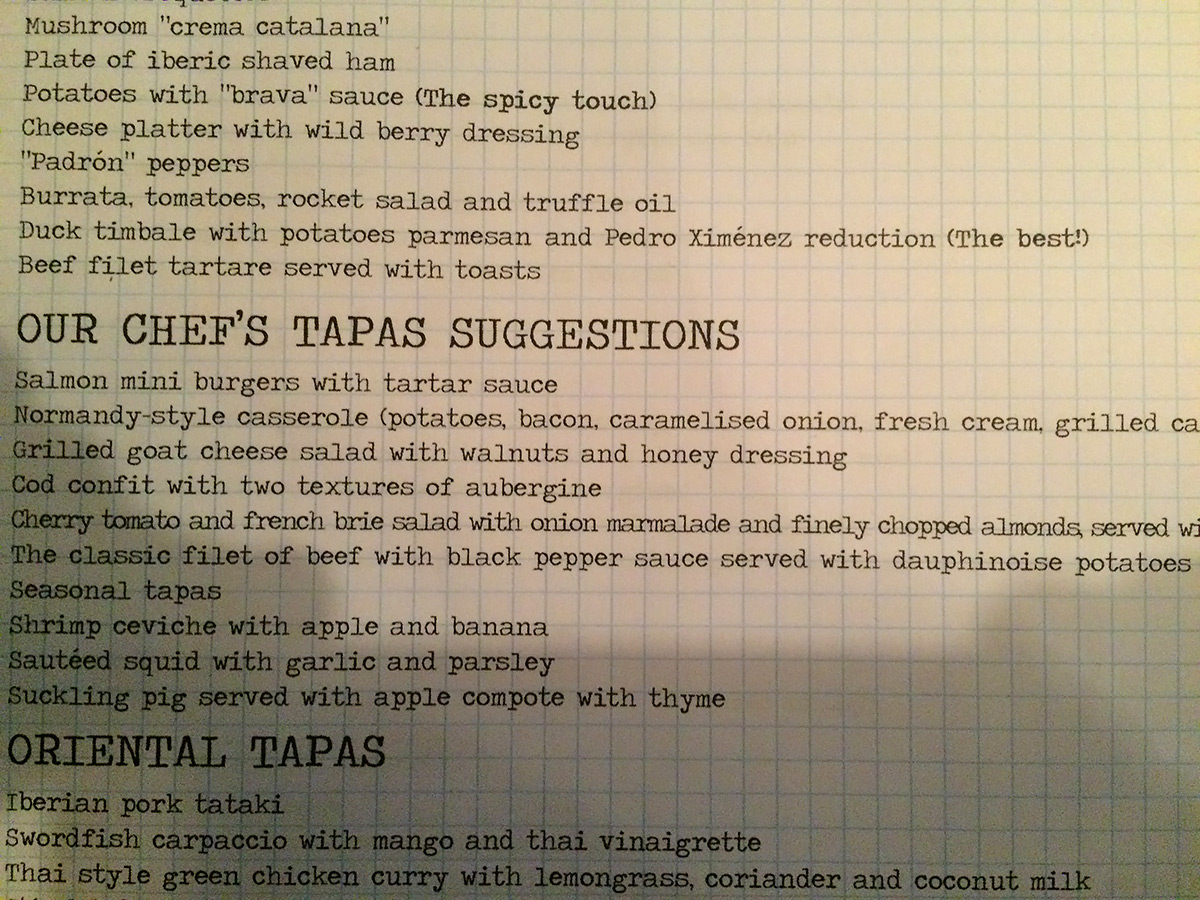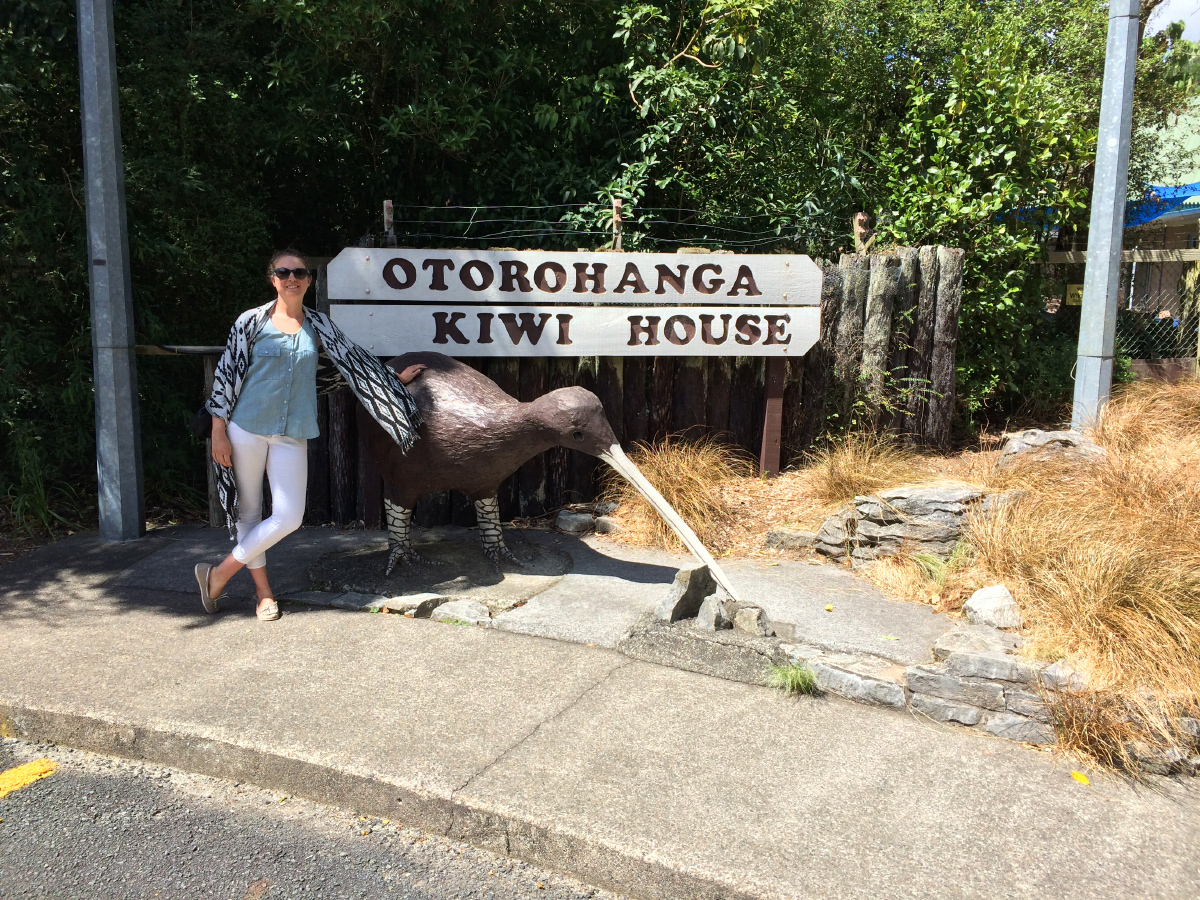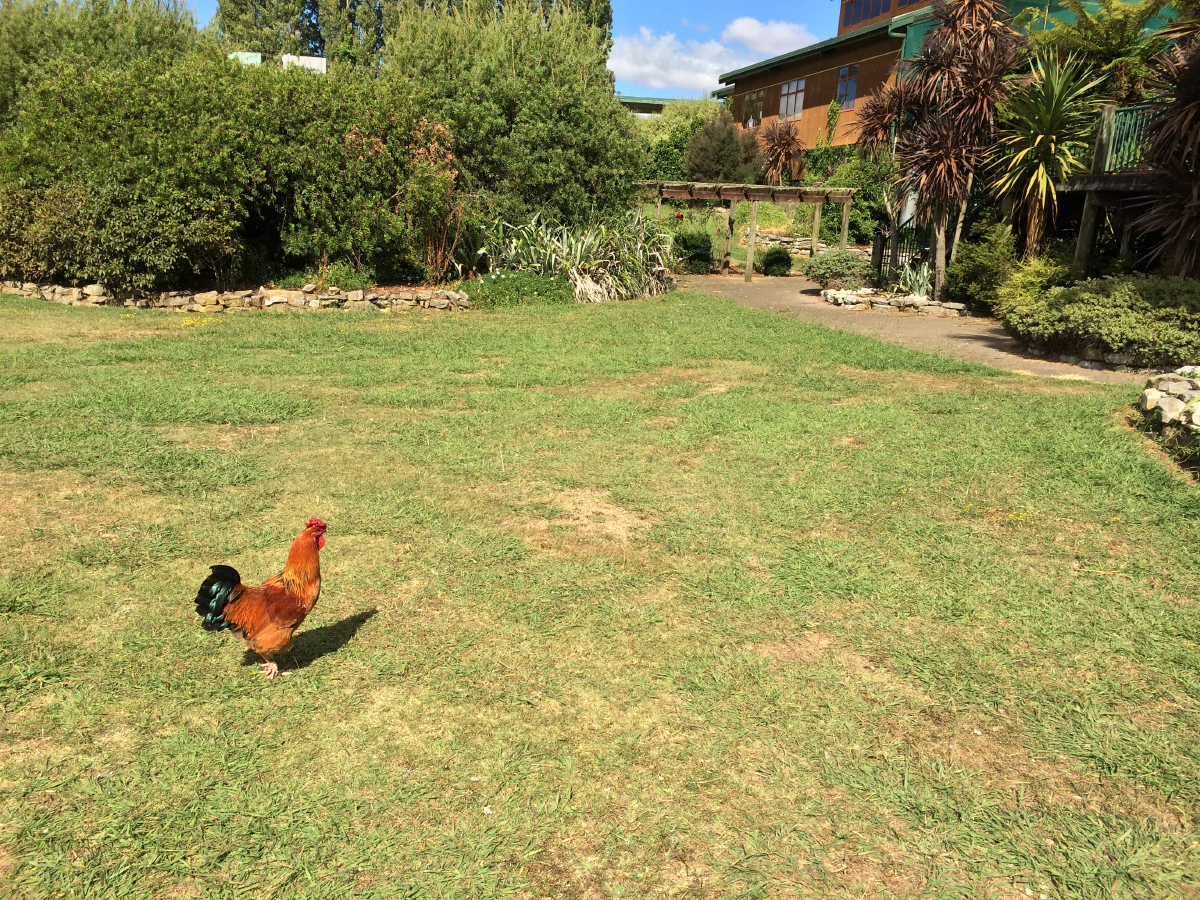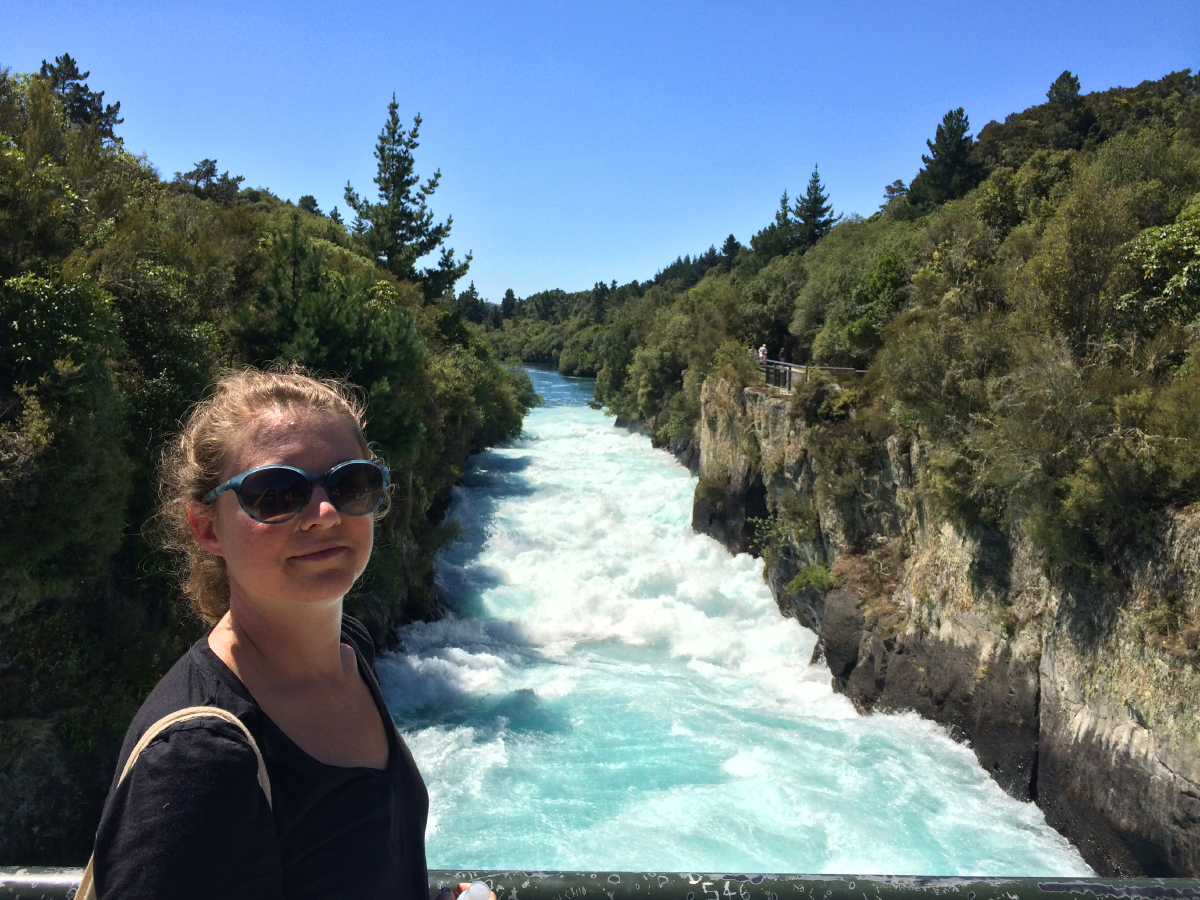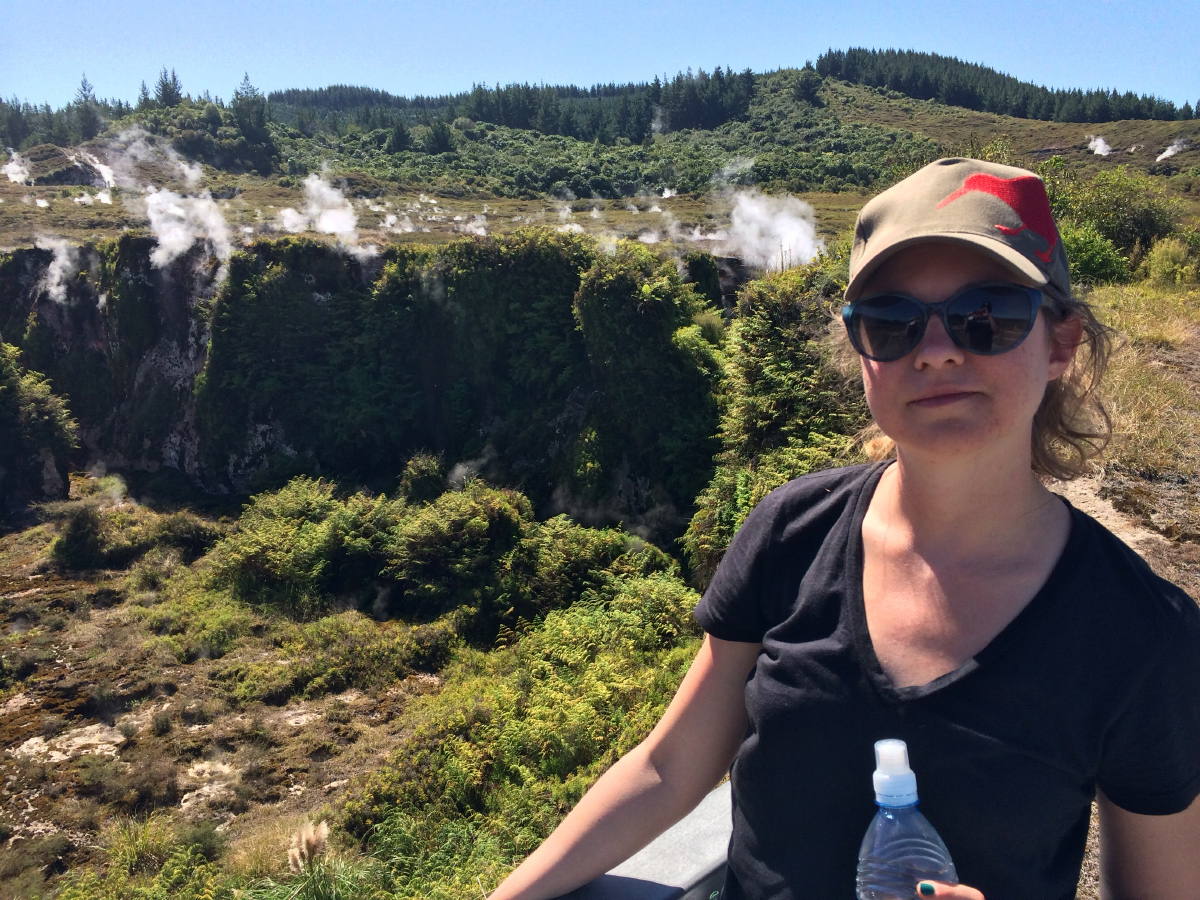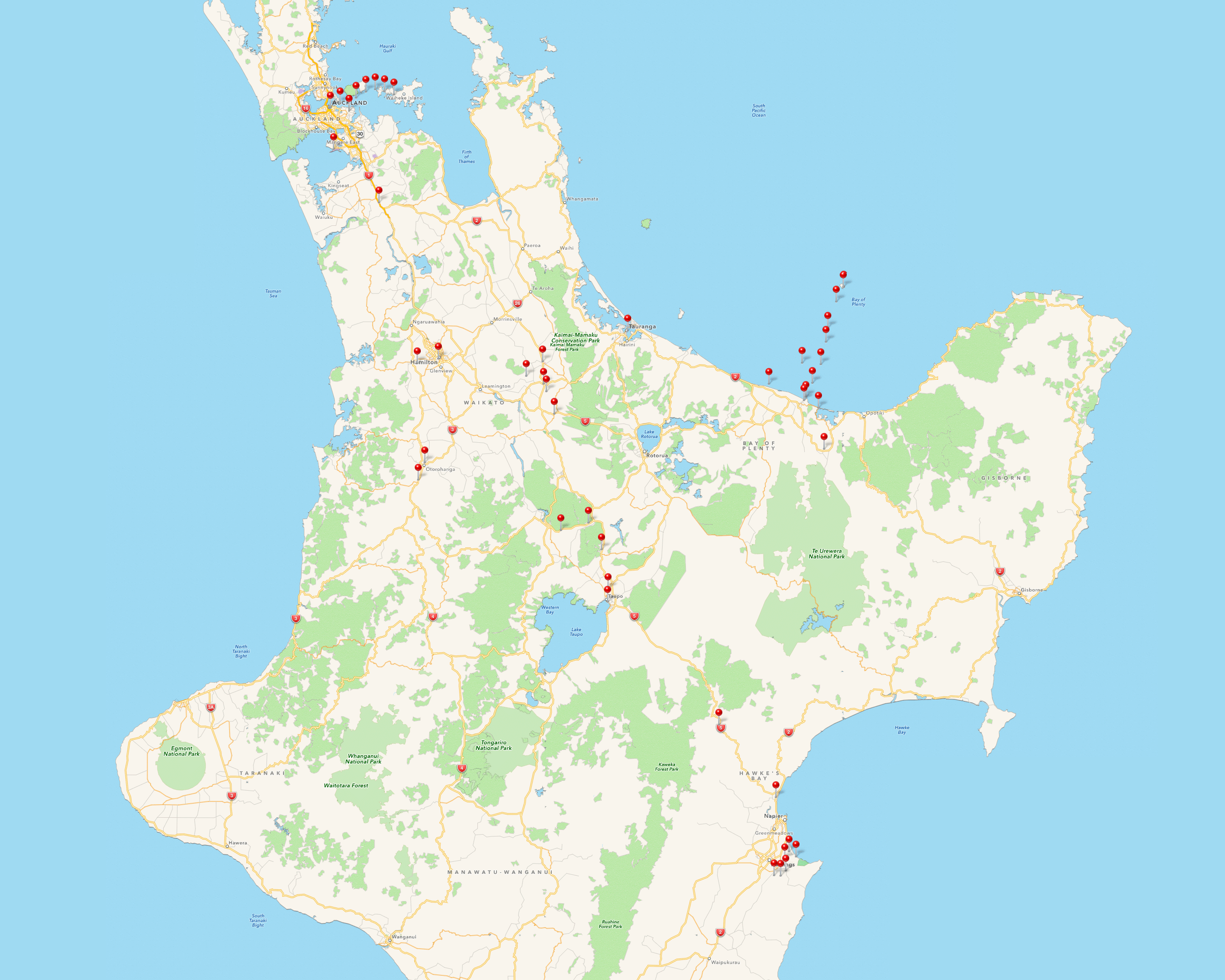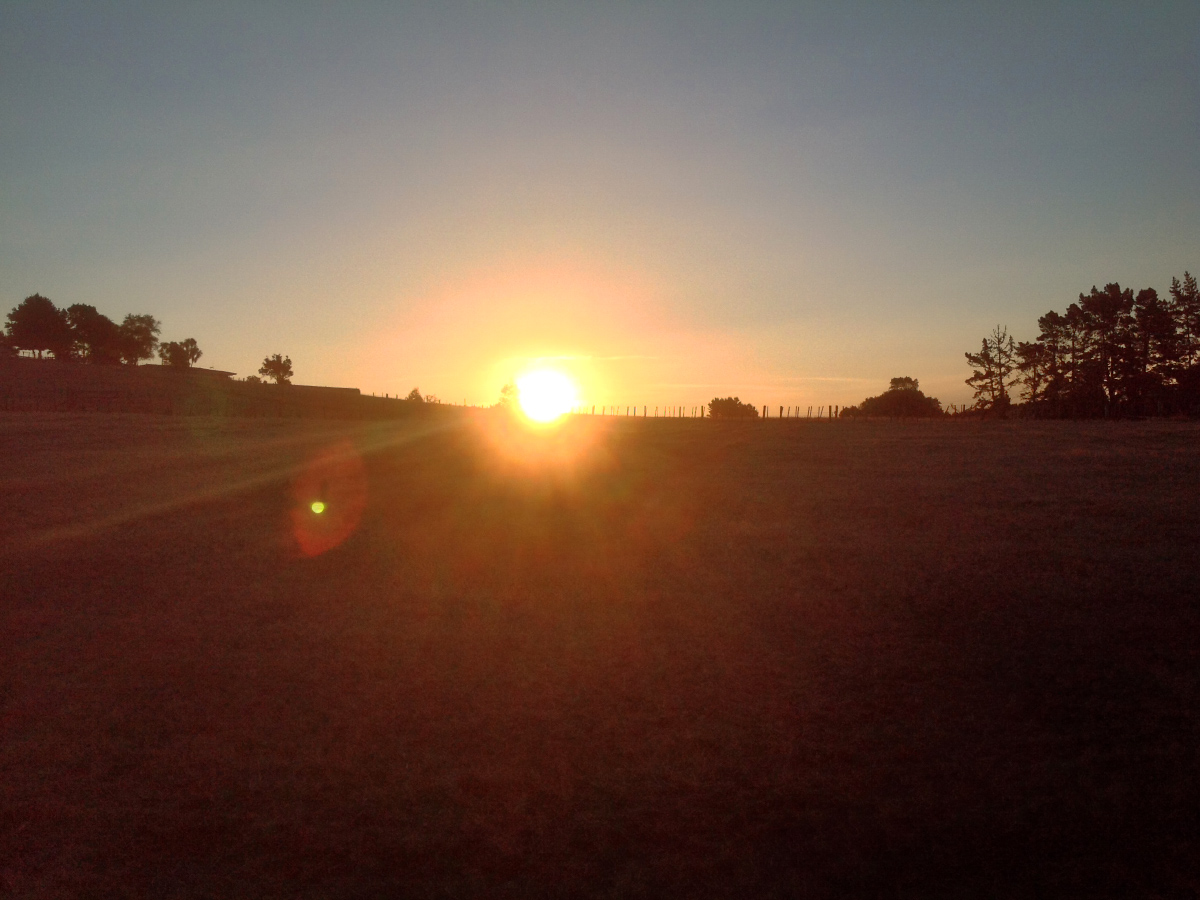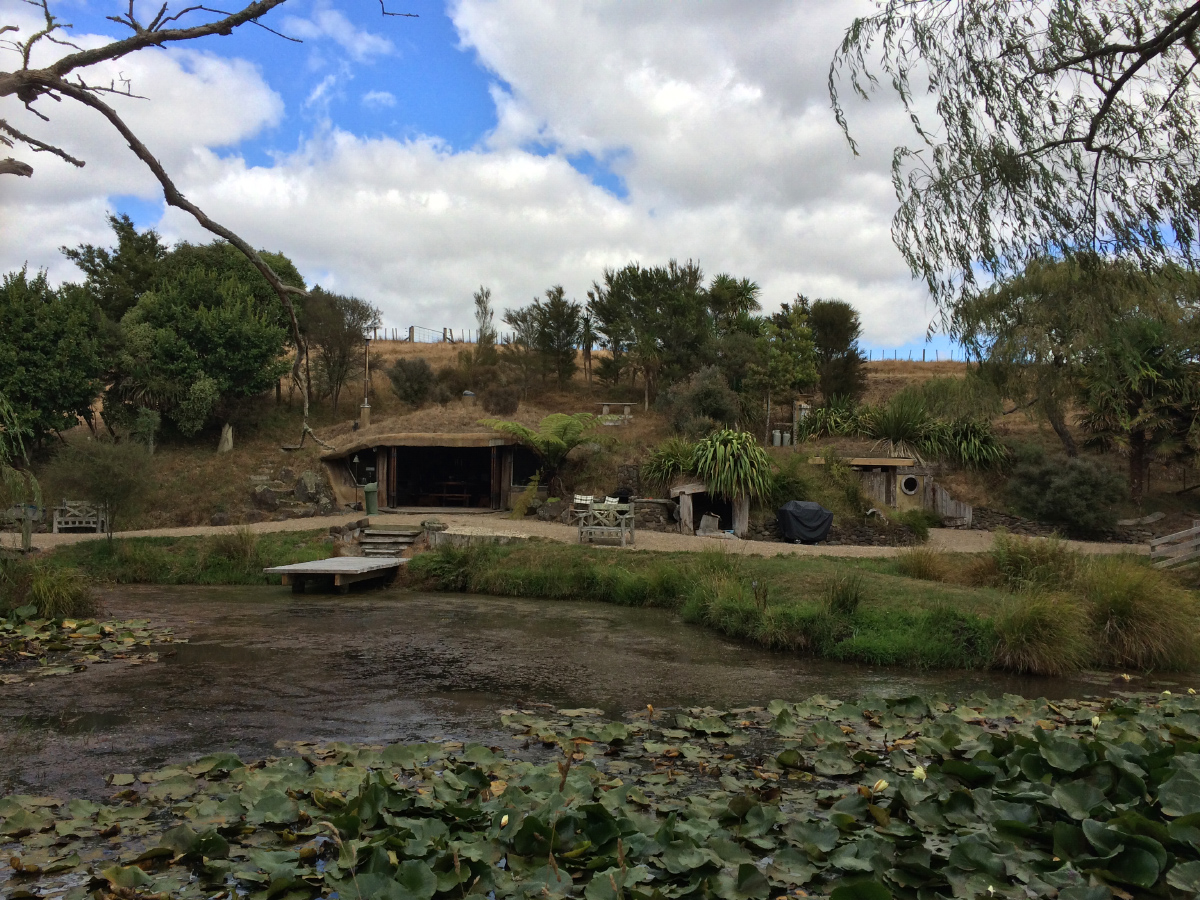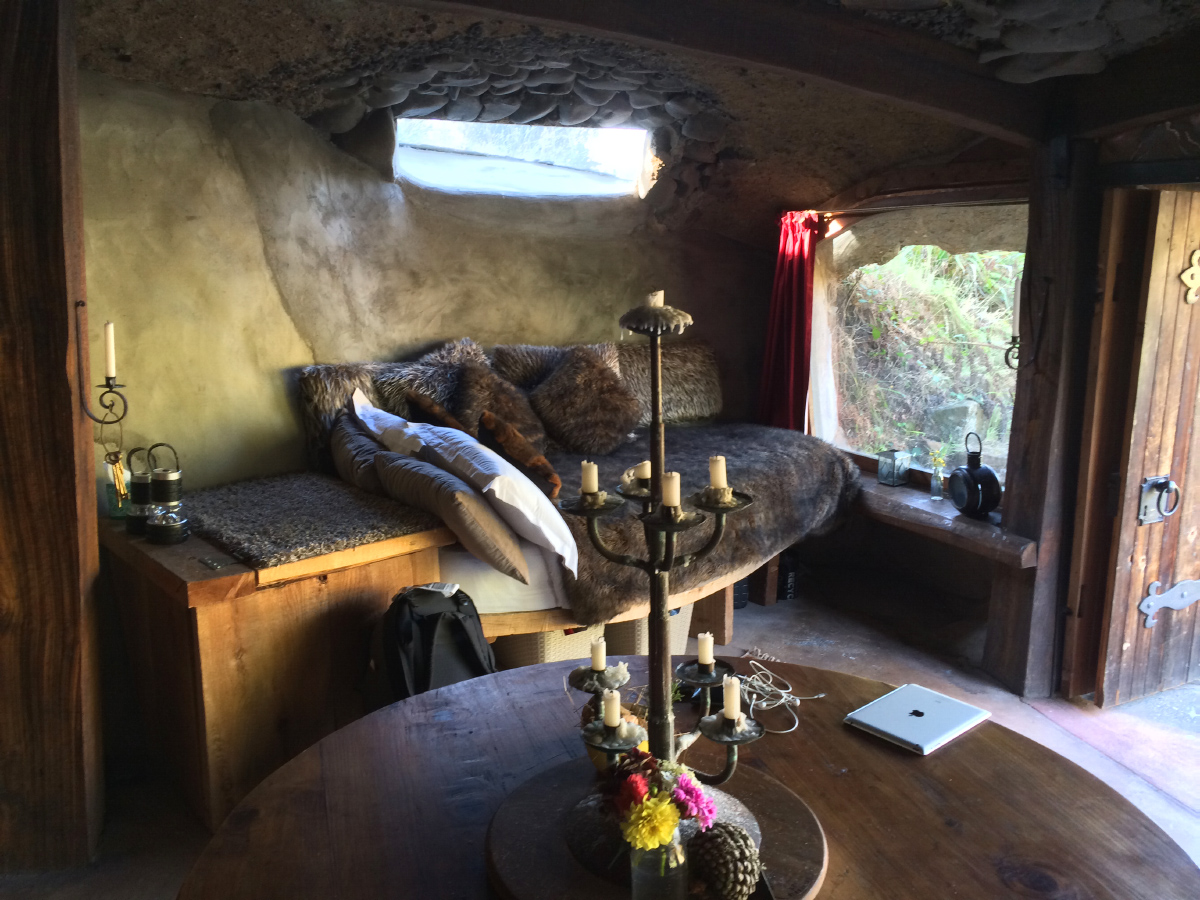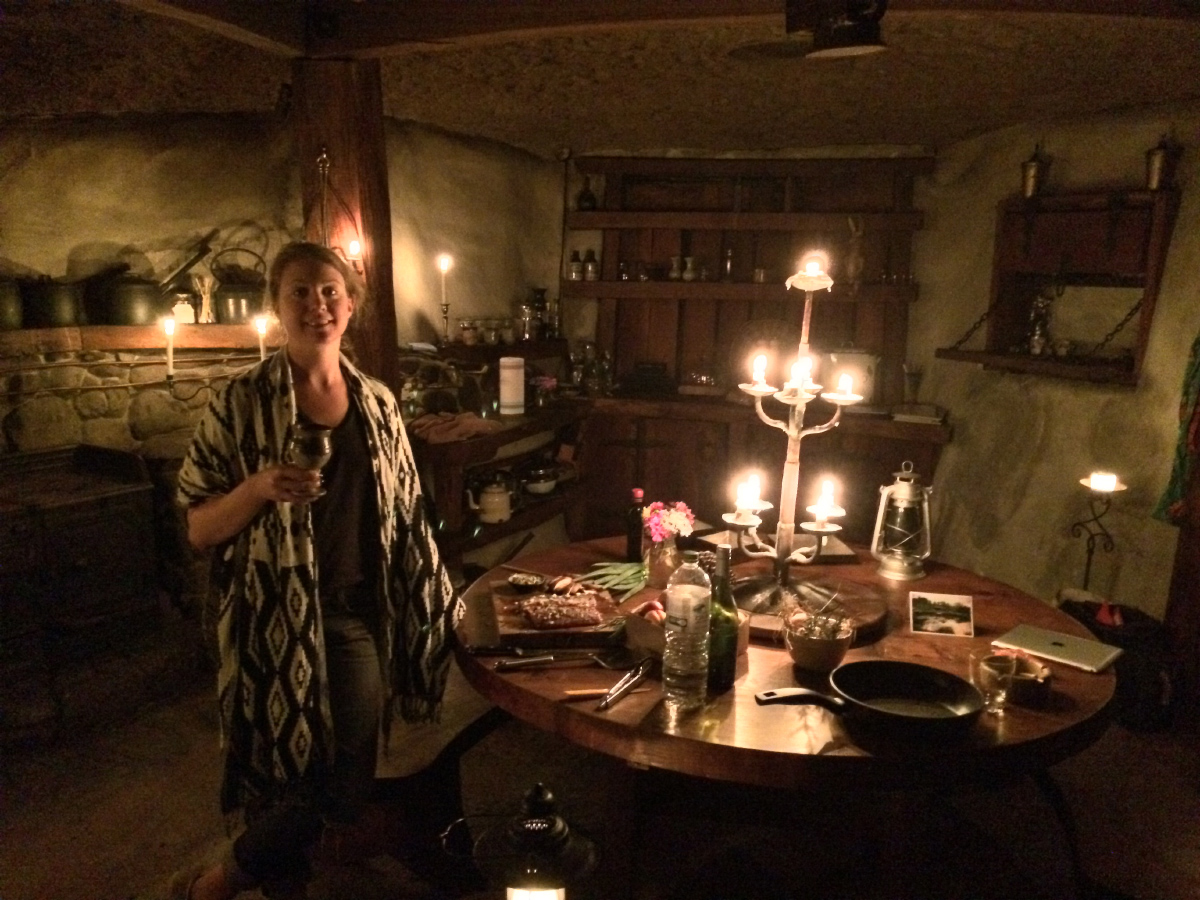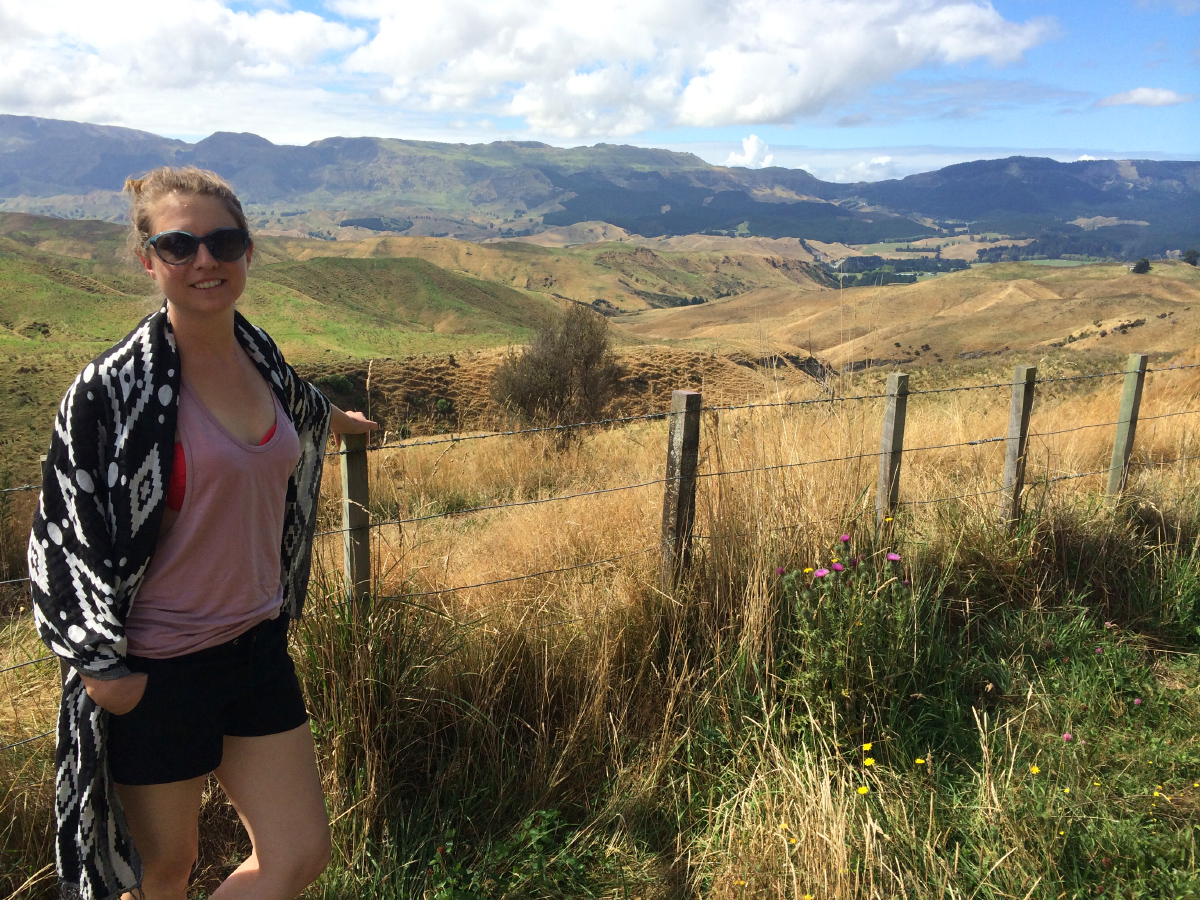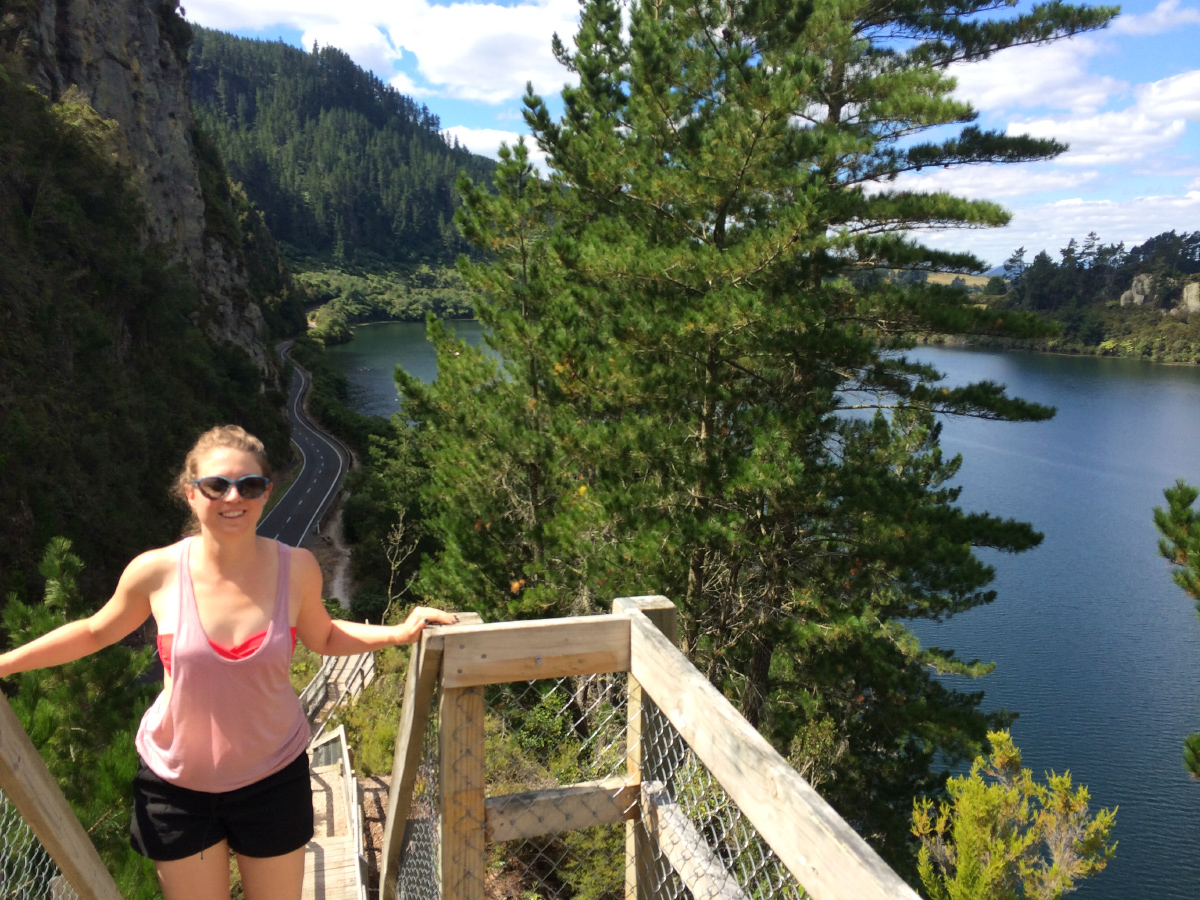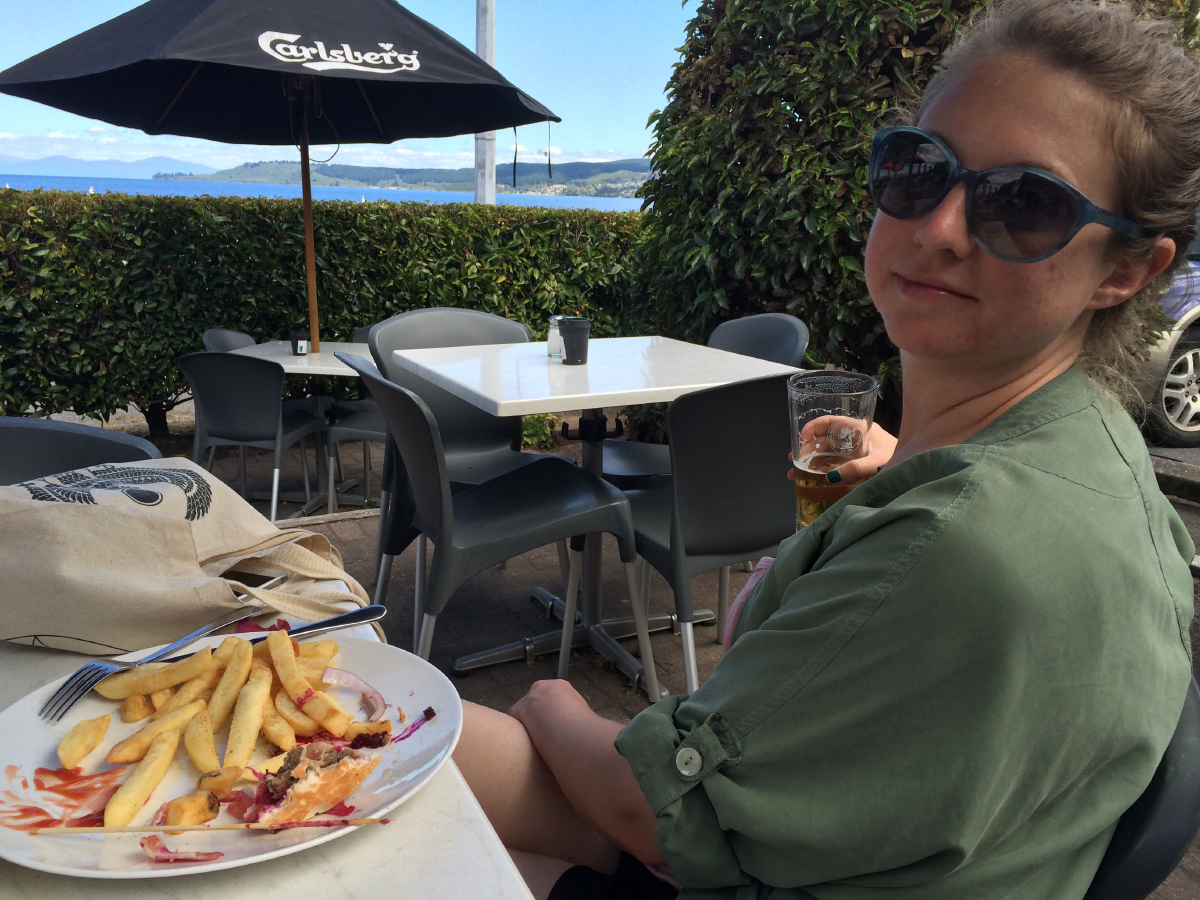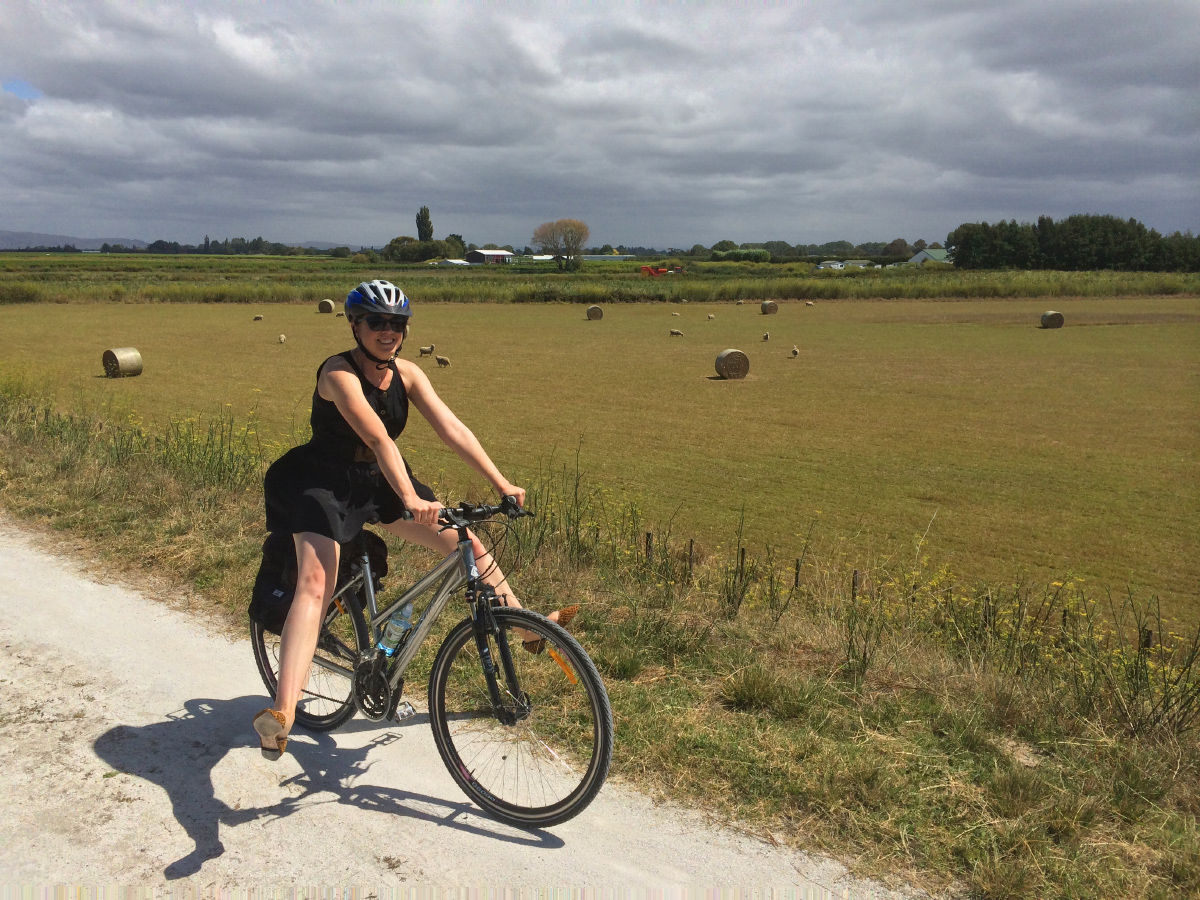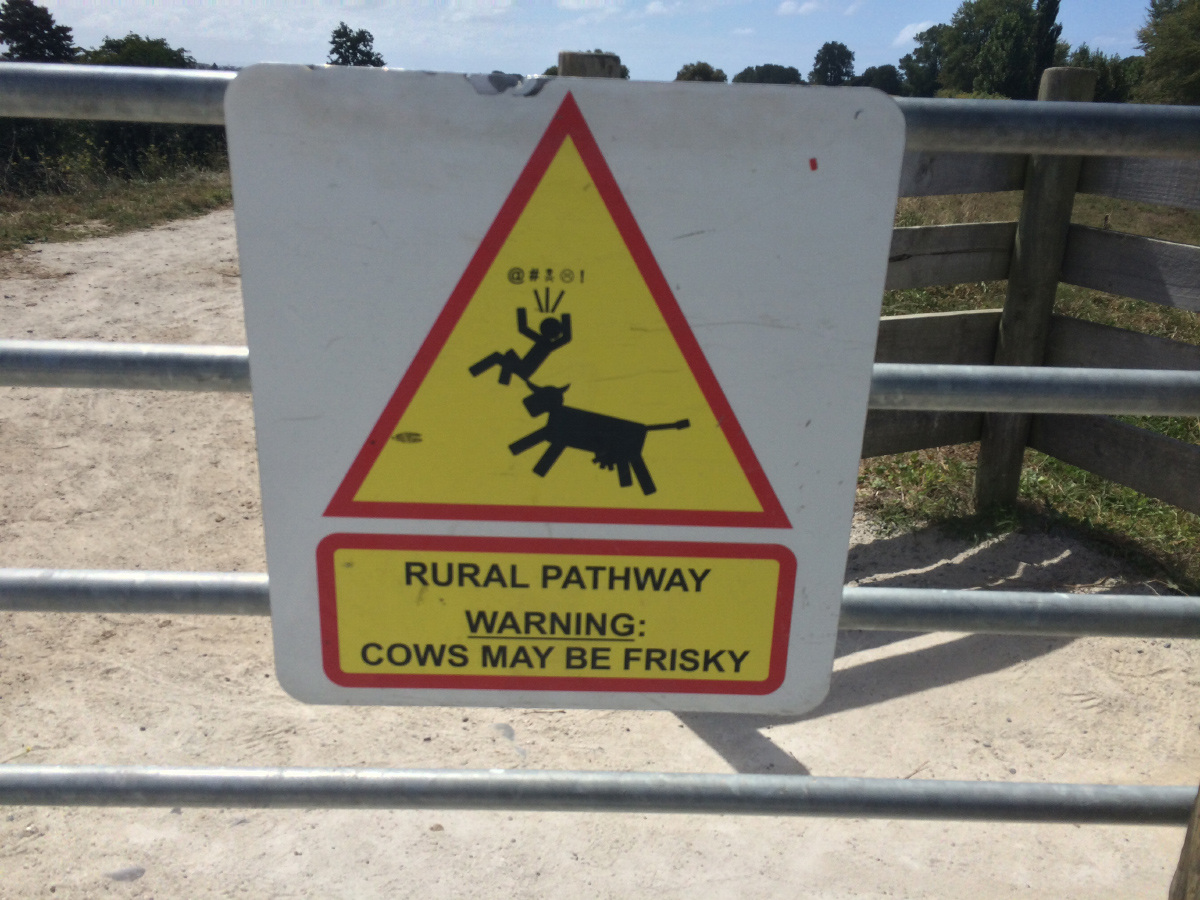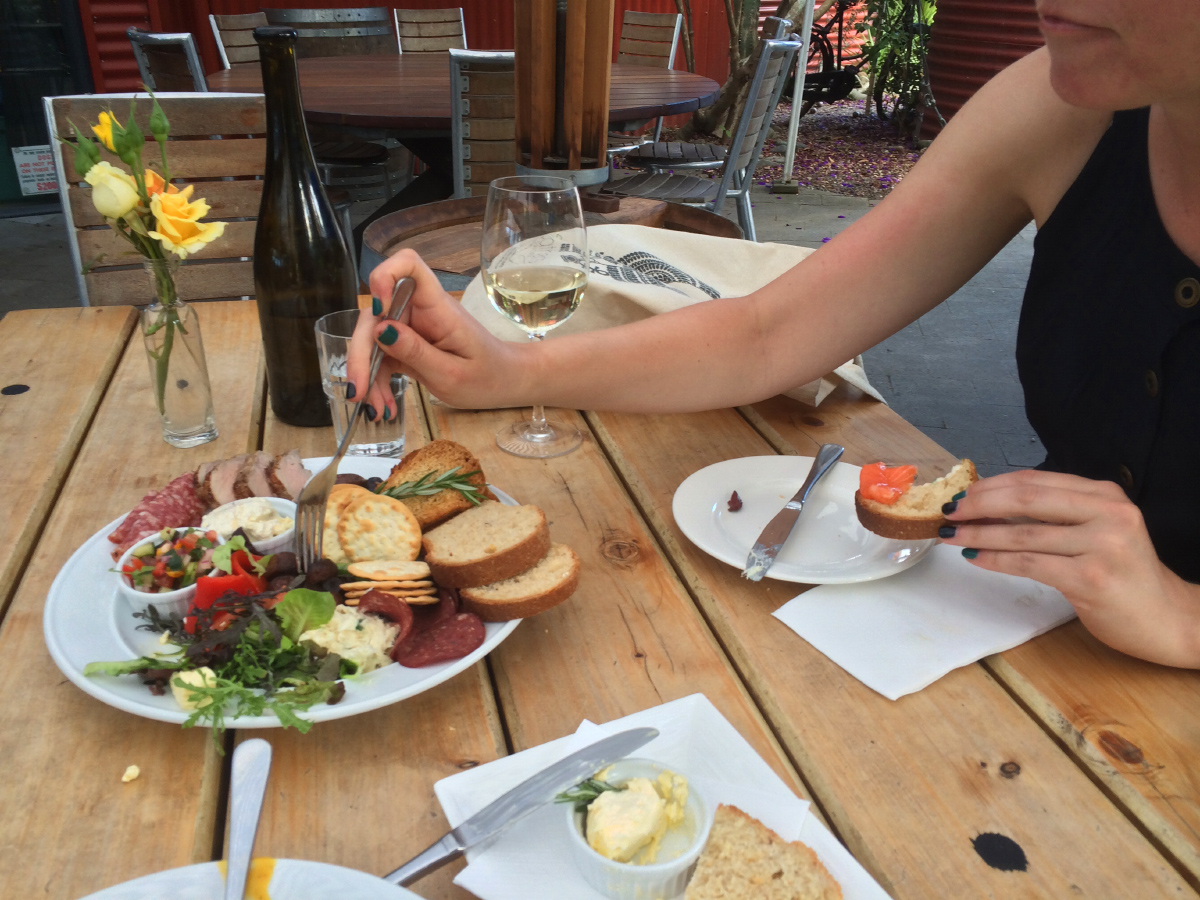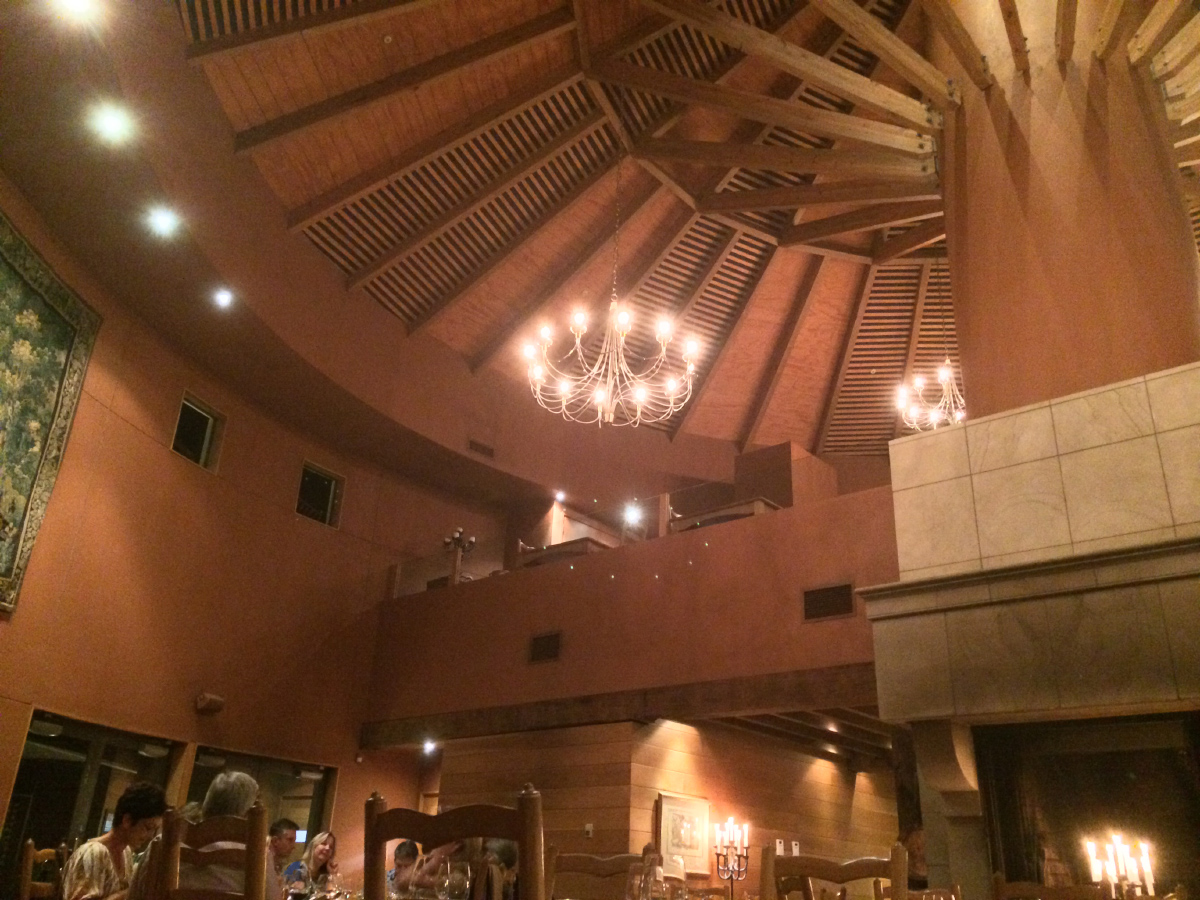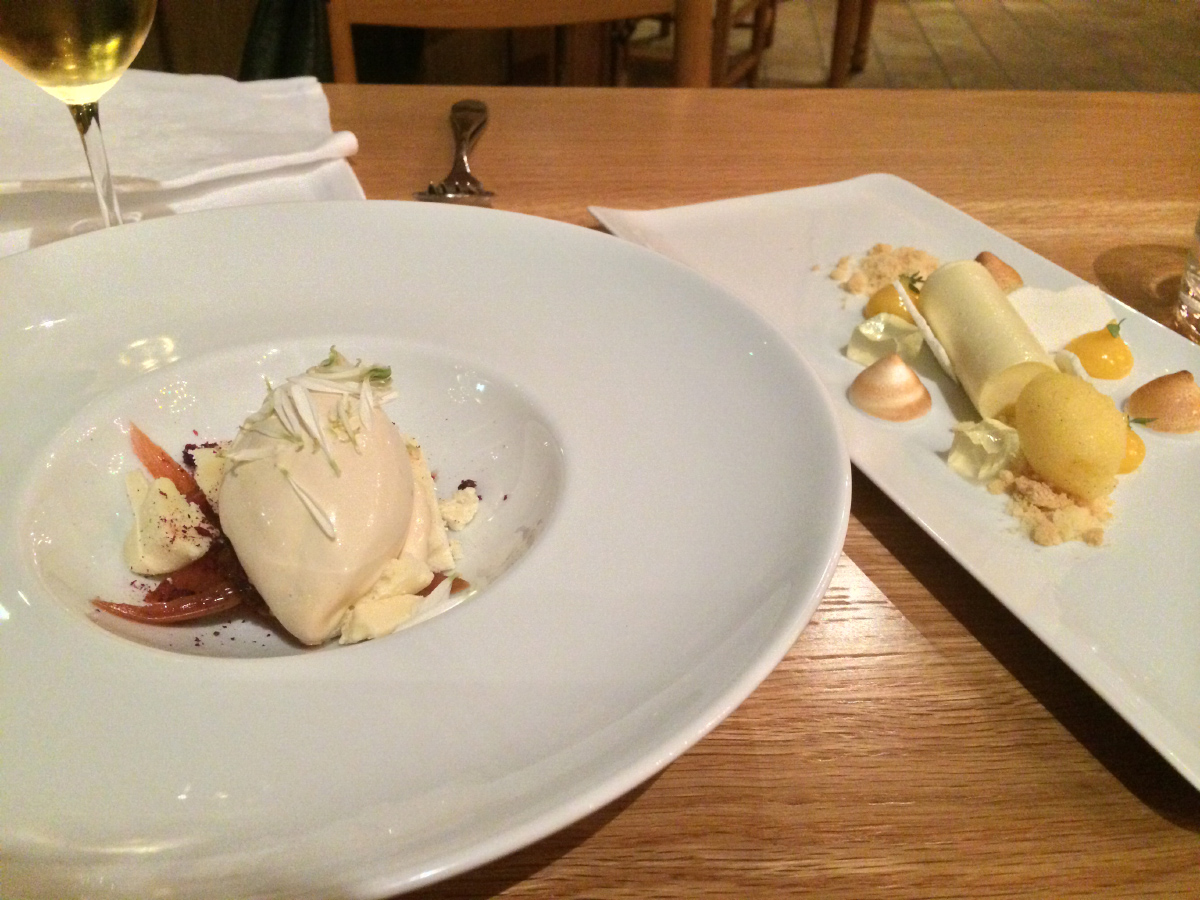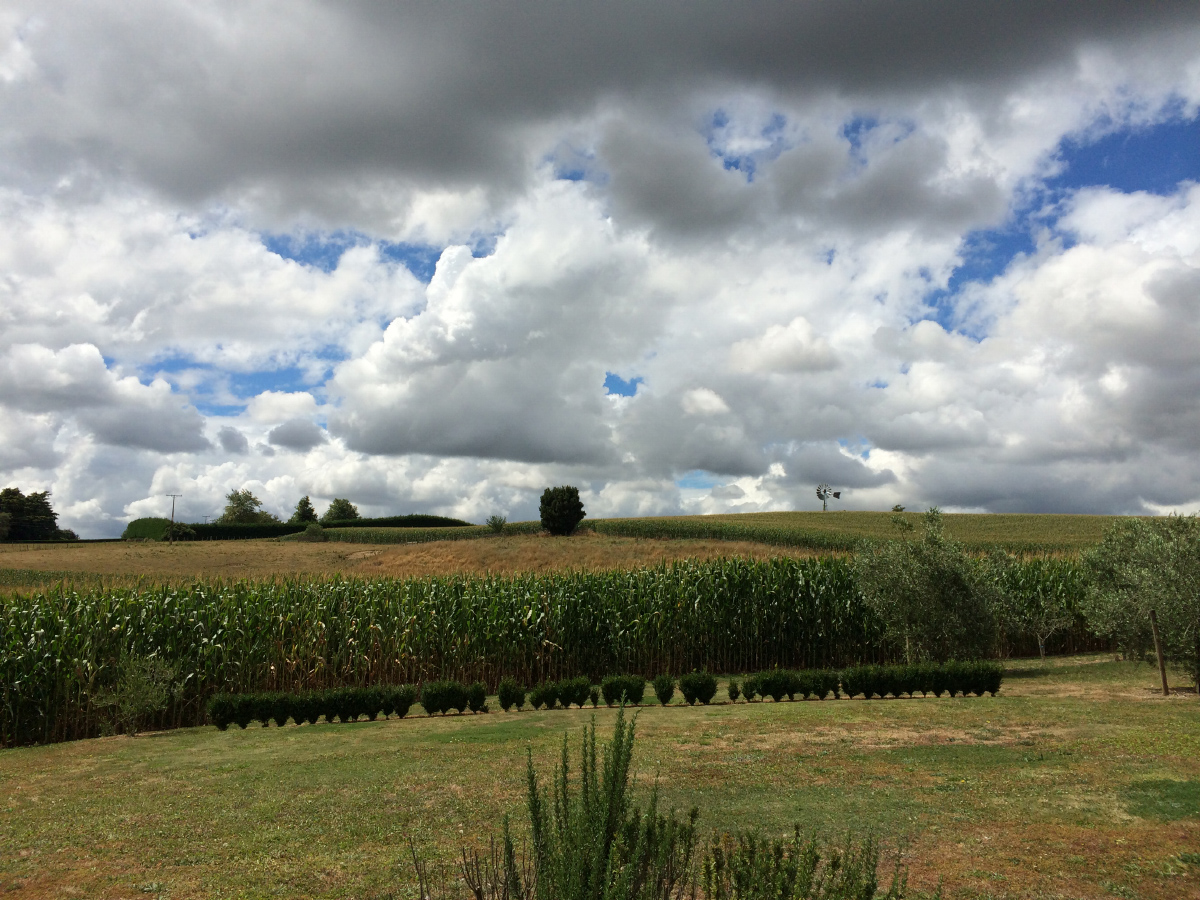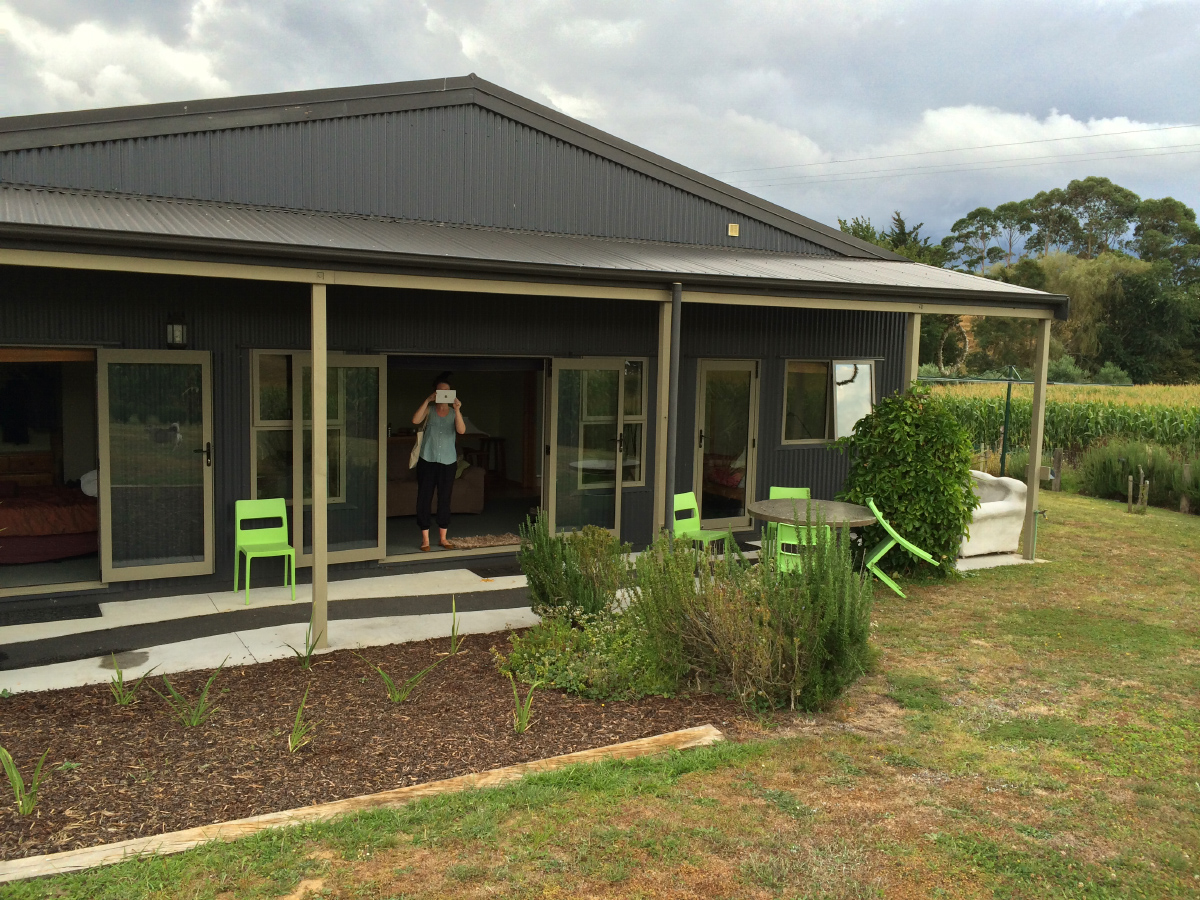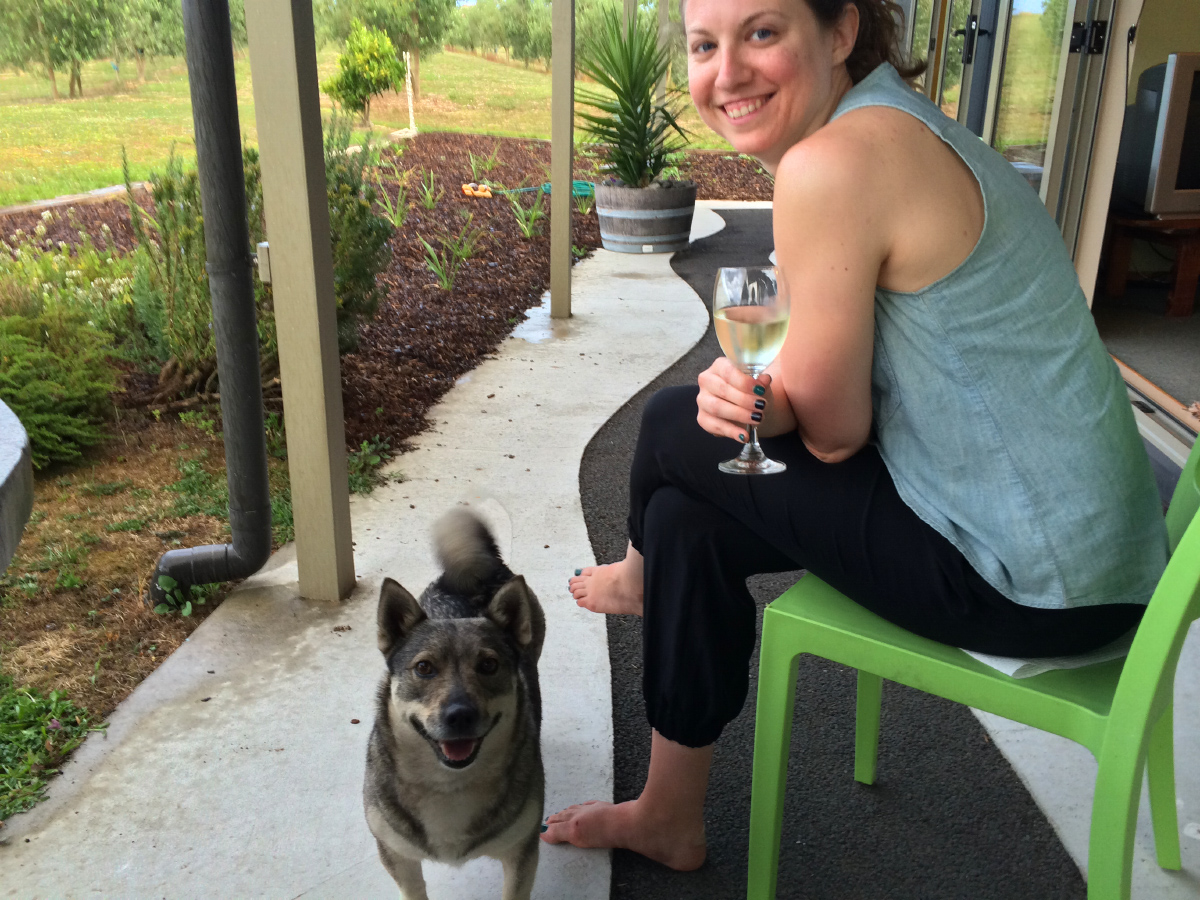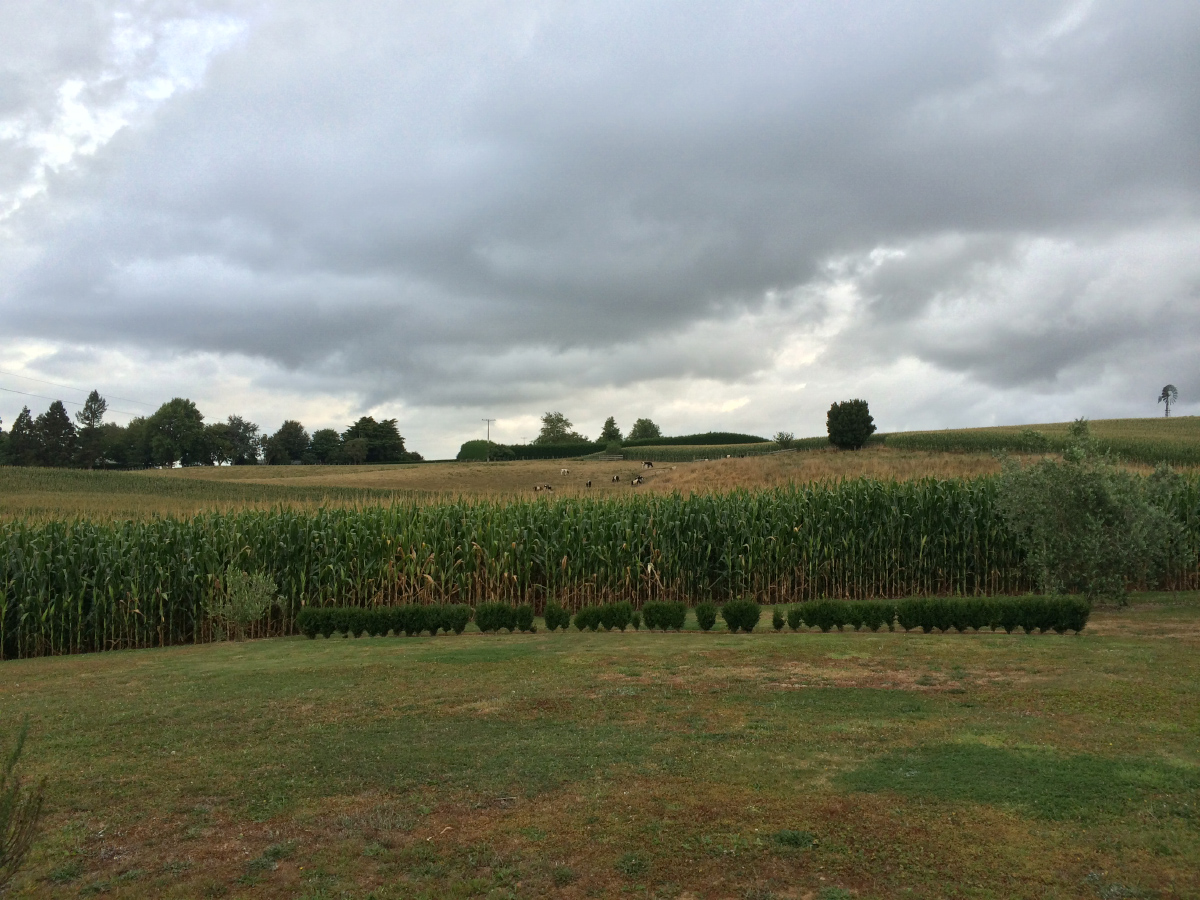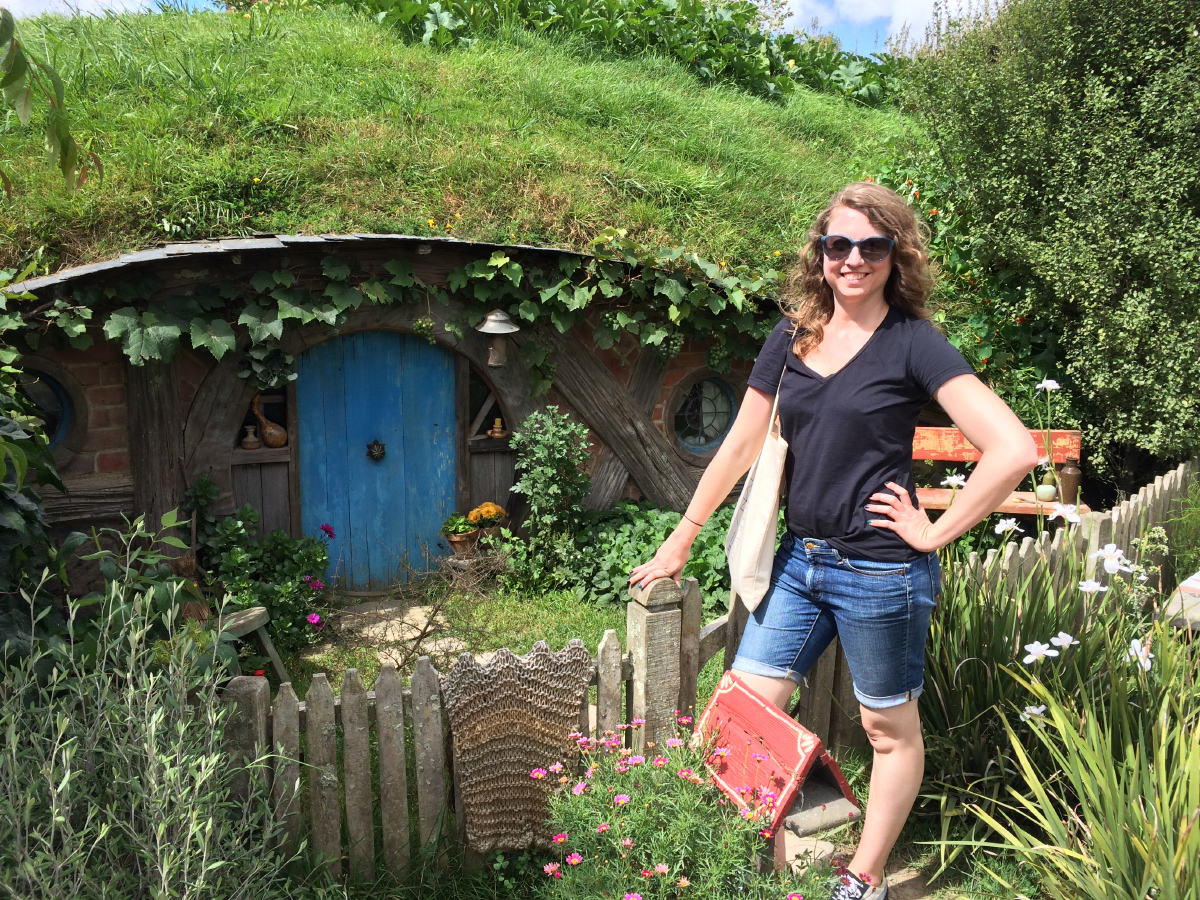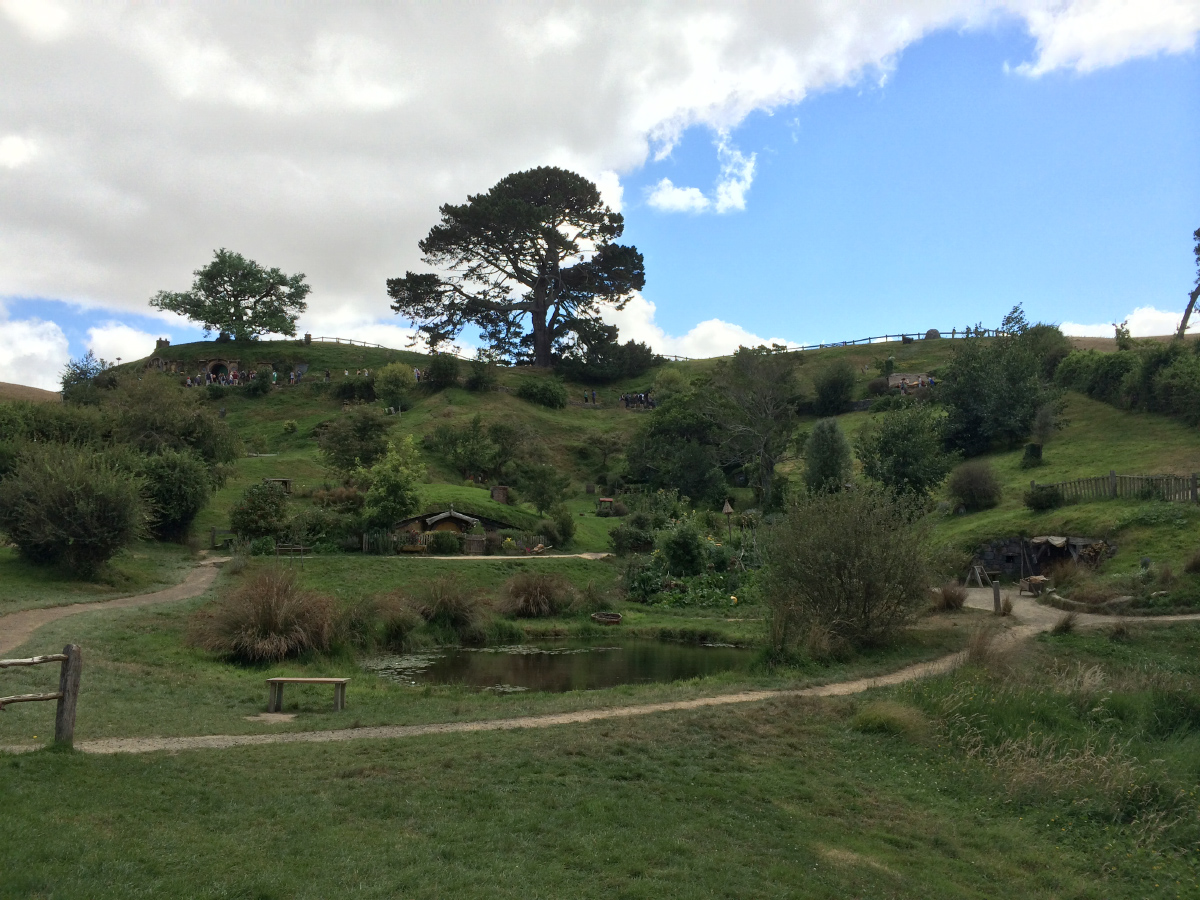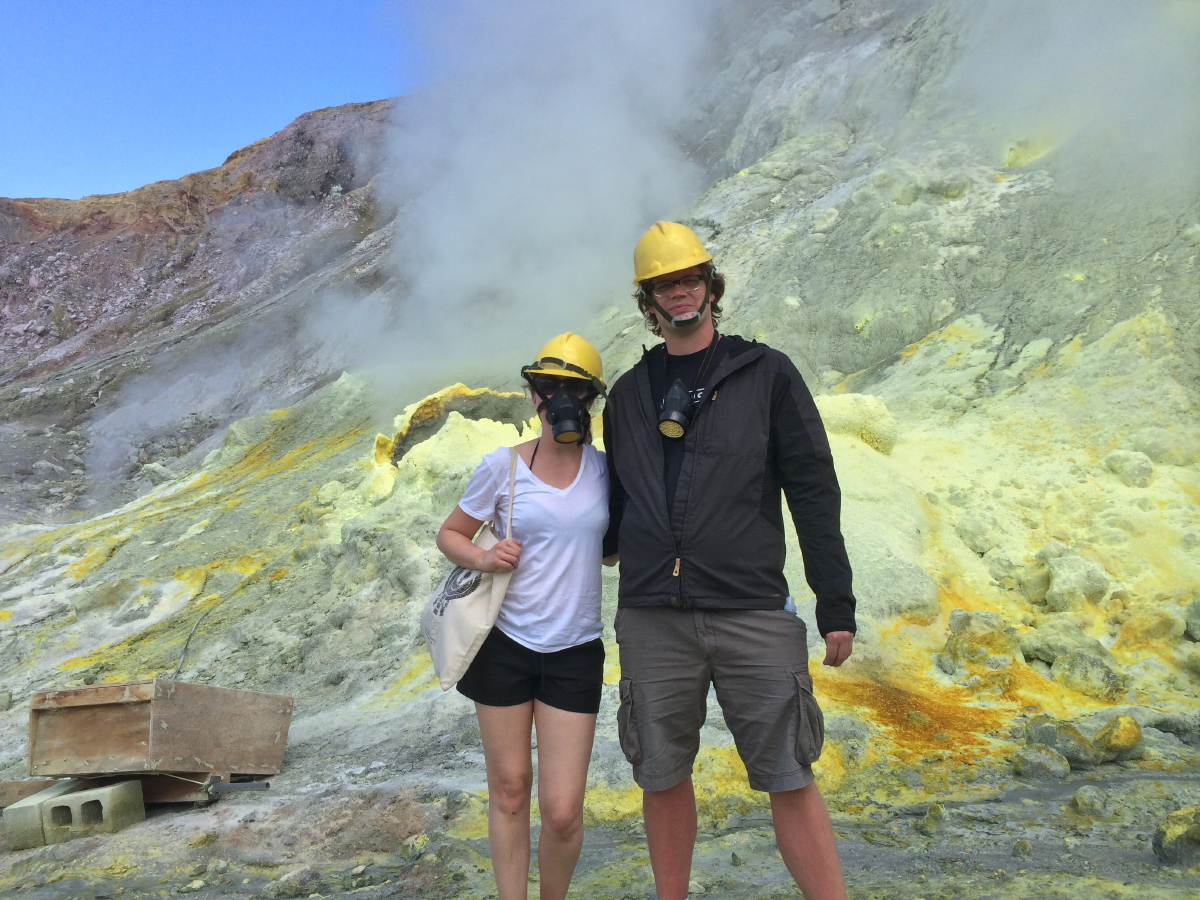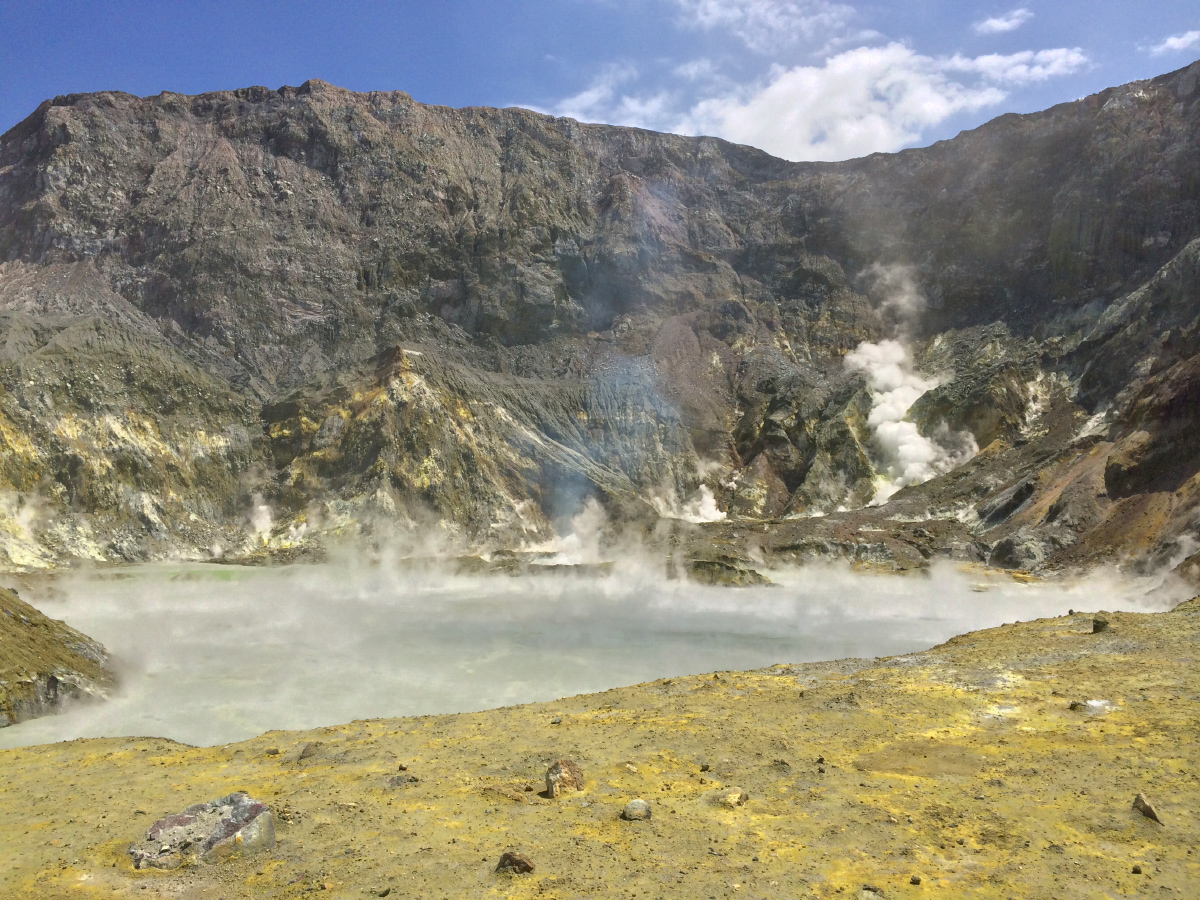The Clearing Stages, M45Sunday, July 24, 2016
Christin came downstairs earlier today as I was “mastering” M45 on the Polks. She gave me a little light-hearted crap about the sharp 2-4 snare (or clap) I have a tendency to use. Or, rather, she tried. By clapping along on the snare hits… but she got confused. Which: Good! M45’s a bit of an experiment with using a non-standard time signature that you shouldn’t really notice unless you do something like count along with it. Anyway. The goal wasn’t to trick Christin. I’ve just got to listen to these tracks outside of my headphones a bit. It’s funny how different they can sound — mainly drum loops that sound fine in the cans will come off way too hot from speakers. Especially that sharp snare. And other sounds can easily muddle together and tend to require a little EQ separation of volume nudging to kind of open back up and sound nice. Onward. The Clearing Stages, Stereo BSaturday, May 7, 2016
Anyway, I like complexity in sound and creating a kind of “sea of synthiness” is kind of the point of many of my tracks. But I’ve still found it helpful lately to really consider pulling things out (or slicing parts of things out) when my sonic ideas aren’t properly gelling. Stereo B started off cluttered. Too many layers. Not enough space. Just kind of a boring mush. When I first sat down to work on it, I wanted it to be much more mellow and atmospheric than Stabilizer, just to get some variation. But the track just wouldn’t go there, so eventually I moved in the opposite direction, added much stronger drum loops and a buzzy bassline to kind of hold the thing together and took out or trimmed most of the other layers. Posted here is the result. As usual, Stereo B is probably worth a listen in headphones. Enjoy! The Clearing Stages, StabilizerTuesday, April 12, 2016
Stabilizer. It’s a bit of a nonsense name, chosen more out of the need to just choose something — anything — when saving a track project for the first time. Now I’ve been staring at that word for a week and, well, nothing better has come to mind. The track started off as just me messing around with the EVOC PS vocoder built into Logic Pro X — that forms part of the burbles that go along through most of the track. And then almost everything else apart from the drum tracks all come from Alchemy — also included in Logic. (It’s new. At least, I’d never really messed with it. And I like!) Anyway, the foundation of the track, the rather basic eighth-note bassline and mostly unchanging kick-snare with a peppering of clicks probably comes from my being in a bit of an off mood when starting this little project and just bluntly hammering out notes. It seems to form a predictable foundation upon which all of the other blippy chaos can bounce around. (Worth a headphone listen, by the way. Might sound crappy on laptop speakers.) Oh, and I decided to use The Clearing Stages nom de guerre instead of the usual DXM. Time for a change! Anyway, if you listen or download, like it or hate it, feel free to drop a comment. Curious if anyone else finds this stuff interesting… Orbus Terrarum, Track by TrackThursday, March 10, 2016 So last November I discovered the 33 1/3 books — a series of chapbook-length reads, each deep-diving a single album. The works they cover run the gamut from the Beatles’ Let It Be to Kanye West’s My Beautiful Dark Twisted Fantasy to Koji Kondo’s Super Mario Bros soundtrack — just perusing the list on their website makes for an interesting read. Christin and I spent Thanksgiving tucked away in a cabin out in the middle of nowhere near the Catskills and had nothing but time to kill, so I read a couple: Aphex Twin’s Selected Ambient Works Volume II (by Marc Weidenbaum) and My Bloody Valentine’s Loveless (by Mike McGonigal). Each felt like a long magazine feature, offering up back story about the artists, bits of interviews with key players, track-by-track discussions of the albums themselves, and cultural/historical context. Good stuff. (A quick aside: I found it interesting just how little I knew about the artists behind these two albums. I know each pretty much note-by-note, beat by beat, from start to finish. I love ‘em — and they were both integral to my adolescent formulation of what good music was. But Richard D. James? Kevin Shields? Ambient music scenes in the early 90s? Noise rock in the late 80s? I grew up in Austin, which has a lively music scene, but this stuff might as well’ve been happening worlds away. I picked up some broad strokes about these people and scenes — stuff I’d gleaned from the occasional article that would crop up or bit of biographical information a friend was circulating — but not much detail. I mean, I got into SAW2 soon after it came out and got into Loveless in 1996 (relatively late for that 1991 album) — both times (essentially) pre-internet, pre-social media. Obviously pre-Wikipedia, pre-Twitter. Fan sites existed. And magazines. But musicians and artists weren’t yet the hyper-accessible trans-media properties they seem like today. It’s easy to argue that a little mystery about the individuals and scenes these albums sprung from might’ve actually made them more compelling and interesting. Not having details lets the mind go wild. But. Lately I’ve also enjoyed pulling the curtain back a bit and getting a taste of the Official Story.) Anyway, it turns out the guy behind the 33 1/3 series, Marc Woodworth, teaches writing at Skidmore College — including classes such as “Writing Rock.” And in 2015 he released a book called How to Write About Music, a collection of readings, writing assignments, and little educational/inspirational bon mots from other professional writers, all organized as one might organize a writing class. So I’ve been chewing through that. And really getting into some of the pieces. Some highlights: Charles Aaron’s live review of Hole performing their first show after Kurt Cobain’s suicide, Kim Cooper’s track-by-track review of Neutral Milk Hotel’s In the Aeroplane Over the Sea, Luke Turner’s article culturally situating (and defending) the albums of Enya, Thomas Sayers Ellis’ interview with Bootsy Collins, and John Jeremiah Sullivan’s profile of Axl Rose. That’s a long list. It’s a good collection. And so. I actually think it’d be fun to try to write one of these short 33 1/3 books. But I’ve never really attempted to write about music before. Odd, maybe, given my backgrounds in both creative writing and creative, uh, musicianing — I used to run live digital music events and performed “laptoptronica” (as the kids called it) regularly while living in Austin, if you weren’t aware. But the two disciplines rarely intersected for me. And I’m not really a music historian or anything. When I listen to stuff, my musician’s ear always has me picking apart why the sounds work together, what creates the energy, the mood, etc. Cultural context, artist biographies, funny stories about the recording process — that kind of stuff sometimes flies over my head. Maybe that’s my programmer’s mindset: trying to understand things by disassembling them into their atomic functional parts. Or maybe I’ve just been blind to a major element of the musical-cultural experience. Regardless, I’ve decided to try something new, here, and tackle a writing prompt and write a track-by-track album… review? Not really a review. Reaction. I’m picking out and album and listening to it a few times straight through while I write. I selected an album that fit three criteria:
The title of this post gives it away, doesn’t it? Okay: Orbus Terrarum by the Orb. (Dear Spotify, “Orbvs Terrarvm” looks silly and makes the album hard to find.) The album came out in 1995, my junior year of high school — just as I started becoming seriously interested in electronic and ambient music. I read a quick review of it in Rolling Stone magazine, I recall quite clearly, and bought it soon after at Waterloo Records down on 6th and Lamar — my neighborhood record store. I actually found it quite opaque at first, but stuck with it and eventually it grew into one of my favorite albums. I mean, here we are. Going into this, I actually know few of the official details of the history or production of the album. Or even who, exactly, made it, apart from the fact that “Dr.(?)” Alex Paterson was (and remains) the key member of the Orb. And I actually kind of prefer it that way, for now. Maybe if I land that lucrative book deal with 33 1/3 to write a short book about Orbus Terrarum I’ll dig into that stuff. Here I’m just taking the album at its sonic face value. Reacting to it. Playing around with it. And offering maybe a slightly different way of thinking about how to listen to it yourself — maybe how to deconstruct it into something more manageable if this kind of music isn’t really your bag. Or maybe this’ll just be a silly failure of an experiment and I’ll just wind up embarrassing myself. Orbus Terrarum
The whole idea of an album that could create a cinematic, environmental experience was a bit mind-blowing to a teenaged Josh. Obviously I had been very exposed to pop music and various flavors of electronica (which in the early-mid-90s was still mostly fairly simplistic beats/synths/samples stuff). I had been getting interested in more freely formed ambient or “sonic wallpaper” albums, psychedelic chill-out stuff like Selected Ambient Works Volume 2 and more “academic” thought music like Brian Eno’s Music for Airports — stuff that could really be anything, structurally, and often worked best as a kind of soundtrack for other activities. Despite often wearing the “ambient” tag, Orbus Terrarum sounded the opposite of this waveform wallpaper: It’s intensely textural, but the sound fills everything. It’s sound as environment. As light. As objects in space. Filling space. The Orb certainly weren’t the only ones forging this path — the Future Sound of London’s Lost Cities, for example, offered a similar but more urban post-apocalyptic sort of experience. But Orbus really stands alone, as far as I’m concerned. It’s an important album. And not just for me personally, but also as a work that pushed forward and opened up the possibilities about what this new electronic music for the 90s and beyond could be. Not just throbbing, repetitive dance music. Not just weird experimental tone poems and background frequencies. A cinematic world of sound. Hit play now. ValleyA rocket engine igniting, a sleek train disembarking, a dreamy submarine plunging into the deep — or some combination of the three… “Valley” launches us on our voyage into the mysterious terrae incognito of our yellowed and time-worn map. A hazy voice from mission control chimes in authoritatively over the intercom: “Get back in.” After a couple of minutes we slip the surly bonds of the mundane world and the sonic space opens in a shimmering metallic and burbling dub rendition. This is our first introduction to the pulsing alien landscape in which we’ll spend the next hour or so. Over the next few minutes we get plants and animals. A jungle. Dripping leaves. Whistling birds. “We are in complete harmony,” a new voice informs us about three minutes in. “We have learned patience in 200 million years.” (Leonard Nimoy, fun fact.) Then a thrum, our bridge into a chunky departure from the sleek sound of the first half of the track — mud, heavy wood. And then after a minute or so, a return to the original silky dub groove. “Valley” world-builds, sets the scene. It paints a portrait of a clockwork world. The Orb extends the comfortable laid back sound and groove of traditional dub, erecting around it an electronic scene in which those dub elements can live like a characters. The insects, frogs, and bird warbles allude to Lee “Scratch” Perry’s habit of vocalizing animal coos over his warm, smokey tracks. The sound is happy. Content. So far, so good. Eventually the sound fades into sparkles and light looping melodies, the bass line that’s held us together so far loosens up and we fade into an old familiar favorite… PlateauA jaunty announcer breaks in like a big band leader on Mars, amplified by a club sound system half underwater. Even if you’re not familiar with the Orb’s oeuvre, you’re hopefully becoming aware that they don’t take themselves completely seriously. I mean, they’re serious from a production standpoint. (Alex Paterson is a doctor, after all. (Not really. (I think.))) Each sound on Orbus feels meticulously crafted. But the Orb ain’t above producing the sonic equivalent of dorm room black light posters or weird kitchy psychedelic shit you’d find at your neighborhood 90s-era head shop. The Orb’s productions of this era are oddball stoner whimsy at heart. Stacked on top of meaty beats, of course. Anyway, after the vocal aside we’re dropped back into the world introduced in “Valley.” But now in a clearing, an open space. (A plateau?) It’s lush and beautiful, but on an edge. Flashes of light. Froggy sounds in a distant marsh or bog. We can see quite a distance. The rolling dub bassline from “Valley” rejoins us three minutes in and catalyses the disparate sounds into a soft-edged groove. The world shines. We’re going somewhere. Silvery hi-hat and metallic samples fill in the gaps — our sleek silvered future train, again — along with the dub bass and delay-echo drum patterns that characterize the whole album. Over the many minutes of “Plateau” the looping textures come and go and twist around in relatively subtle ways. You can lose yourself in the detail of the sounds that occur in the very background, behind the overt bass and percussive mix. The layering and depth of sound in Orbus is incredible. (And I sure-as-hell hope you’re listening along on good headphones. For heaven’s sake, this is not an album to be enjoyed on your little Jambox Bluetooth speaker thing.) We’re traveling, as if on a train made of the lightest metals — a machine of percussion and bass coursing through wet and hazy nature — nature which exists on its own but is also uncannily in resonance with the rhythm of the machine. The scene slowly mutates, transforms. Then at nine minutes in we get chopping vocal samples and the whole effect becomes more tightly constrained sonically. More mechanical. A touch claustrophobic. A tunnel? A factory? Transition. Was the halcyon picture painted earlier to be trusted? Should we be alarmed at the ramping intensity and wailing voice refracting through the scene? “Plateau” ends with a somewhat deconstructed version of the basic rhythm of the track. This angular, robotic version of the previous dub bass sequence hangs around until the last 45 seconds or so and then we’re open back up into sunny synth string stabs and light-weight metals. Back to peace. Oxbow LakesOrbus Terrarum oftentimes gets categorized as “ambient” — understandably. But “Oxbow Lakes” is the second track in a row that starts with a jarring scene change (and it won’t be the last). Ersatz piano, this time, which stands out as simplistic or child-like against the detailed mix that characterizes most of Orbus. As a genre, ambient generally avoids these sorts of jarring moments. But that’s not what this album’s about. Whatever else they may be, the Orb have always been first and foremost in my mind a dub outfit. The basslines. The echoed drum tracks and stoner silliness. And the best dub kind of plays at being both “ambient” music and having textures and sounds that pop up in the forefront and give you elements to actively listen for. I mean, you can put on Orbus quietly in the background and it won’t necessarily distract you (I’ve on many occasions done homework to this album), but unlike most ambient it requires a close listen to truly appreciate (yes, reiterating this point for the jillionth time). And beyond that, as a “concept album,” it rewards deep listening and experiencing the overall structure of the piece. And I think these attention-grabbing bursts a part of that. Listen up! Here are some cheesy fake piano sounds. Or a strange sample of speech. They definitely give your brain something to latch onto when first listening to the album. They divide the work into chunks. And while the Orb might not be taking themselves totally seriously, they are making an effort to craft contrast and drama as we transition from this drugged out synth piano strain into a more complex sound almost like the rumble of internal organs. Digestion. But, again, robotic. And not sexy Ex Machina robotic: These are massive pneumatically-powered constructions moving as if just barely under control of themselves. Wobbling iron giants. Although soon enough — around five minutes in — the scene begins to change once more. Another passing threat? A bassline begins and the piano makes a return, but softer. A blinking counterpoint melody takes the foreground this time. Something very much like computers. Logical sounds floating in the haze of the world. Montagne D’Or (Der Gute Berg)We’re jarred aware with another sample — “…leaving for Constantinople tonight…” — ear-ticklingly flanged and phased. And then the curtains open to a sparse and burbling pond of sound with little more than a twangy county guitar to keep us connected to civilization. We sit for a minute and then float into a lush, symphonic wash of pads and synth strings. Voices echo around, hard to understand. But adult. Male. Vaguely paternal. We sit in this still place for a few more moments — sounds ebb and flow, more digital bayou than mountaintop. But we’re not yet going anywhere. About four minutes in: A bit of quiet, then something like a clock-radio alarm or an electronic phone ringing (but not a cell phone — it’s 1995). A starkly urgent mechanism in contrast with the languid scene we’ve seen so far. It compels us to move. With determination, but not afraid. Into battle. The previous two tracks have offered soft-edged previews of conflict between the natural and the mechanical, but now we’re going into the shit. The sound becomes a pulse of focus washed over with vectors of echoes and delays. And then. Around six minutes into the track, a monstrous relative of our friendly dub bass co-traveller from tracks previous pounds into the scene. It runs alongside our fleet metallic train with an entourage of burbling flies and insects. This bass isn’t threatening, necessarily, but it is massive. Seven minutes in, war drums signal another change in mood. Then warm horns of alien mysticism. A reprieve. Calm yourself. Before the voices. And then the bomb drops: It’s war. At eight minutes into “Montagne d’Or” all hell breaks loose. The dub bassline plays the role of enemy machine, not just out of control but smashing and stomping beats over everything else in the sonic frame. The silvery metals are harsh and banging. War horns blast from the sides. Machine parts beat against one another. Noise. Stress. The machines begin to come apart, rhythms break down. Iron limbs flail. Collapse. Until we’re left with an abrasive and almost entirely inorganic feedback loop squealing in our heads. Are we done? Is it dead? Are we dead? Are we safe? Cables snapping. Acceleration. One final release of energy: A damaged, lopsided missile launch into up into the night sky. A harsh metallic explosion far above the land. White River Junction…And the inevitable return to earth. The remains. Fragments. Chunks falling from the sky. Splashes in the soft marshy life. Quiet again. A paternal voice speaking with the calming authority of a self-help tape: “You have a deep and sincere respect for yourself…” Soon a new, female voice enters, providing a counterpoint: “Listen to the radio.” Looped over and over, eclipsing the male speech. (Both samples come from the track “Listen to the Radio” by plunderphonics band the Tape-Beatles, by the way.) This second voice is more enticing. Subversive. A bit sexy. But also artificial: Just a bit of tape playing through and then rewinding with a hiss. Given the abstract story of nature versus the machine that I’ve tried to concoct, we might interpret this as the machines taking another angle on winning the day. Their physical forms from the end of Montagne D’Or destroyed, they now resort to psychological warfare. Setting up one voice as clearly manipulative and fake, but then introducing a second voice as if to say, “That voice is just trying to manipulate you — listen to this second voice. It knows what’s real and what’s not.” A false flag. But we’re not buying either. After a couple of minutes we leave the voices and come upon another sonic clearing — serene with sunlight and burbling creatures, frolicking, splashing. Nature. Then the silvery hi hat metals from tracks past rejoin us. As does the “Listen to the radio” loop, faintly — more in the background this time, integrated with the beat. A precursor. About four minutes in, the halcyon groove mutates harshly. “White River Junction” follows the template of previous tracks: Starting easy and traveling into scenes of increasing violence and intensity. Flashes of harsh light forebode the change. The machine finds its body again. A fat acid bassline stabs into the scene amidst other tympanic sounds of factories and mechanical organs (stomachs and hearts, not Hammonds). The machine grows. But this machine feels somehow more friendly. By six minutes in we’re still bumping along to this awkward, lopsided groove, but it doesn’t feel threatening. Maybe because this contraption’s not out of control. Thick chunks won’t fly off and crush life. About six and a half minutes into “White River Junction,” the machine sort of stops. The acid bass belches are sill with us. The looping voice commanding “Listen to the radio” returns. Percussion drops away. And with two minutes left in the track, we transition again into a sunny synths chord progression. We’re safe for now — this excursion into danger didn’t go quite as deep as before. The track ends with a third vocal sample, an hypnotic description of a descent deeper and deeper into sound and sleep… “Each sound around you carries you deeper… Deeper in sound and in sleep…” Fade out. Occidental“Occidental” initializes with a howl and machine rumble — a taste of the loud grind and rumble that comprises most of the track — washed over with wind and water, taps, and slices of voice. This holds for a moment and then revs into motion: A rave for forty-foot robots. Large banging beats. Size. Laced with rays of light and sunshine. The fits of industrial-digestive rumbling, again, as if our titanic dancers are also fighting to hold together their form. Three minutes in we get fragments of humanity — a plea for help, some loop referencing Mississippi. They last just a moment before dissolving into unintelligibility. And then the over-large rave returns. Although it remains both powerful and unstable, unable to keep its power up in face of the myriad competing sounds. Five-and-a-half minutes in and we’ve fully decayed into a banging sort of four-on-the-floor. And then a reboot back into our main groove. Given my “battle” theme, this track is odd. It’s machines pretty much straight through. The natural scenes elsewhere on the album — swampy frog-filled marshes, for example — don’t appear at all. About six minutes in, the rhythm fatigues and disassembles. For just a moment before catching a second wind. By eight or nine minutes in, though, the situation has clearly deteriorated. The aggressive, animalistic bassline thrums along — like a tiger pacing back and forth in a cage. Counterpointed with a processed guitar effect sounding almost like the bray of a large land mammal or dolphin on Venus. Has our new continent been scorched to nothing? Did the machines win? This new space sounds organic, natural — but not wet and lush like the jungles earlier. This is a dry and barren landscape. You can’t live here. The final few minutes of “Occidental” put a period the of the main sequence of Orbus with a final shock of sound that zips around and seems to finally rip the world apart. At the end of the track, the entire thing compresses violently to a single point. With one final creepy voice sample. The end. Slug DubAlmost. Ah, the slugs. I consider this track an epilogue more than a denouement. We’ve had an intense experience. We got through it. Let’s get weird. Obviously this track stands out from the other tracks by it’s name: “Slug Dub” is merely descriptive (a dub track with some slug-related samples) and doesn’t point to a place on our map of Orbus Terrarum. Much of the general timbre and instrumentation matches what’s found all over the rest of the album, of course. But “Slug Dub” is framed by a single strange story about the eponymous slugs, seemingly (or maybe actually) taken from what sounds like a British radio show for young children. It’s cute, in that rather surreal way that makes sense for children but rings somehow sinister for adults: Babies, mothers, and grandmothers. Setting traps with Thomas. Sluggy laughs. Lettuce. Little Tim. And such. (I can’t find the original sample, but the Internet seems to think it’s from a radio play called “Billy Bobtail” from the BBC Home Service in the 1960s. Alex Paterson was born in England in 1959, so entirely possible he heard this as a youngster.) (Also, Miles Davis’ “Calypso Fremino” (from Get Up With It) is sampled underneath the vocals. Which I only mention because the Orb have noted Miles Davis as being a favorite and you can pick out his influences in their sound outside of actual samples. (Another fun fact: Parts of the bassline in “Calypso Fremino” sound very, very much like the underworld soundtrack from Super Mario Bros.) Anyway. This odd story continues for a minute or two, ending on an angelic and sort of mysteriously extra-terrestrial note. And then into the “Mariah” section, a light and airy segue that mutates into a bumbling dub march with synthetic kettledrums laying melodies on top — and our old friends the silvery metal hi-hat cymbals from elsewhere on the album. Four minutes in and we’re stripped down to a relatively tight and minimalist (for Orbus) groove — although we haven’t fully escaped the sea of background burbles that wash around even the lightest parts of the album. Halfway into the 16-minute track we’re still rolling on this copacetic dub groove. At 8:40 things begin to break asunder. The synth kettle drum still makes appearances, but the dub bass and percussion have gone gritty and distorted, maybe a bit bit-reduced. Until around ten minutes, when we really start dissolving into something else entirely. The beat totally fades out and the sunshine strings return. We reach the end of our slug tale. The slugs eat the lettuce leaves. “Sweet music while we eat.” A happy ending? Or not? Do you feel like reading anything into the choice of the slug sample? Would you like to make some bold interpretation? Is there any? Or is it just shallow weirdness? We can ask this about the whole album, as well. Is there actually something deep happening in Orbus? Does the structure mean anything? Have I read entirely too much into it? Would the creators corroborate any of these images I’ve described? It’s entirely possible any unifying theme I’ve noticed just comes from the musicians natural ebbing and flowing of the sound — that any seemingly overarching “narrative” is just something I’m adding on my own, like a stoned teenager focussing in on some trippy poster and reading deep philosophy into it. “This means something.” But it doesn’t. Which is actually kind of besides the point. So a couple of years ago I attended a conference here in NYC called “The Future of Storytelling.” I loved it! And I’ve probably told you stories about it, if you know me in person. But I remember one group conversation at one of the panels. About abstract narrative. Can a rollercoaster (for example) have narrative? Most people in the room seemed to argue “no” — without concrete details (character, place, conflict, plot, etc) narrative can’t exist. But I disagree (in a way that helpfully now defends my strange notion of spending time over-analyzing this album from 22 years ago): The power of abstract narrative is that it allows exactly what I’ve done. It provides a framework of emotion and energy — the human mind will want to fit concrete details to that. The brain can hardly help it — we see humanity and stories in damned near everything we experience. A rollercoaster (or an instrumental song) triggers your brain to fill in the blanks. Which is neat. And can be fun. So whatever: Maybe this is all a waste of time. But I think it’s a neat way to kind of pick apart the album. Even if my idea that the album kind of depicts a struggle between the natural and the mechanical is a bit forced, just going through the exercise has given me a chance to really give Orbus a close listen. And maybe it’s given you a new way of hearing the album. Or an entry point to hearing it for the first time. Which, even if you think I’m totally off-base, well, at least making that judgment requires actually thinking in detail about the sound. At any rate. 12 minutes into “Slug Dub” and we’re back into a nice calm valedictory dub groove. We’re approaching the real end, here. With two minutes left the album begins its final descent into normalcy, sobriety. Fits of hallucination still attempt to loose themselves, dub bass, echo-delay drums. But nothing hangs together. Eventually the world of Orbus Terrarum breaks down. And it’s just us, again. Sitting around at home with the headphones on. Maybe in need of a snack. Sonar NotesSaturday, June 21, 2014 It’s a cool, clear night. Chilly considering the warm weather we’ve been having during the day, lately. Christin’s inside binge-watching Orange is the New Black, a show I don’t care for. I’m sitting out on the terrace, listening to the latest well-textured Oneohtrix Point Never album on our little black Jambox speakers. Which makes for as good of an opportunity as any to write out a few notes about my trip to the Sonar music conference in Barcelona last week. I’m going to keep it brief, but I did want to put a few notes about it on my blog since writing up my travel experiences seems to be the one thing I consistently do, here… Mark Thompson was responsible for my going. He worked on an app called The Bermuda Tapes, which launched last year. He got to attend SXSW earlier this year after it had been nominated in the music app category (which it, sadly, lost). After that some folks at Sonar apparently discovered the app and invited the team that worked on it out to Barcelona to give a talk. No one else could go. Mark had an extra pass. I’ve been wanting an excuse to go back to Barcelona. One two three. We’re on a flight to Barcelona (by way of Philly). Left NYC Tuesday afternoon, June 10th, flight at 3:30pm. Left Barcelona to come home at 10am on Sunday, June 15th. We arrived on the day of a taxi strike, as well, so instead of hailing a cab from the airport to the hotel after a long flight we were treated to a loud protest of cabbies clogging the pick-up zone of the airport, singing, waving flags, and setting off firecrackers. While we waited in line forever to get tickets for the damned bus… Anyway: Barcelona was more-or-less as I left it. I’ve been three times previously — once in 1999 as a part of a summer-long cross-European jaunt with my then-girlfriend Abby and Sean. And then again twice during the summer of 2005 as sub-trips out of Berlin, where I spent a few months. The first of those 2005 trips was also to Sonar. The second one of those trips I flew out to Barcelona to visit my friend Jared and explore the city. (I remember, amongst other things, seeing Star Wars: Episode III at a movie theater with Spanish subtitles and hiking at Monserrat.) Anyway, the main city felt pretty much as it had before. La Rambla has been cleaned up quite a bit — it felt seedy in a bar-hopping-college-kids sort of way rather than in a pickpockets-and-prosititutes sort of way, which is an improvement, I suppose. Also: No birds. I remember the whole boulevard lined with cages of birds for sale. That’s gone. But the feel of the area remains the same. Bari Gotic. Barcelonetta. Eixample from the ever-growing and tourist-overwhelmed Sagrada Familia walking up to Park Güell overlooking the whole town. Quite the same. The bright-hot weather. The cool evenings. The humid smell of the Mediterranean. So the conference. First, I should explain that for a variety of reasons including jet lag my sleeping schedule was hopelessly botched, so I kind of spent the week wandering around in a half-asleep fog, only occasionally lifted by blasts of the free espresso those of us with the fancy gold passes got for free at the conference. So my experiences are through that blurry lens. The daytime conference took place entirely at the Fira de Barcelona, a big convention center situated a few hundred meters off of Placa España — where we were staying a place called the Onix Hotel — at the base of Montjuic (the mountain upon which sits, amongst other things, the Olympic Village from 1992). The conference center had a mixture of different sorts of spaces. Just inside the main entrace was a trade show, of sorts — a large room in which an oddly organic arrangement of booths had been set up for groups to show off their various electronic music-related projects. Some were students or groups representing university programs showing off various NIME-style interactive music inventions, including what appeared to be a kind of DJ-like audio scratcher controlled by turning orange halfs on small plastic juicers. Some were more product demonstrations. The LittleBits people were there, for example, showing off the latest of the collaboration with Korg. There was also a small collection of tables with iPads on them to show off a handful of music-related apps, including the above-mentioned Bermuda tapes, and a guy showing off sound visualization project on an Occulus Rift — which I greatly appreciated, but also felt ultimately underwhelmed by given that looking into a Occulus Rift is kind of like looking into a blurry world as seen through a screen door, and it’s just really, really hard for that to compete with traditional high-resolution displays when displaying data-art sort of stuff that requires appreciating the detail. (Works great for broad stuff like the Game of Thrones “shoot you off the wall” thing at SXSW, though.) A small presentation space had also been set up in this space, off in the corner. The first day I sat in on a presentation, here, about wearables which I kind of half-dozed through (sigh). And the last day, Saturday, all of the app people gave their ten-minute talks — including Mark. So I checked that out and met some of the other creators. Mark befriended one of the guys who worked on Radiohead’s PolyFauna and a guy who just graduated from Pratt and had achieved some recognition for his collaborative alarm clock app. These were great, by the way. It’s always great to hear other people’s experiences being creative. I’ve always been one of those people for whom being creative is hard — including writing on my blog, here. I don’t feel natural or comfortable doing it — I kind of work myself up for it using various tricks and techniques — but it is something which I nevertheless feel strongly compelled to do. So I’m usually game to hear about other people’s processes when creating. And one thing of which there was zero talk of at Sonar, as far as I could tell: Money. It was all creativity first. What can we do? What can we explore? What’s new? What’s interesting? Maybe (probably) I’m just going to the wrong conferences. So, the music. Let’s just do a quick run-down, roughly in the order in which I saw them. It’s late. I’m tired. Day one. Thursday. Machinedrum. Saw Travis play a set at the big outdoor space at the Fira de Barcelona. With a like drummer. His Vapor City tracks, I guess, which were much more chillwave (yeah, I know) than the stuff of his I heard when doing shows with him back in 2004-2005-ish. But it was good! He got a good response. James Murphy + 2manydjs. So this was some thing with the McIntosh speaker manufacturer. In a very, very dark room (made even more so when coming in from the bright outdoors) they had set up a mid-sized octagonal dance floor with a tall Jetsons-like speaker cabinet on each side, pumping loud and crystal clear sound. I dipped in to this twice for only a few minutes at a pop (I actually found it to be uncomfortably loud) and loved it. They played fantastic tracks and really showed off the sound system quiet nicely. Machine Variation: Bernier and Messier. When we first passed by this, it appeared to be just some kind of installation — an erratic amalgam of two-by-fours and metal dropped on the convention hall floor. Like the result of a 1950s experiment where men were given large amounts of LSD and then asked to construct a garage. We came back later and got to witness a live performance which involed Bernier and Messier, I suppose, banging around on this thing with some rough musical purpose. Clanging cacophonous rhythms. Not bad. And I appreciate this kind of stuff, I really do. But I also find that as I’ve gotten older I get frustrated when the concept is novel but the end result doesn’t sound very interesting. I understand that visual performance is an important part of music, but visual performance alone is like a cake that looks awesome but tastes like sawdust. Notable, but unsatisfying. I respect their effort, though. As a quick aside, this might why I find the idea of making instruments or musical toys for other people to play with so intruiging. I feel like this does allow you to play around with making musical objects that you can interact with in unique way — but without being beholden to the idea that you need to be able to product quality music with them. Meaning, if I make an instrument and give it to you and say, “here — go make a noisy mess with this” you can go make that noisy mess and enjoy it and that’s okay because you’re not performing for me, you’re just enjoying making sounds. This allows the cake in the metaphor above to taste weird in the end, but because the creator and “audience” co-created it, it doesn’t really matter. Not sure if this idea completely makes sense — it’s coming right off the top of my head — but, well, here we are. DJ Daniel Miller. Yup, the guy who founded Mute Records and discovered Depeche Mode. Good DJ set, if nothing super-memorable. But an interesting sighting, nonetheless. By the way, during the day those of us with the gold badges had access to a VIP area off to the side of the main stage. It had a bar and some risers with pillows on them to site on. And a labyrinth of port-o-loos. And a lunch counter that served sausage, grilled veggies, and caprese salad the first day and a whole fish, eyeball-and-all, (with grilled veggies) the second. Very nice food for a music event like that. Trentemøller. Okay. So we wandered into one of the indoor stages to see whatever this was. I didn’t recognize the name, but people were flooding in. After about ten minutes of some kind of butt-awful generic synth-goth nonsense we left. Depeche Mode can pull that kind of shit off. Almost no one else can. What the fuck. Plastikman. I respect his brand of minimal techno, and this performace was nicely put on. He stood at a booth kind of out in the audience, not far from a tall video-wall obelisk which pulsed imagry in sync with his performance. Great. Richie Hawtin does what he does very well, but I also sometimes feel like it’s a bit too mechanical and soulless. This particular performance was another one where I stood there and though, “I respect this, but I’m not really feeling much otherwise.” Day two. Friday. FM Belfast. Oh, goodness. I’ve enjoyed the albums by these guys the past year or so. They’re a gaggle of goofball Icelanders with a fuck-ton of energy and charisma banging out synthy dance pop tracks. They had the audience eating right of their hands, as well: Jumping around, frekaing out. And in the middle of the hot day, as well. Really fun. A highlight of the event. Don’t know what else to say. Imposition. This I enjoyed, as well. A dark room with an array of two-by-fours painted white, sitting up on their small ends. In a grid. Being projected upon in synchrony with live music being performed. A little tough to describe the effect, but it worked on me. The music hit a nice middle point between being glitchy and more traditionally melodic. Unfortunately the space was not air conditioned and there were no seats, just concrete floor to sit indian-style on. But worth the experience. Oneohtrix Point Never. Also great. Very absract. Performed in a more traditional concert hall at the venue along with a live(?) video performance. I don’t exactly know how to describe Oneohtrix Point Never. It’s not ambient. It’s not exactly experimental in the sense that I usually use the word. Meaning, it’s very definitively constructed and intentional. Just very unusual. Abstract. Hard to pin down. For me, at least. I may just lack the language or not be aware of the genre he’s participating in. But I’ve enjoyed his albums ever since Trey Smith recommended him to me last year while I was out in New Orleans. Cool to see live. The only two problems: 1) Again, with the sleep issues I had all week I dozed a bit in the middle (dark, dark room + abstract sound = zz..). 2) One problem with having a single event with both wacky DJ dance-party stuff happening in the bright sun with flowing beer and shut-the-fuck-up-and-listen performances in concert hall settings is that drunk people having an awesome time chatting with friends and being loud will wander into the “please be quiet” space and they will not be quiet. Which is almost not even their fault. Just awkward event design. But I had to tell two guys sitting behind us chattering in Russian to please be quiet. After teaching college classes, it’s so much easier to tell 20-somethings what to do. Röyksopp and Robyn. Sonar had a nighttime event that took place away from the main city on Friday and Saturday night. We didn’t go on Saturday, opting instead to do some stuff in the city, but we did go out for a bit on Friday. The nighttime events were at Fira Gran Via, another large convention center in a very, very new part of the city. I don’t think this area had been built when I had last been in Barcelona — it was nothing but new, shiny metal-and-glass buildings. The Fira Gran Via has a curvy kind of molten shape to it. We cabbed out there and got fast-tracked in (thanks to the gold badges, once more) into our own special VIP zone from where we could watch Röyksopp and Robyn. The whole set was a couple of hours long — we stayed for about an hour. And it seemed like a Robyn set. Not exactly sure how Röyksopp figured into the mix. But it was great. I mean, pretty mainstream as large live music events go: masses of people in a large concert hall, laser lights, video walls, Robyn wailing the classics (“Call Your Girlfriend” was especially memorable). Good, clean (well..) fun. After tiring of Robyn, Mark and I grabbed a couple of beer and then used the special gold-pass-only walkway over the vanue that quickly got us from stage to stage. We didn’t really stick around to watch any other music in particular, but we did enjoy checking out the venue. On the far end they had bumper cars set up and a large, carnival-esque, neon-lit food zone set up. Otherwise, just stages. The far stage was outside, so we hung around for another beer or two and enjoyed the weather. Christ. I’ve been writing on this for over two hours. Let’s wrap. What else happened? The first night Mark and I walked down La Rambla and through Bacelonetta to the beach and grabbed some bites to eat at a little cafe on the water. And the last night instead of going to the Sonar nighttime event we ate at a tapas-sushi-fusion place I found called Doble ZerOO. We sat outside in a little plaza in the Bari Gotic part of town that was full of little kids running around, yelling, playing soccer, etc. Felt surprisingly neighborhood-like for being smack in the center of old Barcelona. Decent sushi. Nice to sit outside and have some beers. Oh, and the World Cup kicked off while we were in Barcelona. Finding places to watch was actually a bit of a challenge, so for the Spain/Netherlands game we would up in an American-style (sort of) barbecue place in the weird bullfighting arena-turned-shopping mall right across the street from the hotel. Spain got abused. No one seemed particularly upset. We twice, then, went to an English-style pub near La Rambla to watch games. I forget the name. We enjoyed the place, but the English hooligans were definitely out in force, so we had to deal with a lot of that. Thus I didn’t mind when England also lost. And some guy drunkenly called me “Hodor.” There and Back AgainSaturday, March 1, 2014 (Quick note: There are a lot of large images in the next few posts below. If you’re not seeing some, wait a minute and they should show up.) And we finally made it back to New York City. After nearly a full 24 hours of travel, including a wait of several hours on the tarmac at LAX. I hate flying, so I won’t say much about this trauma except that our flight took off in Auckland at 11pm New Zealand time on Friday (5am NYC time) and we got to the apartment at about 3:30am (NYC time). The only interesting thing to really happen during that time was that I watched Captain Phillips (and enjoyed it) and our plane between Auckland and Los Angeles had hobbits painted all over it. Dignified. We got home, the cat seemed excited to see us for about fifteen minutes before switching back into her total apathy mode, and then we crashed out. Only to wake this “morning” at 1pm feeling like butt. Got my standard El Monterey burrito and latte from Lodge, and now I’m in the mood to write. So that final day. We did have all day on Friday to explore NZ between checking out of Underhill at noon and dropping off the rental car at the airport around 7pm, so we went to the Kiwi House in Otorohanga to (finally) check out an actual kiwi bird. We met a great spotted kiwi named something like “Awe” or “Ate” (ah-way or ah-tay) — I forget at the moment. They’re nocturnal, so we had to go into a special large dark room area where they ran day and night backwards so the birds would be up while the tourists were coming through. This kiwi was a female on the large side of things — maybe 20lbs or so, mostly in the form of a round lump of downy feathers. With a spindley beak coming out of the front and two legs coming out of the bottom end like sapling trunks, terminating in big, clawed feet. Kiwis are fairly silly animals to watch. We watched her being fed and she’d run around excitedly with an off-kilter bouncing gate, sometimes doing a funny little hop move. Kiwis are very animated, it turns out (for the few hours a day they’re awake and active, apparently), and have surprising personalities that come out. They’re apparently quite feisty and territorial, as well, and get crafty when it comes to trying to explore their caged-in spaces and escaping. Anyway, that was a lot of fun. The Kiwi House also has an extensive collection of birds and lizards to check out — and we saw an eel feeding — but that felt fairly standard-issue. We were there for the kiwis. Otherwise, Friday just involved a lot of driving. I think we were getting worn a little thin on it and were getting a little grouchy, but only because we’d driven so much over the past few days and New Zealand highways tend to be winding and inherently confusing since they have to cut through such complex terrain. So it was frequently difficult for me to get my bearing and feel comfortable that we knew just where in the hell we were. Christin played navigator, though, and did a pretty good job given the limitations. We stopped for a late lunch at a place near Otorohanga called the Big Apple — which seems like a diner from the outside but actually turned out to be some kind of large buffet / kid entertainment zone with a large balcony and a rather extensive farm out back with kiwifruit plants, an orchard, chickens and roosters running around everywhere, and a little quail pen. I had some pancakes and Christin had an English breakfast, and we were on our way. And then we drove back to the Auckland airport, dropped off the car, had a couple of beers (and watched some rugby) while waiting for the plane. And that was that. So. I realized I missed documenting just one other day: The day we drove from the farm at Kynjarmin to Havelock North. I think I blogged that day before we left. At any rate: We wandered up to Jenny’s and her husband’s house at Kynjarmin to use the wifi on their porch as we had been doing, but I ran into Jenny as she was driving out and she hadn’t turned it on. So I ran into Christin and was wandering back to our house to get ready to leave when we ran into Jenny’s husband driving in his truck out of the area where they kept their pigs. He was quite chatty and seemed to enjoy talking politics and musing about whether the United States might ever decide to break up into smaller parts and telling us about how New Zealand’s isolation drove a lot of its culture. He’s the one who noted how it had been difficult for New Zealanders to get out of New Zealand in the past, so whenever a foreigner turned up they were always very curious to pick their brains for news. And he mentioned how New Zealanders had a crafty streak brought about from the fact that back in the day boats bearing resources would only show up every six months or so, so they had to learn to made do with whatever happened to be on the island. I did reflect something we found almost universally true about New Zealanders: They seem both crafty and very, very chatty. So that day involved a bunch of driving, but we did take time to see some natural wonders, as well. We visited Huka Falls, a kind of cross between a waterfall and roaring rapids which we found quite beautiful, and then we took a hike around the nearby Craters of the Moon. So. The Craters of the Moon is essentially a big, open, rocky field with no trees or vegetation higher than a couple of feet. For the most part. It’s an active volcanic zone, not unlike White Island in some ways — the area is littered with smoking (steaming) holes in the ground and bubbling pits of mud and larger, deeper crags with boiling evil deep inside of them. Given the hot day with no shade and the literal heat coming out of the earth, we found the hiking experience interesting but ultimately exhausting and not really worth it given that we’d just seen the 100x more impressive White Island. A few bubbling holes in the ground just no longer cut it for us. We need entire volcanic islands. But, anyway, those were the highlights of the day. At least as I remember them now, back in the dining room zone of our apartment back in NYC. One last thing, though. I actually almost completely lost track of days in New Zealand. Hence the lack of references to specific days in my writings. Being on vacation will cause that to happen naturally, but having days almost completely offset from our “natural” New York City days also caused problems. We kept having to play games, like, “well, it’s Wednesday morning here, so it’s [ponder] Tuesday afternoon there” when writing e-mails and communicating with the outside world. So let me end with a kind of official schedule of what happened on what days. New Zealand days. New Zealand is 18 hours ahead of New York City right now, so you can almost just subtract an entire day to know what day of the week it was in New York. If that makes sense. At any rate:
(Yes, that final Friday lasted 42hrs for us.) PS: Here’s a screenshot from iPhoto which maps where I took each photo. The red pins represent pix. It gives a good overview of where in New Zealand we traveled. (Click to enlarge.) And that’s that. Now it’s back to the real world for a bit. And then off to Austin on Tuesday, thus completing our record-setting attempt at visiting every city in the world with more than a million people that starts with “Au.” Last Days in New ZealandThursday, February 27, 2014 Well, I guess I just took my final shower of this trip. In something called a “washcave” at the place we’re currently staying, a hobbit hole sort of place with no power called Underhill. “Glamping” is the term, I suppose — a portmanteau of “glam” and “camping.” A couple (Jessie and Craig) have a farm outside of Hamilton, and there?s a small lake in a valley a bit of a ways from the house with a hill into which someone has carved a cozy hutch and set up for visitors. We arrived later than expected yesterday evening (around 6:30, after about eight hours on the road — way more than we anticipated) and Jessie drove us down to the spot on her ATV with a trailer attached for our bags. We got down here, relaxed for a few minutes (I half-slept while Christin poked around), and then explored a bit, enjoying the scenery and making fun of the animals (a collection of sheep — eating sheep, not shearing sheep — live in the yard adjacent to the lake and hut where we’re staying). After that, we lit the million candles that provide the only nighttime light and Christin prepared some lamb racks on the grill (I helped out with a corn and tomato salad), we ate and had some wine, and then hung out under the stars for a while chatting. Hamilton’s not a big city, but it’s close enough to light the sky at night. So the stars weren’t quite as spectacular as they were at Kynjarmin near Matamata, but you could still see the band of the Milky Way and, at any rate, way more that you can see from our terrace in New York City. Jupiter still hung as the brightest object in the sky, just off the shoulder of the inverted, southern-hemisphere Orion. Quick note: I’ve been informed by Christin that I’m making up facts about this trip. So please consult her for the real story. It’s possible we’re not even in New Zealand. So, yesterday was take up mostly by driving here from Havelock North. We left there around 11am and took a quick break at Lake Taupo for a hamburger at the Jolly Good Fellow right on the lake — and so Christin could get a few minutes to wade in the water. Lake Taupo, to note, is the volcanic crater left over from an eruption around the second century AD, if I remember correctly. (Wikipedia this to confirm.) The eruption put enough ash into the atmosphere that apparently the Romans, Chinese, and South American civilizations at the time made note of it. None, of course, knew of New Zealand, which had yet to be seen by any humans when this happened. Anyway: It’s a huge lake amidst low-flung mountains. Very nice. After that we had a frustrating four-hour drive to our current spot, made worse by a fire that had on of the major highways closed off. We’ve been seeing “extreme fire warning” signs on the highways all around here, so I guess we weren’t incredibly surprised. Annoying, nevertheless. Continuing back in time… We came here from Havelock North, a town on Hawke’s Bay that reminded Christin of Sarasota. But with vineyards and mountains. We were told that the area is the wealthiest in New Zealand, which seemed right. And it also seemed like the oldest. The only other folks staying at our bed and breakfast — a cute if somewhat over-saccharine place that kind of felt like your grandmother’s idea of a romantic getaway — were all retirees on trips of at least a month. The b&b served breakfast each morning to the people staying the the three rooms at the place (the rest of the house being the family’s home), so we got to meet our co-residents: An older Canadian couple and Australian couple (the latter of whom sounded rich-rich) the first morning and an English couple the second morning. All very nice. One funny observation about the people, here: the New Zealanders (and Australians and Canadians we mostly come across — very few Americans) have been incredibly chatty. Jenny’s husband at Kynjarmin attributed NZ chattiness to the fact that it’s hard to get off the island, so whenever foreigners turn up, the locals feel the need to learn as much about the world from them as possible. Obviously it’s easy in the 21st century to get off the island and learn about the world, but not long ago I suspect you were pretty much stuck here. No cheap overnight flights to the States. Anyway, I pegged the English couple as being English before we spoke because they were the first people we met who were super-outgoing. They seemed shy and didn’t break the ice until I asked where they were from. Very nice people! But I found it funny how people fit their national stereotypes sometimes. I only have a few more minutes until I have to wrap up. It’s 11:30am and we’ve got to be out of here by noon (when Jessie arrives on the ATV to wheel us out of here). The one full day we had in Hawke’s Bay we took a winery tour on bikes. We rented a couple of bikes from a company that dropped us off at Black Barn vineyard at 11am and scooped us back up at another vineyard (name forgotten) at around 4pm. We hit a couple of vineyards, then stopped for a snack at a cafe called Tandem — where we actually ran into Jenny, the proprietor of Kynjarmin where we stayed previously, and her sister. Quite a coincidence. They’re very nice people, so we hung out for a while with coffee and scones and chatted. After that, we biked on a raised trail through many vineyards down to the coast where we found yet more vineyards. We had a drink at Elephant Hill, a very sleek and trendy spot near the water, and would up getting some food at our final vineyard — name forgotten. We had a very talkative guy give us our tasting and we then sat outside and ate whilst defending our food for a very curious rooster. The place was mostly under a tent and had a casual vibe that fit us well. That evening (after a rest) we had fancy dinner at Craggy Range Terroir and that was that. The previous night in Havelock North (our first night there), just to note, we grabbed pizza at Pipi’s Pizza, a very pink little restaurant recommended to us by the woman who ran the bed and breakfast. I had a Hawaiian pizza. Good food. But literally everything was decorated in bright pink. And you had to grab your own beers from the fridge. I don’t know if I got every detail, but time to run. Our flight is at 10pm, so we’ve got some more stuff planned today. Probably have to write about that when back in New York. Hobbits, Volcanoes, and Driving on the Wrong Side of the RoadTuesday, February 25, 2014 For the past three nights we’ve been at a small farm called “102 in the Grove” or “Kynjarmin.” Both labels are on the signs. I’m not sure which actually refers to where we’re staying (although Christin might). It’s a beautiful place, tucked in the rolling hills between Matamata and Tirau in the kind of north-central part of the North Island of New Zealand. Our residence looks straight into a large corn field (“maize,” they call it) and up to some pastures with a roaming mix of sheep and cattle. The whole area is lush and green — fairly idyllic. We left Auckland on Saturday by car. With me driving. Which meant I had to quickly get a hang of driving on the “wrong” side of the road. And, for that matter, in the “wrong” side of the car. After a few days, now, I’ve pretty much got the hang of it. But that first day. Wow. It really shocked my sense of orientation for the first hour or so. Driving on the left-hand side of the road at first seems profoundly wrong. I had to force my brain to shut up and just do it the first few times. And my first big left turn I did accidentally turn around the cars stopped in the center lane of the cross street as if I were in the states and turning into the right lane. Christin shrieked. I quickly corrected and aborted the turn. No harm done except I clipped the side mirror of a parked car (no damage). Other than that snafu, we’ve been doing pretty well with it. And driving in New Zealand is complex. There are very few highways of the sort we’re used to in the States around here — it’s mostly two-lane highways that wind around over and through the hills and mountains of the area. They’re beautiful — every single spot around here has a nice view of some sort or other — but they can be a challenge to navigate. Especially with our limited mapping options (we have no mobile phone data, so we’re limited to printed maps and whatever map data I can cache on my phone before we leave — just like the original Maori people used hundreds of years ago when they first settled this area). But all-in-all it’s been fun driving around. On our drive from Auckland to the farm, here, we took a bit of a scenic route out of the city and stopped at a little grove of food tents on the side of the road to pick up snacks and supplies. And coffee. And then we hopped on the highway through Hamilton, where we again stopped off. But Hamilton was a bit of a surprise. So, the entire country otherwise has been completely charming. Everything’s kind of like a cute and laid-back mix of English and California cultures. (I know they wouldn’t call it Californian here, but that’s the closest comparison I’ve got.) Northern Californian. Maybe like the Pacific Northwest in the States. Auckland does have a very Seattle sort fo vibe to it. Anyway, everything’s well taken care of and feels kind of generally happy and positive. Except Hamilton. Which Christin and I agreed felt like a decaying southern town. We stopped into the mall to get some food and to get oriented (and take a break from the left-side driving) and it felt like malls I’d been to in the 1980s in dead parts of Alabama. Tacky. Depressing. Empty. We mentioned it to Jenny, the woman who owns the place we’re currently staying and all she really had to say was that Hamilton is one of the few cities in New Zealand that’s landlocked — both physically and culturally. So strange. But. Enough ragging on poor Hamilton. I’m sure it’s not all that horrible, we just had quite an experience. Otherwise, the day of the drive we just made our way to the farm, here, and then stayed put. Jenny’s little dog (Shelby, I think, although I’m probably mistaken) made quick friends with us, so we played around with her: I’d throw a stick I found at the edge of the corn field out and she’d bounce after it and then, instead of returning it, would shred it down to its small constituent parts. Christin could get her to return with small chucks we could continue to throw, which went well. The pup would excitedly spring about while one of us wound up our shot and she’d then bolt off into the olive trees to chase down the stick part and return with it. (They also have olive trees at the farm and make olive oil). Shelby is not allowed in the house where we’re staying, so she spent a good amount of time sitting right at the edge of the wide doors that opened out from the main living room and kitchen area to the yard and corn fields outside. (And as I write this, she just walked by the window I’m sitting in front of, probably looking to play fetch some more.) There’s also a cat that comes around occasionally and another older, scruffier looking little dog that has come by once or twice to say hello. A couple of nights ago we were sitting in bed (around 10pm — we’re on a very unusual (for us) 10pm-7am sleeping schedule) and the motion-activated light kept flicking on and off outside the big double-doors that open from the bedroom to the outside world. First flash: No animals. Second flash: Cat. Third flash: Cat and dog. You probably had to have been there. Incidentally, this was also the one clear night we’ve had (although the daytime weather has been spectacular). So the night sky was probably the most star-filled I’ve ever seen. Almost like a canopy — no space not filled with a mist of stars and galaxies. Pretty amazing. My parents might get that effect in Newfoundland, but I don’t think I’ve every seen something like that in the States, even in rural parts of Texas miles from nowhere. (Also: Different constellations in the southern hemisphere.) So, okay. The tourist stuff. Two days ago in the afternoon we went to Hobbiton. Yes, this is just about the most tourist-trappy think we’ve done, here. (Probably in running with the Sky Tower in Auckland.) And it’s expensive (NZ$75). And it started off poorly, having to wait at a dumpy little rest-stop sort of place with expensive beers and hideous-looking food. So I was worried. Especially when the bus came to pick us up to drive down to the set — a frumpy, white bus that looked like it’d be brought in from Yugoslavia circa 1983 and hosed off. Oy. But. Once we got down to the set we had a really good time. It’s yet another extremely attractive plot of land, but this time done up with permanent hobbit holes and buildings. It’s the actual place they used to film the Lord of the Rings movies, and it’s extremely well kept. Our tour guide gave us a walking tour of the forty-four fake hobbit hutches and the various other elements in the area — trees, lakes, little farmed plots, etc. All, again, very adorable and fun to photograph. (I’ve got a whole collection, now of Christin standing in front of a wide range of round little doors.) So we toured around for a couple of hours and then got our free beer at the replica Green Dragon (exterior from the movie, but not the interior). We also had a snack. Then caught the bus back up through the dry, rolling, sheep-laden hills back to the home base. Then back in our car. We decided to go into the city of Matamata to find dinner. Christin wanted pub food — fish and chips. We wound up sitting in the large window of a pub called the Horse and something — no fish and chips, but Christin got an open-faced steak sandwich and I got some pasta. It was alright. Oh, another quick aside: That first evening we also drove into Matamata to go grocery shopping and Christin made a couscous and venison meatballs dinner for us here at the farm. Which we ate while a small gray dog circled the table and begged for a bite. Yesterday was a long day. We took a day trip out to see White Island, the active volcano off the coast, here. We got up early (well, not really given our current sleep schedule). But around 7am. And got driving around 8am. And reached Whakatane after a couple hours on the road. The drive, again, was pretty nice. We passed through Rotorua and drove especially winding roads over the mountains that separate the interior areas of the island from the northeast coast. But we made it just in time to buy our tickets and hop the boat out to the island with about thirty other people. The boat ride lasted about ninety minutes. Only took about fifteen minutes for me to start turning green, so Christin and I had to relocate from our nice perch up on the second floor of the boat down to the less tumultuous rear of the boat — the infirmary, I later called it, because the staff kept sending seasick people back there and by the time we got to White Island, there were maybe a half-dozen (or more) pukers back there. I, just to note, never actually threw up and actually did alright. I just had to sit still and concentrate outside the boat. So we got to White Island. White Island’s the real deal. There’s no tourist information center. There’s no dock. There’s a century-old mostly destroyed sulfphur factory that’s a few rooms large, and that’s it. So we had to go in groups of a dozen our so in a little black inflatable motorboat to actually get to the island and then climb over some large-ish roacks to get onto the island proper. Which, again, is not the usual vision of a south Pacific island. White Island’s a dead crater (actually two connected dead craters) which nothing living in in. It’s all various shades of light and dark gray with stark yellow patches here and there from all of the sulphur. Dead. Like being on the moon or Mars. Very alien. And as we walked closer and closer to the caldera, there were more and more pools of bubbling mud and little holes in the earth spewing steam. Our tour lasted a couple of hours — oh, and we were given hardhats and gas masks before leaving the boat — always a positive sign — the hardhat we were required to wear and the gas mask we could optionally weat if the sulphur smell got too intense. Which it did a couple of times. (One of our two tour guides also gave us hard candies to suck on, the idea being that they’d keep saliva in our mouths and eclipse some of the sulphur flavor in the air. Which they did, I guess.) So we walked around in our group for a couple of hours. Saw the main opening of the volcano (which, interestingly, is a kind of volcano that only spews ash up into the air — no lava.) Saw the old semi-demolished sulpher factory. Tasted various elements of the volcano: Sulphur powder. Sulphur water. Iron water. Water with all sorts of minerals in it. And such. And then back to the boat for a ruturn trip. We would up making friends on the return trip — I sat next to a couple from Wellington near the front of the boat and Christin chatted with some guy from Stuttgart. The Wellington couple had been to North America on a five week trip and were really, really into talking about sports. The guy was very interested in all American sports. I believe he was a book-maker and she did some kind of rubgy-related work. We talked for most of the trip back (and ate the little box lunches the tour group gave us for the ride back) and had a good time. I didn’t get nauseous at all, thankfully, and we even ran into a pod of dolphins that swam along with the boat for a while. This is an excellent adventure if you ever happen to be in the area, by the way. So then back to driving. We drove up to Tauranga, also on the coast, and finally got that fish and chips we were looking for. And a few beers. At a water-front pub place that had a trivia night going on. (What’s the color in the middle of the German flag? What four-letter country is Timbuktu in? Etc.) And then drove back to the farm at night, which proved rather harrowing. The left-side driving plus curvy mountain roads plus having a difficult time sometimes figuring out where were made it tough. But we got home around 9pm. And after an attempt to watch TV (and only really finding old SNL episodes to watch), we gave up and went to bed. And, so, back up this morning. I just went for a run, played a little fetch with the dog, and am now writing this! PS: I edited the previous post about Auckland to include some photos. |
Hello, There.I'm Josh Knowles, a technology developer/consultant on a variety of mobile, social media, and gaming projects. I founded and lead Frescher-Southern, Ltd. I grew up in Austin, Texas and currently live in New York City. All Previous Posts
|
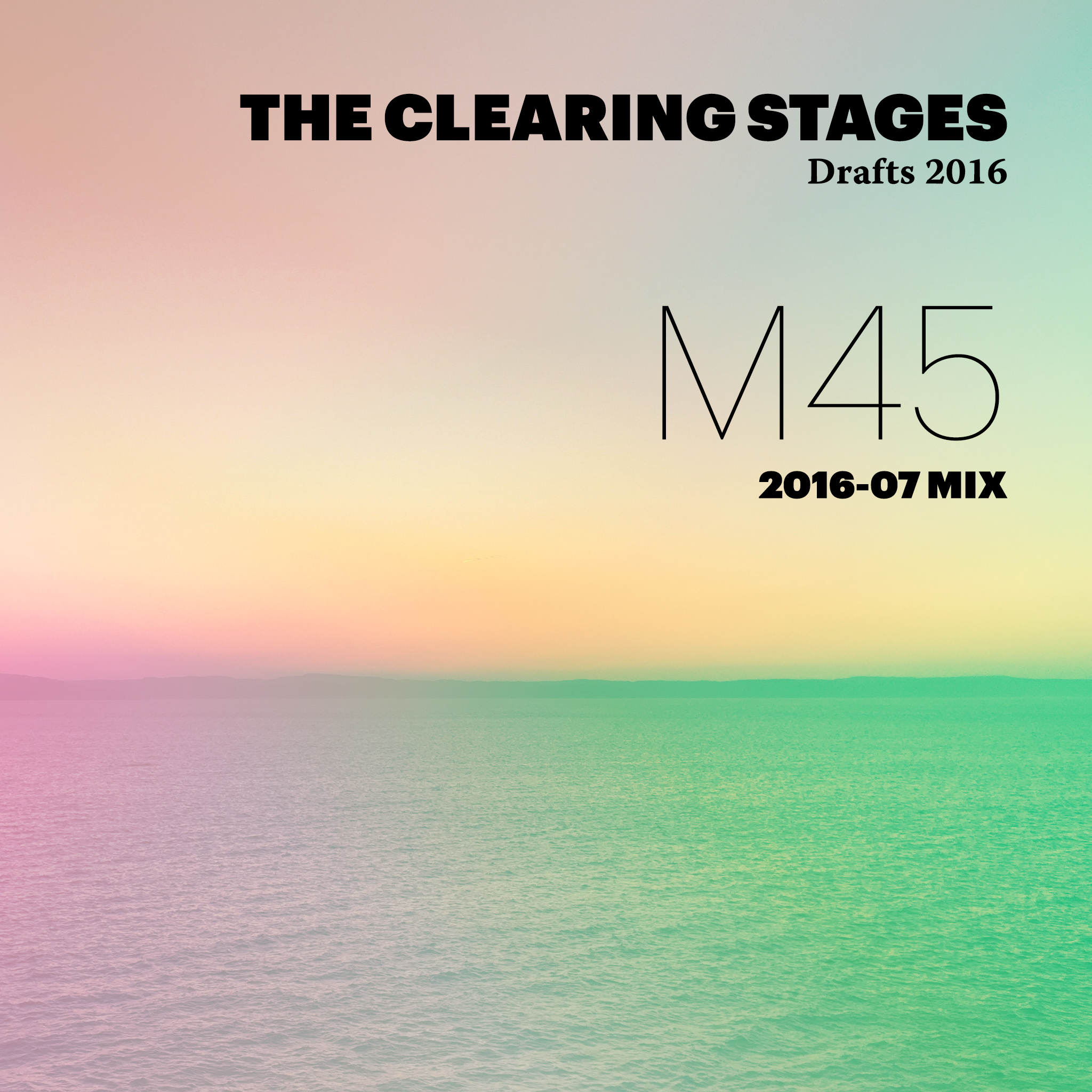

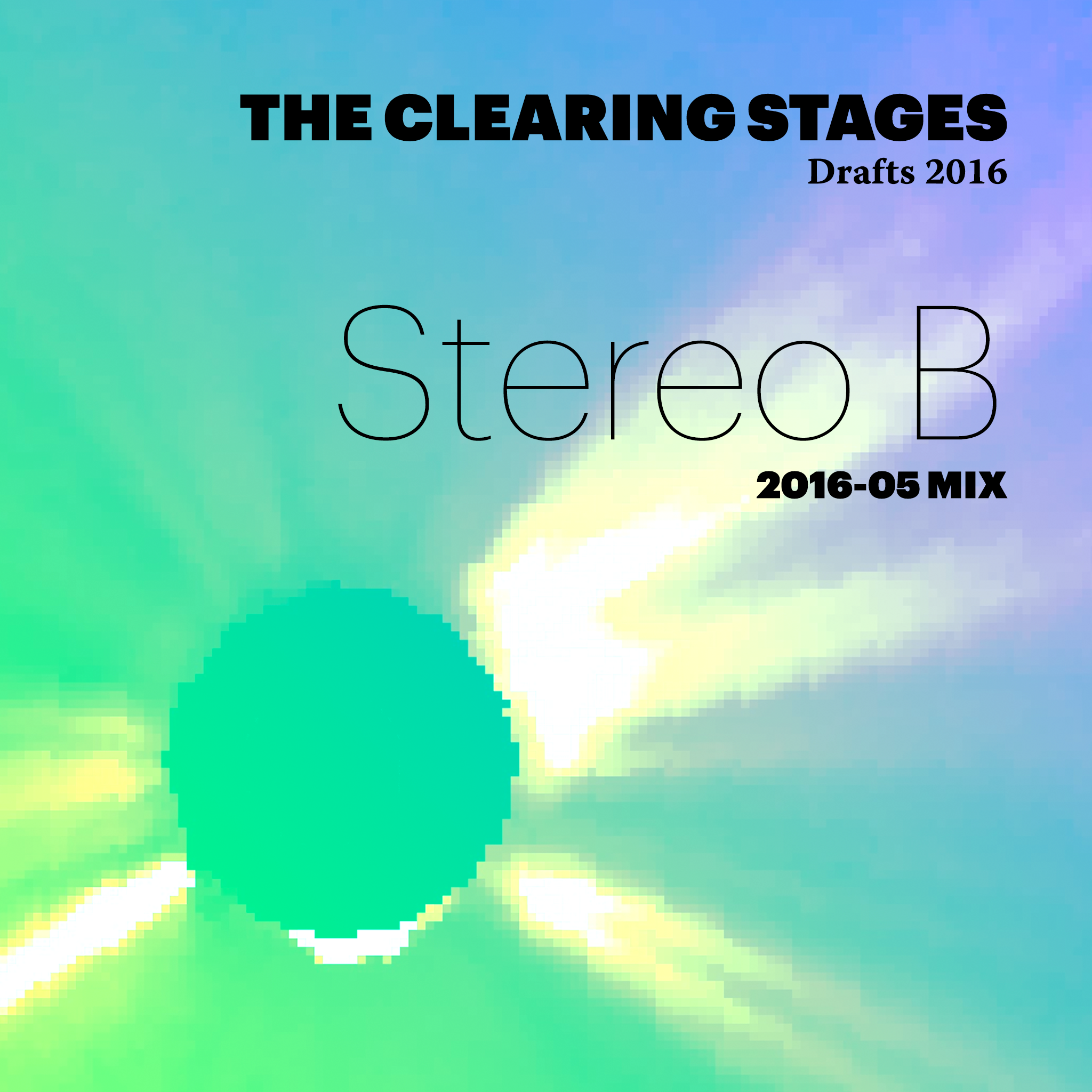
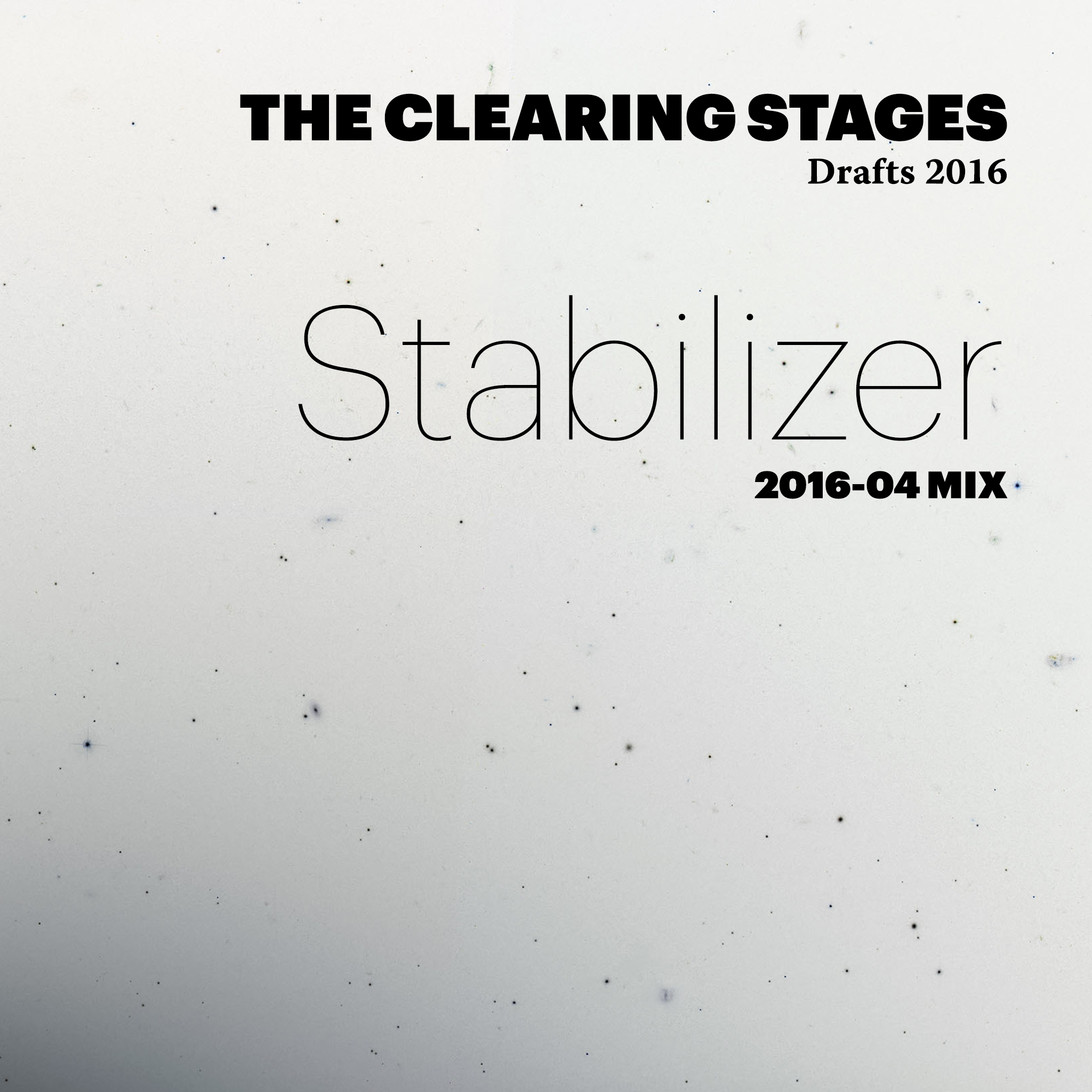
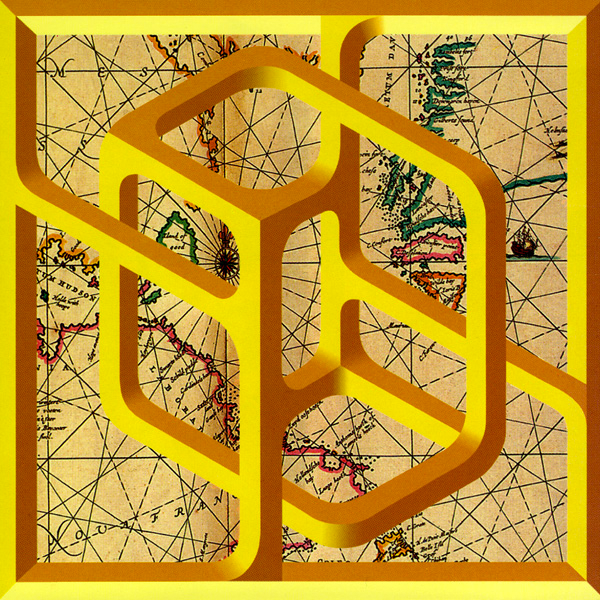 The Orb’s 1995 ambient/dub album
The Orb’s 1995 ambient/dub album 